It speaks your language.
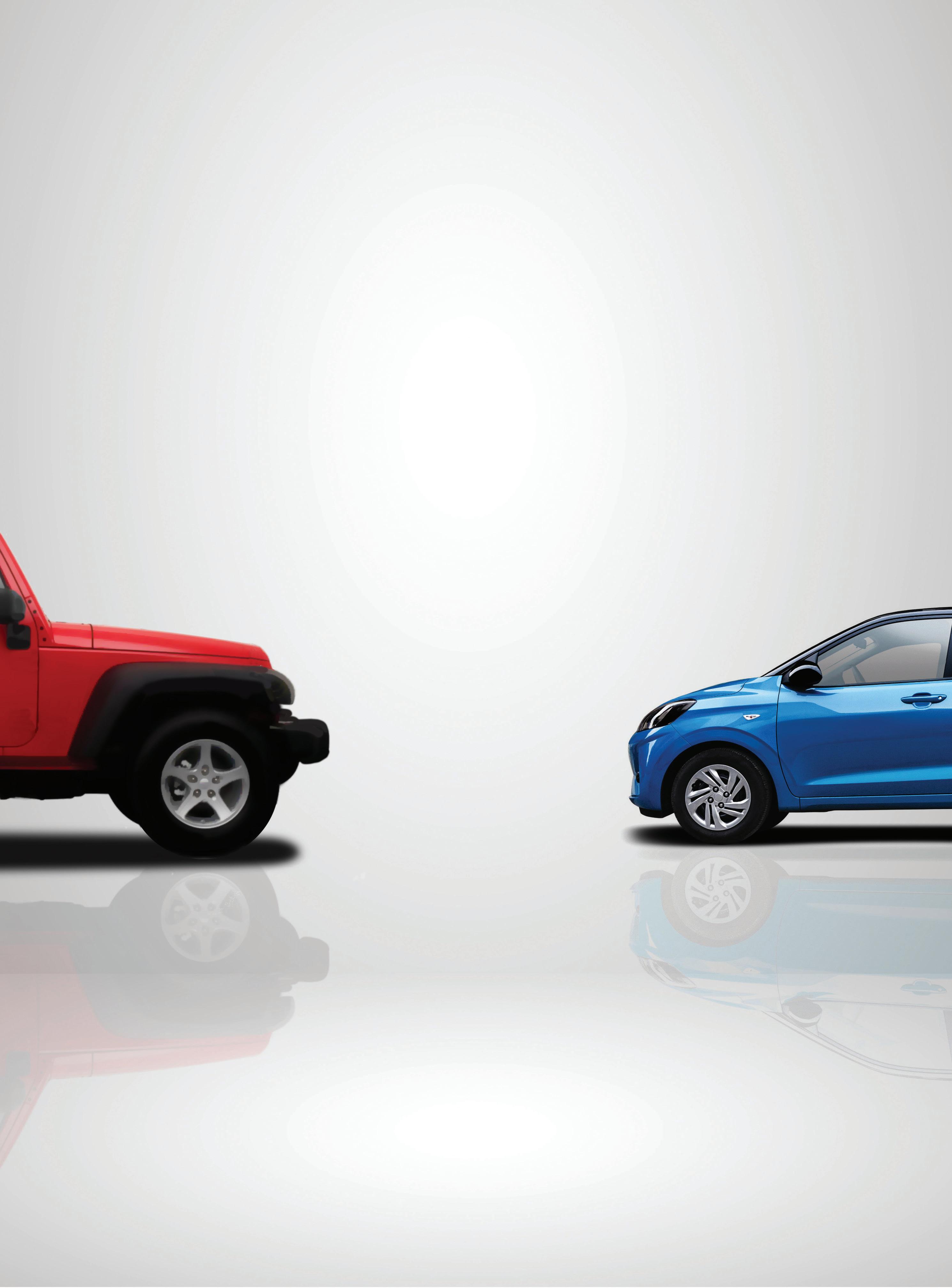


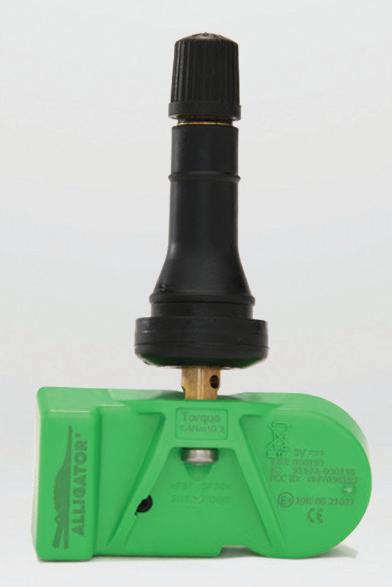



RS+ TPMS sensors from feature
RS+ TPMS sensors from Alligator feature OEM matched firmwares for 99.7% of vehicles on the road.

ADVERTISEMENT
Howdy. Domo arigato.
Simplicity
Sens.it RS+ TPMS sensors just work. Simple as that. They’re a snap to install and easy to program with our premium tools or your own.
Coverage
Nobody talks to more vehicles than our innovative Sens.it RS+ TPMS sensors. Our industry-leading sensors cover 99.7% of vehicles.
Functionality
Don’t let our simple sensor design fool you. Whether programmed or cloned, Sens.it RS+ TPMS sensors replicate full OEM functionality.
Support
Our US-based tech support is here anytime you need to talk. And all of our products are backed by 100 years of innovative German engineering.
Call: 855-573-6748
We’ve never met a stranger.

RS+ TPMS sensors talk to 99.7% of cars.
Hallo!
Ciao!

Let’s talk.




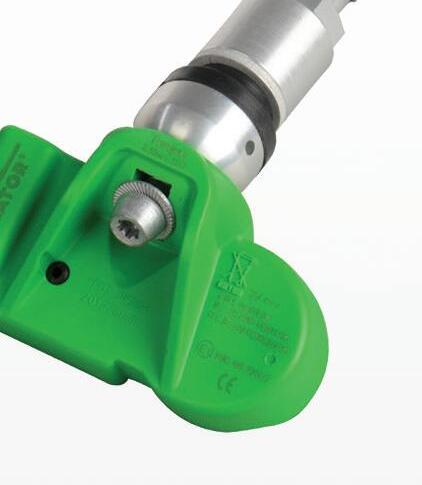
Hey!



Want to learn more about our customizable, universally compatible, cloneable Sens.it RS+ TPMS Sensors? We’re just a call away.
855-573-6748 | Alligator-tpms.com/MTD
SPEED RATINGS, SIZING AND MORE THE LATEST HP/UHP TRENDS MARKET VOLATILITY WHAT WILL IMPACT OTR TIRES IN 2024
KEEP AN EYE ON GLOBAL SHIPPING RECENT DISRUPTIONS COULD IMPACT YOUR BUSINESS

POINT-OF-SALE EVOLUTION
Systems offer more features than ever
February 2024 | Vol. 105, No. 2 | $10 | www.moderntiredealer.com


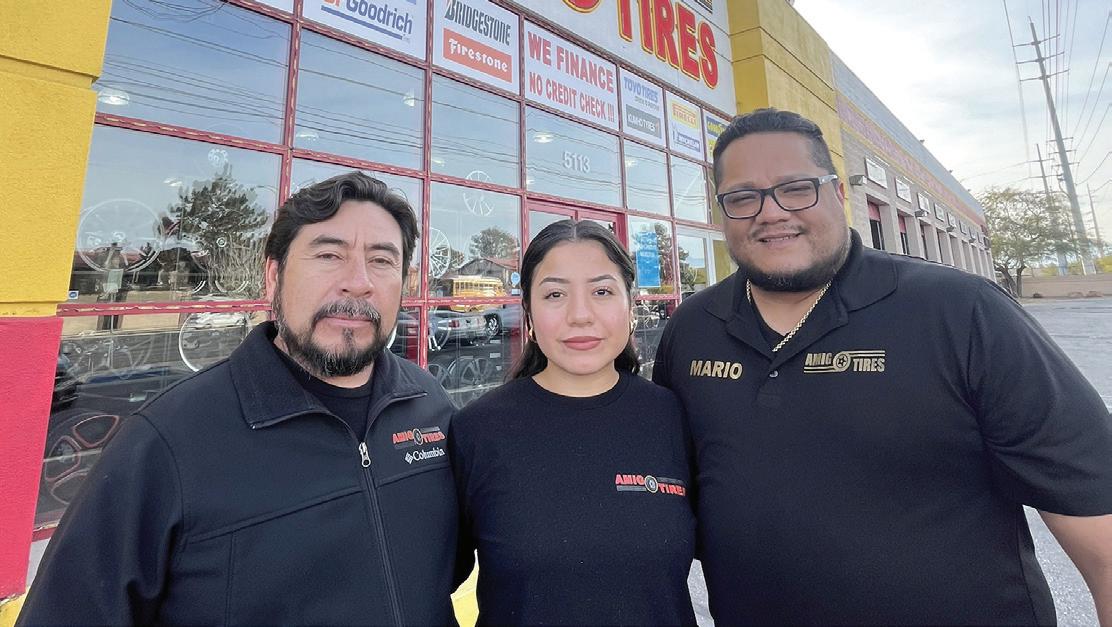
20
6
8
34
36
40
Tiremakers discuss the latest HP/UHP trends
Las Vegas dealership says personal touch is key to selling HP/UHP tires
Systems offer more features than ever
Best-One of Indy tests new tool to improve engagement
42
Today’s technicians expect more technology, ease of use Commercial Tire Dealer™
44
50
Are
What will impact OTR tires in 2024
Father
56





3 www.ModernTireDealer.com The Industry’s Leading Publication February 2024, Volume 105, Number 2 Modern Tire Dealer is a proud member of:
Speed ratings, sizing and more
‘We’re your amigos’
Point-of-sale evolution
Making Facebook a VIP experience
Automation and digitalization in mounting and balancing
Market volatility
‘It’s service, service, service’
and son lead Weaver’s Tire Service
AG Tire Talk: The benefits of using IF and VF tires
just one
many
Editorial
an eye on global shipping Recent disruptions could impact your business
Reduction in soil compaction is
of
4
Keep
Online News and navigation tools for MTD’s website
Industry News
looks for growth in North America
focus on sales team, dealers and new products
Numbers That Count Relevant statistics for an industry in constant motion
Your Marketplace Will tire prices come down in 2024? 2023 unit sales closed on a high note
Business Insight
to prevent theft at your dealership Proven strategies to protect your business
Dealer Development
to create customer loyalty Balancing customers’ expectations with your business needs
Mergers and Acquisitions
aren’t more tire dealerships going public? Private equity — that’s why
EV Intelligence
Linglong
Will
16
18
60
How
62
How
64
Why
66
you really listening to what EV customers need?
you truly listen, sales will follow 68 Focus On Industry Hankook says mutual profitability is a top priority ‘We are dealer focused’ 70 Focus On Dealers Point S achieves record expansion in 2023 ‘We believe we’re set for the future’ 72 TPMS Ford F-150 — 2023
Ad index
If
74
FEATURES DEPARTMENTS 34
Pictured on the cover: Mike Spitale, Van’s Tire Pros (Akron, Ohio)
Tires
Amigo
offers expert advice to its HP/UHP tire customers.
Photo: Amigo Tires
Global unrest and other factors could all play a part in the OTR tire market during 2024.
Photo: BKT
44
By
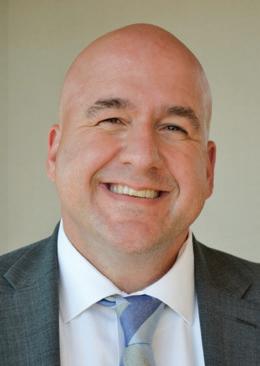 JMike Manges
JMike Manges
Keep an eye on global shipping RECENT DISRUPTIONS COULD IMPACT YOUR BUSINESS
ust when you thought the latest shipping crisis was a distant memory, here comes another disruptive situation. Though happening thousands of miles away from North America, continued attacks on container ships in the Red Sea — which showed no sign of abating at press time — have the potential to impact tire importers, dealers and distributors who order products from overseas plants and/or work through a manufacturer or distributor that brings in tires from off-shore points of origin.
In response to the seemingly nonstop attacks on their boats, shipping companies have been diverting vessels away from the Suez Canal, which connects the Red Sea to the Mediterranean Sea, to protect their people, freight and assets.
A growing number of logistics companies are sending ships around the southern tip of Africa rather than risk assault.
“Nearly all container services previously using Suez have decided to divert via the Cape of Good Hope,” says Simon Heaney, senior manager, container research, for Drewry, a leading provider of consulting services to the global shipping industry.
While the Suez Canal remains open, “the decision to reroute is more of an exercise in risk management on the part of carriers.”
Heaney notes that North American importers have been “impacted less directly” from container ship diversions than their European counterparts “as services from Asia mainly use West Coast gateways” across the Pacific or by way of the Panama Canal.
But that doesn’t necessarily mean the North American tire market will be immune to the knock-on effect of what’s happening in the Middle East.
If the Red Sea situation persists for the rest of the year, global container capacity “will be greatly reduced, which will make the market tighter than it otherwise would have been,” according to Heaney.
“Shipping lines will have to adjust networks to cater for extra distances and time.”
Heaney says rerouting ships around the Cape of Good Hope adds about 10 days of shipping time from Asia to Europe.
This, of course, increases the expense of doing business for shipping companies, which then “reroute” their new costs to customers.
With that in mind, it’s worth taking a deeper look at the impact all of this is having in Europe, especially as it pertains to price.
In a Jan. 18 report from Drewry, Heaney wrote that “new (shipping company) surcharges related to the Suez crisis have quickly appeared under different nomenclatures, including Transport Disruption Surcharge, Emergency Operation Surcharge and Contingency Adjustment Surcharge, just to name three.
“One carrier told Drewry that because of the many additional costs related to the Suez Canal diversion are dynamic, it is very complex to break down and itemize all of the various cost com-
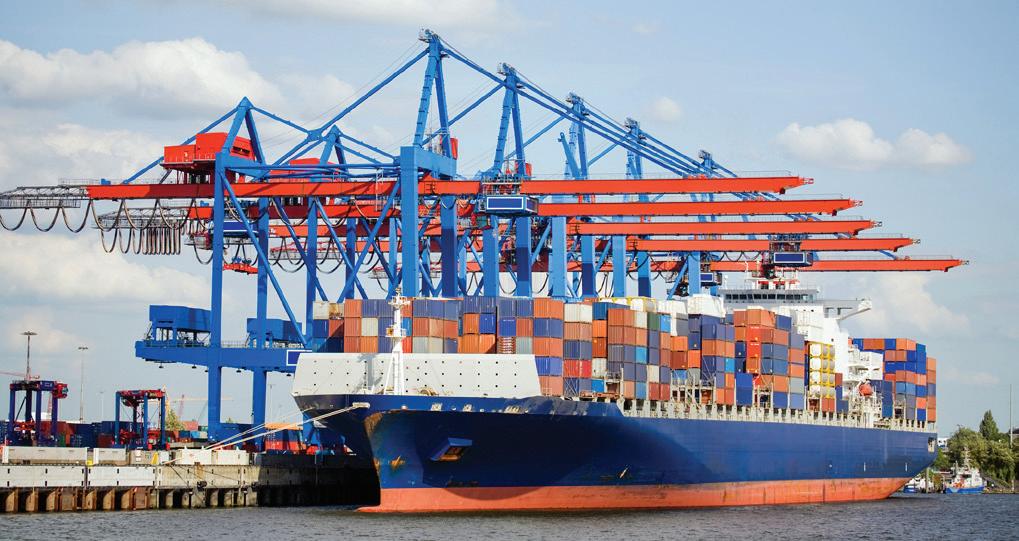
“Disruption is a proven recipe for driving up shipping costs and the more chaos it causes, the bigger the freight rate inflation will be,” says Simon Heaney, senior manager, container research, for Drewry, a
ponents that make up the overall surcharge price at any given time. These could involve things such as additional equipment utilization days, implementation and use of added shuttle services,” as well as “costs incurred due to higher sailing speed, additional storage charges, additional cost for crew being onboard for longer voyages” and other factors. (I imagine the cost of military escorts also factors into the equation.)
On the bright side, “the surplus of container ships is much greater today than it was during the pandemic,” which “provides more resilience to cope with disruptive events.”
The demand situation for most products is different today than during COVID-19 lockdowns, when “there was a surge in demand for physical containerized goods, which when coupled with logistics capacity shortages, sent shipping costs into orbit,” wrote Heaney. “Affected markets will be much tighter than they otherwise would have been, but there is sufficient spare capacity.”
A “worst case scenario” outlined by Drewry predicted that if the Suez Canal was avoided for the remainder of 2024, “assuming a 30% increase in trade distance for the roughly 30% of container ships capacity that previously transited Suez,” overall shipping capacity would be reduced by around 9%.
In Drewry’s report, Heaney noted that “disruption is a proven recipe for driving up shipping costs and the more chaos it causes, the bigger the freight rate inflation will be.”
COVID-19 proved that the world is more interconnected than anyone had ever imagined. I urge you to keep an eye on the global shipping situation. It will be worth your time. ■
If you have any questions or comments, please email me at mmanges@endeavorb2b.com.

4 Editorial
MTD February 2024
leading provider of consulting services to the global shipping industry.
Photo: ID6274873© Alptraum | Dreamstime.com

DIGITAL RESOURCES FOR THE INDEPENDENT TIRE DEALER
Stay tuned to MTD’s podcast!
The Modern Tire Dealer Show is available on Apple Podcasts, Spotify, Google Podcasts, iHeart Radio, Amazon Music, Audible and MTD’s website. Download it today!

Sign up for Modern Tire Dealer ’s eNewsletters to receive the latest tire news and our most popular articles. Go to www.moderntiredealer.com/subscribe
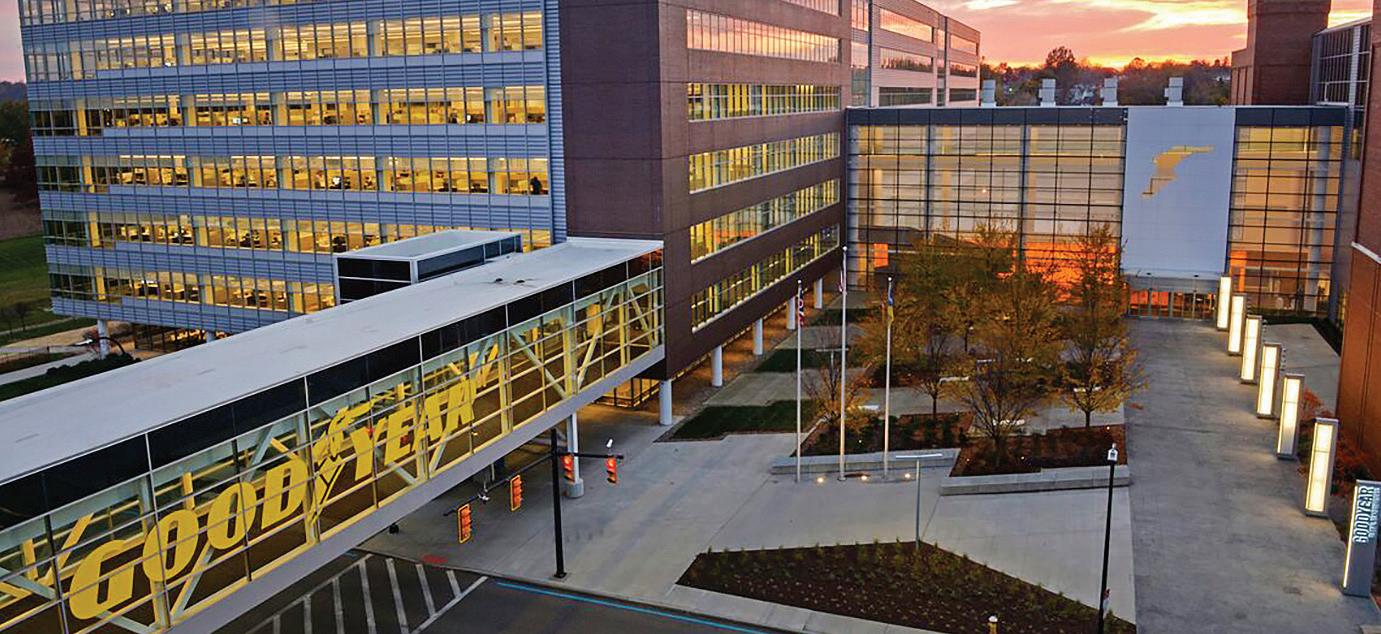
Leadership changes make headlines
Sometimes, one event or one company drives the news cycle and in early 2024, Goodyear Tire & Rubber Co. has had that role. There have been a number of personnel changes at Goodyear as of late, most notably the naming of Rich Kramer’s successor. Mark Stewart, Goodyear’s new president and CEO as of Jan. 29, comes to the tiremaker from Stellantis. Here’s a look at how that announcement shook up the top headlines of the month.
1. Goodyear to pay new CEO $20 million bonuses
2. Photos: MTD takes you inside Hankook dealer event
3. Photos: Black’s Tire Service celebrates 95th anniversary
4. Goodyear appoints Mark Stewart as CEO, president
5. Goodyear’s Steve McClellan to retire this year
6. Linglong looks for growth in North America
7. Tire Discounters continues to add locations
8. Tiremakers moved forward with big projects in 2023
9. RoboTire files for bankruptcy
10. Tire dealers share outlook for 2024
DIGITAL EDITION
Check out MTD ’s digital edition at the top of our website’s homepage.
SOCIAL MEDIA

Like us Facebook: facebook.com/ ModernTireDealer
3515 Massillon Rd., Suite 200 Uniontown, OH 44685 (330) 899-2200, fax (330) 899-2209 www.moderntiredealer.com
PUBLISHER
Greg Smith gsmith@endeavorb2b.com (330) 598-0375
EDITORIAL
Editor: Mike Manges, (330) 598-0368, mmanges@endeavorb2b.com
Managing Editor: Joy Kopcha, (330) 598-0338, jkopcha@endeavorb2b.com
Associate Editor: Madison Gehring, (330) 598-0308, mgehring@endeavorb2b.com
PRODUCTION
Art Director: Erica Paquette
Production Manager: Karen Runion, (330) 736-1291, krunion@endeavorb2b.com
ACCOUNT EXECUTIVES
Darrell Bruggink
dbruggink@endeavorb2b.com (608) 299-6310
Marianne Dyal mdyal@endeavorb2b.com (706) 344-1388
Sean Thornton sthornton@endeavorb2b.com (269) 499-0257
Kyle Shaw kshaw@endeavorb2b.com (651) 846-9490
Martha Severson mseverson@endeavorb2b.com (651) 846-9452
Chad Hjellming chjellming@endeavorb2b.com (651) 846-9463
MTD READER ADVISORY BOARD
Rick Benton, Black’s Tire Service Inc.
Jessica Palanjian Rankin, Grand Prix Performance
John McCarthy Jr., McCarthy Tire Service Co. Inc.
Jamie Ward, Tire Discounters Inc.
CUSTOMER/SUBSCRIPTION SERVICE
(877) 382-9187
moderntiredealer@omeda.com
ENDEAVOR BUSINESS MEDIA, LLC
CEO: Chris Ferrell
President: June Griffin
COO: Patrick Rains
CRO: Reggie Lawrence
Chief Digital Officer: Jacquie Niemiec
Chief Administrative and Legal Officer: Tracy Kane
EVP Transportation: Kylie Hirko
VP Vehicle Repair: Chris Messer
VRG Editorial Director: Matthew Hudson
Follow us X: twitter.com/ MTDMagazine @MTDMagazine

6 MTD February 2024
ModernTireDealer.com
Executive changes at the top of Goodyear Tire & Rubber Co. have attracted the attention of MTD readers.
Photo: Goodyear Tire & Rubber Co.
Modern Tire Dealer (USPS Permit 369170), (ISSN 0026-8496 print) is published monthly by Endeavor Business Media, LLC. 201 N Main St 5th Floor, Fort Atkinson, WI 53538. Periodicals postage paid at Fort Atkinson, WI, and additional mailing offices. POSTMASTER: Send address changes to Modern Tire Dealer, PO Box 3257, Northbrook, IL 60065-3257. SUBSCRIPTIONS: Publisher reserves the right to reject non-qualified subscriptions. Subscription prices: U.S. ($81.25 per year). All subscriptions are payable in U.S. funds. Send subscription inquiries to Modern Tire Dealer, PO Box 3257, Northbrook, IL 60065-3257. Customer service can be reached toll-free at 877-382-9187 or at moderntiredealer@omeda. com for magazine subscription assistance or questions. Printed in the USA. Copyright 2024 Endeavor Business Media, LLC. All rights reserved. No part of this publication may be reproduced or transmitted in any form or by any means, electronic or mechanical, including photocopies, recordings, or any information storage or retrieval system without permission from the publisher. Endeavor Business Media, LLC does not assume and hereby disclaims any liability to any person or company for any loss or damage caused by errors or omissions in the material herein, regardless of whether such errors result from negligence, accident, or any other cause whatsoever. The views and opinions in the articles herein are not to be taken as official expressions of the publishers, unless so stated. The publishers do not warrant either expressly or by implication, the factual accuracy of the articles herein, nor do they so warrant any views or opinions by the authors of said articles.

Linglong looks for growth in North America
WILL FOCUS ON SALES TEAM, DEALERS AND NEW PRODUCTS
Linglong North America Sales, the North American subsidiary of Shandong Linglong Tire Co., will focus on building its sales team, signing new dealers and rolling out new products in 2024.
“Linglong has been growing its business here in North America for 20-plus years,” says Geoff Doster, president of Linglong North America Sales.
Doster assumed his current role last summer after nearly two decades at TBC Corp., where he most recently served as executive vice president, as well as president and COO of TBC Brands LLC and TBC International.
“Linglong is very committed to our current, long-term, strategic partners, but we also understand we have to develop opportunities to provide value through our products and programs.
“Building and growing a local team to better support our dealers and growth objectives” will be a high priority for the company this year.
“We also want to add like-minded customers,” says Doster. “The industry, over the last couple of years, has seen consolidation in all channels.
“As a manufacturer, we want to ensure we’re working with our dealer partners, while making sure we adjust to their changing needs. This is a continual process.”
NEW PRODUCTS
In North America, Linglong sells Atlas, Crosswind, Leao, Gritmaster, Green Max and Evoluxx brand tires.
“When I look at Linglong’s business, we are very strong in the passenger car tire market,” says Doster, who adds that the U.S. passenger tire market “has recalibrated.”
Doster says he also sees an affinity in the marketplace “for segments where Linglong has traditionally played.

“We are aligned with the market — making sure we have products that are ready for any demand we may see.”
During 2024, Lingling North America Sales plans to bring an electric vehicle (EV) tire to North America.
“We’re very advanced in our EV products that are marketed in China and other markets. I see the EV market as growing in North America.
“We want to make sure we’re introducing products that will be able to cover” both plug-in EV and hybrid vehicle applications.
“Another segment we’re focused on is high-diameter tires — not only in passenger, but also light truck.”
And the company will expand its lastmile van offerings in 2024, according to Doster. “We want to be able to grow our brands and their reach and depth, in the sense of making sure we’re covering all market segments.”
MANUFACTURING INVESTMENT
Doster says Linglong has a global manufacturing strategy. Most of the company’s North American market tires are built at its plant in Thailand.
Linglong’s plant in Serbia, which recently came online, will supplement the company’s production in Thailand.
“We’ve made tremendous progress at our Serbia facility,” which, once fully operational, will produce 12 million passenger tire units annually, according to Doster.
Right now, the plant produces commercial truck tires.
“The plan is to produce 1.6 million TBR products” each year at the facility, when it’s at full capacity.
“We hope to be through phase one and two” of the factory’s development by the mid-point of 2024.
“There’s always continued investment in terms of our manufacturing facilities’ capabilities and efficiencies.
“We’ve made a lot of investments in manufacturing.
“And a lot of investment has been made in research and development.
“Long-term, we’re setting the stage to execute on our global strategy to be a leader in the market and then ultimately, have better customer collaboration and partnerships, where we can grow together,” adds Doster.
— Mike Manges
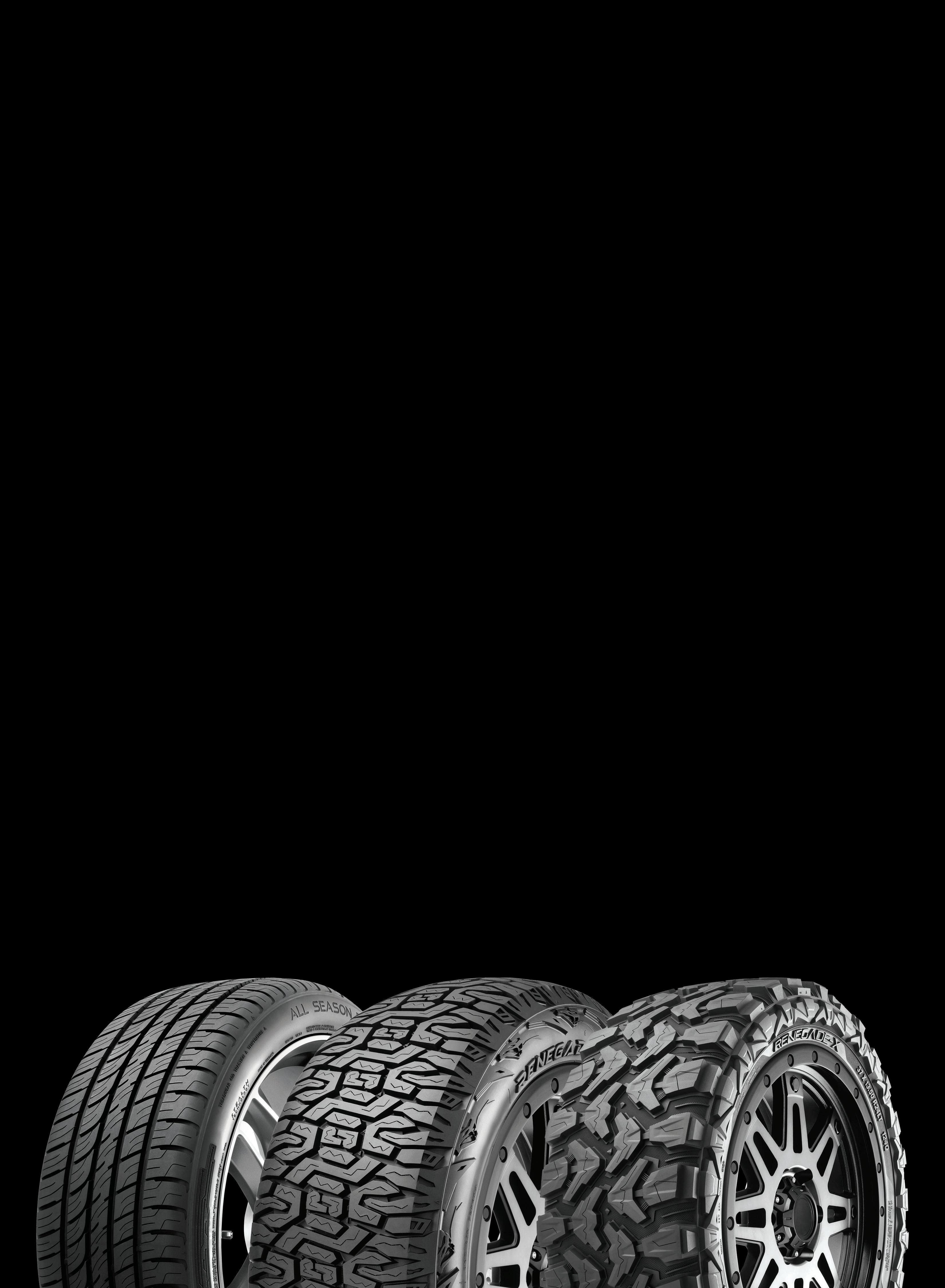
Industry News MTD February 2024
“Long-term, we’re setting the stage to execute on our global strategy to be a leader in the market,” says Geoff Doster, president of Linglong North America Sales.
Photo: Linglong North America Sales
8

Bites
Sentury has AvanTech
Sentury Tire USA has assumed full control of AvanTech Tires LLC’s sales and marketing operations, effective Jan. 1, 2024. Sentury Tire USA’s vision for the AvanTech TBR lineup includes a range of tires, including all-position, trailer, closed-shoulder, open-shoulder and other products.
Nexen goes to MSG
Attendees at Madison Square Garden events will see advertising from Nexen Tire Americas Inc. The Nexen logo will appear on numerous marketing assets, including digitally enhanced dashboards, billboards, in-arena branding, signage and more. In 2023, Nexen became the New York Rangers’ official tire partner.
TGI names sponsorship
Tire Group International LLC’s Cosmo brand is the official tire sponsor of Clean Culture, an automotive event organizer spanning 25 states and three countries. Clean Culture’s events feature numerous vehicles, entertainment drifting, burnout competitions and more.
SRNA promotes Klimm
Sumitomo Rubber North America Inc. (SRNA) has named Bob Klimm director of corporate accounts. Klimm started at SRNA in 2009 and has led the Falken brand commercial truck tire business since 2015. In this new role, he will focus on the growth and success of the company’s primary corporate accounts.
Ascenso honors techs
Ascenso Tire North America has unveiled its Ascenso Farm Service Truck Technician Program for farm service truck technicians. Ascenso is asking agriculture and construction tire dealers, end users or colleagues to nominate farm service truck technicians, starting on April 1.
Pirelli wins Porsche fitment
Pirelli & Cie SpA announced it is the original equipment manufacturer for the new Porsche Cayenne with the P Zero, P Zero Corsa and Scorpion Winter 2 tires.
Goodyear names new CEO
Goodyear Tire & Rubber Co. has appointed Mark Stewart as its new CEO and president. He succeeds Rich Kramer, who announced his retirement from the company in late-2023.
Stewart joins Goodyear from automaker Stellantis, where he served as a chief operating officer of North America and a member of the company’s group executive council.
Laurette Koellner, independent lead director of Goodyear’s board since 2019, also has become the Akron, Ohio-based tiremaker’s non-executive board chair. Stewart will be added to the Goodyear board as a director.
Steve McClellan, president of Goodyear’s Americas business since 2016, will retire in April after 36 years with the company.
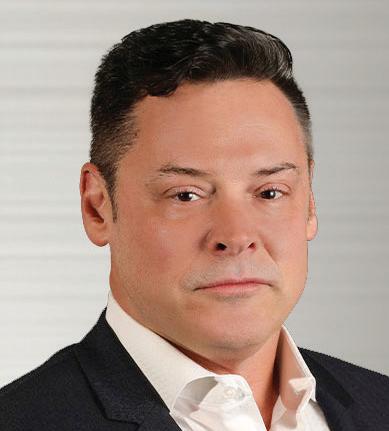
Before his current role, McClellan served as president of Goodyear North America, a position he assumed in 2011, and earlier led Goodyear’s North American commercial truck and consumer tire businesses.
Alma Tire acquires Jerry’s Tire
Alma Tire Companies, which is headquartered in Alma, Mich., has acquired Jerry’s Tire, a four-outlet dealership based in Lake Odessa, Mich. Terms of the deal, which expands Alma Tire’s footprint to 12 total locations, were not disclosed.
“We have had the goal of expanding our operations” throughout Michigan, says Alma Tire CEO Tony Grace.
In addition to Lake Odessa, Jerry’s Tire has stores in Flint, Mich.; Wyoming, Mich.; and in the greater Detroit, Mich., area.
According to Grace, Mark Carpenter, the longtime president of Jerry’s Tire, “had been looking for a buyer that would be a good steward of their business, employees and vendor and customer relationships.
“After a few months of discussion, Mark felt that Alma Tire was the company best-suited to carry Jerry’s Tire forward.
“Like Alma Tire, Jerry’s Tire is a family business,” says Grace. “Also like Alma Tire, Jerry’s Tire puts a heavy emphasis on service. So culturally, the values align very well. Then in looking at Jerry’s geographical footprint, their locations were in the markets we were wanting to break into next. It just made sense.”
The transaction is Alma Tire’s first acquisition “on the commercial side.” (Jerry’s Tire sells Goodyear, Dunlop, Kelly, Titan and Cooper brand products.)
Alma Tire, which was founded in 1954, goes to market in the commercial truck tire space under the name ATS Fleet Service.
Jerry’s Tire, which opened in 1948, “is and has been the premier name in the farm and agricultural tire sales and service sector” in its area, according to Grace.
ITC to review China TBR tariffs
It’s been five years since tariffs were imposed on commercial truck and bus tires made in China. That means it’s time for the International Trade Commission (ITC) to review whether those tariffs should remain in place.
Parties who wanted to weigh in on the issue had until Feb. 1 to do so.
In February 2019, both anti-dumping and countervailing duties were imposed on TBR tires built in China. At the time, the anti-dumping tariffs of 9% were imposed on most producers, while countervailing rates ranged from 20.98 to 63.34%.
And as is the case with any tariff investigation, at the five-year mark the ITC studies whether revoking the tariffs would cause a recurrence of injury to the domestic industry.
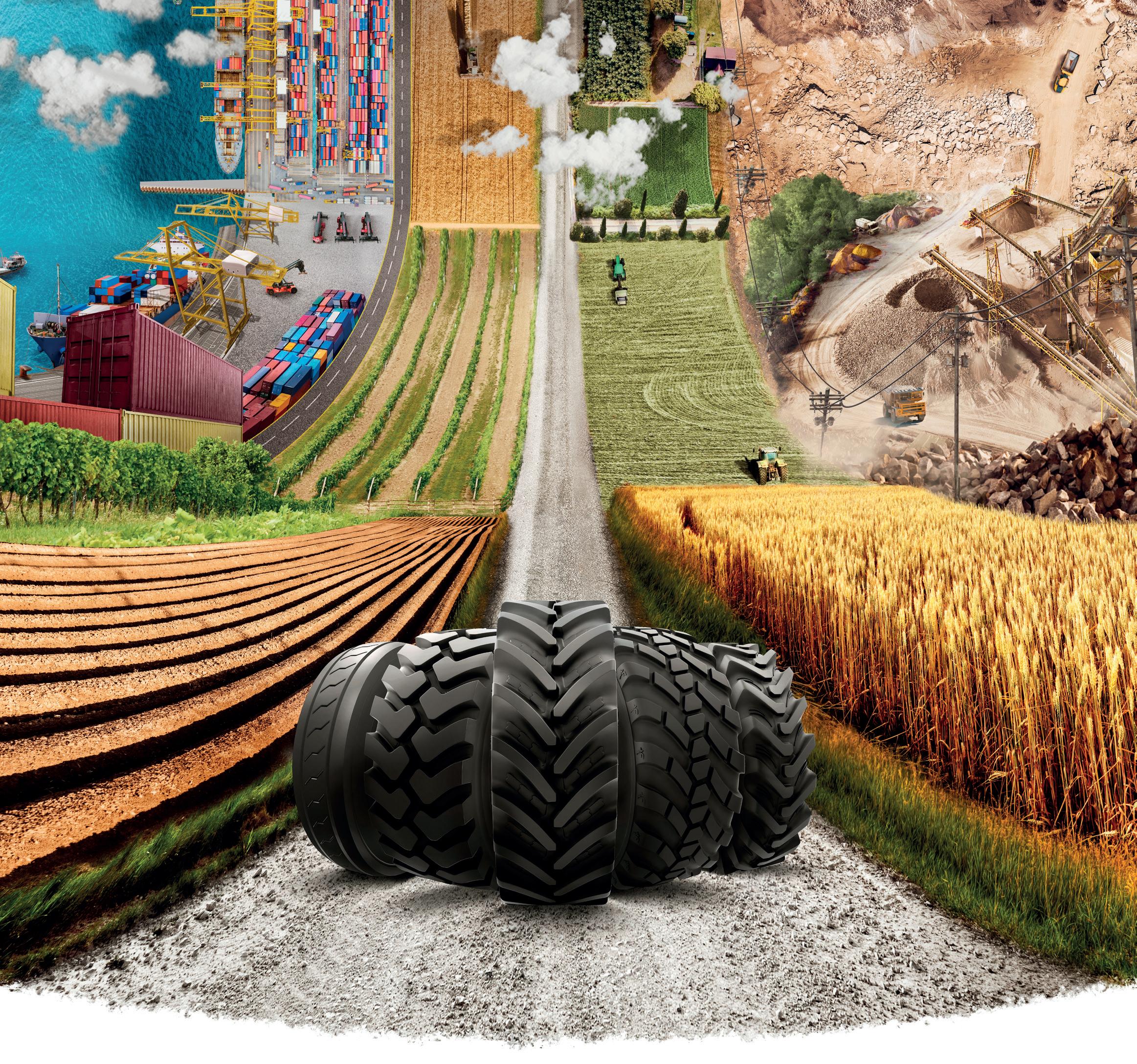
Industry News 10
Former Stellantis executive Mark Stewart is Goodyear Tire & Rubber Co.’s new CEO and president.
Photo: Stellantis
MTD February 2024


WHEREVER YOU ARE, BKT IS WITH YOU
A LONG WAY TOGETHER
matter how challenging your needs, BKT is with you offering an extensive product portfolio for every field such as agriculture, OTR and industrial applications. BKT provides concrete, reliable and high-quality solutions to your requests and working needs. Wherever you are, BKT is with you. BKT USA Inc. 202 Montrose West Ave. Suite 240 Copley, Ohio 44321 Toll free: (+1) 888-660-0662 - Office: (+1) 330-836-1090 Fax: (+1) 330-836-1091 Discover the BKT Radial Range
No
Bites
Monteith retires
Scott Monteith, one of the founding partners of the business now known as Best-One of Indy, has retired. Monteith, a founder of and Best-One of Indy vice president, partnered in 1986 with Paul Zurcher, Ray Monteith, Ross Kubacki and Dennis Dickson to form Indy Truck Tire Center, which from day one has partnered with the Best-One Tire Group.
Telle Tire opens new store
Telle Tire & Auto Service Inc. opened its 25th location in January 2024, following two recent acquisitions in the St. Louis, Mo., metro area. Telle Tire has acquired Rasch Automotive Service Center in Kirkwood, Mo., which has operated in the St. Louis suburb since 1944. Telle Tire President and CEO Aaron Telle says the Rasch Automotive business will transition over time to the Telle Tire brand and add a larger mix of tires.
Tire Discounters expands
Cincinnati, Ohio-based Tire Discounters Inc., one the 10 largest tire dealerships in the U.S., says it has added more than 40 locations to its network within the last two years. Locations added during 2023 include stores in Loganville, Dawsonville, Fayetteville and Kennesaw, Ga., plus a location in Alcoa, Tenn. In addition, the dealership added two stores in the Cincinnati suburbs.
Straightaway Tire grows
Straightaway Tire & Auto has acquired two Minnesota businesses — Maple Grove Auto Service and Warzecha Auto Works. Maple Grove Auto Service is a full-service auto repair facility in Maple Grove, Minn., while Warzecha Auto Works is based in Zimmerman, Minn.
New owner for Pilot
Berkshire Hathaway Inc. has finalized its acquisition of the Pilot Flying J truck stop network. Founded in 1958, Pilot Travel Centers bills itself as “the largest operator of travel centers in North America, with more than 750 locations across 44 states and six Canadian provinces.”
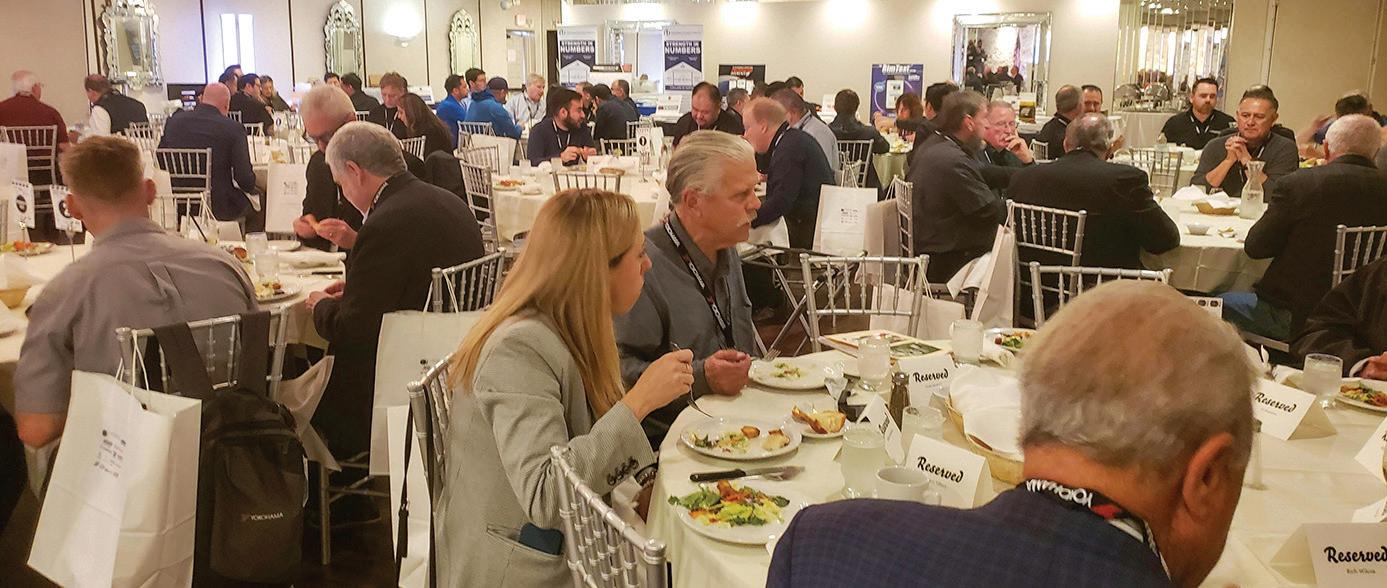
Record turnout for CTDA luncheon
Arecord number of attendees gathered for the 2024 California Tire Dealers Association (CTDA)/1-800EveryRim New Year luncheon on Jan. 18.
The more than 90 CTDA members heard from industry speakers Mike Spagnola, CEO and president of the Specialty Equipment Market Association (SEMA); Dick Gust, CEO of the Tire Industry Association (TIA); and Joel Ayres, executive director of the Automotive Aftermarket Charitable Foundation (AACF).
Spagnola told attendees that SEMA had a terrific 2023 and that attendance at the 2023 SEMA Show was up 16% from the previous year.
Spagnola said pre-registration for the 2024 SEMA Show is ahead of last year’s pace and work is underway to attract more companies to the show.
Gust talked about ongoing efforts surrounding Right to Repair, as well as the importance of supporting organizations like CTDA and TIA.
Ayres talked to CTDA members about the focus and work of the AACF and invited them to get involved in giving back to the industry.
Chris Barry, president of the CTDA, said he was pleased with the event and noted that “the crowd was enthusiastic” and engaged throughout the presentations. Barry said the luncheon also had a new feature — a small trade show.
Barry said tire dealers in California should join CTDA because “it helps with legislation (and) state policies. You’ve got to have a voice.” (The association maintains a lobbying presence in Sacramento, Calif.)
Neil Mellen, Edwin Pilger die
Neil Mellen, who founded Town Fair Tire in 1967, has died. He was 90 years old. Mellen attended New York University while working at his father’s auto parts store. In 1967, he opened his first Town Fair Tire store in Fairfield, Conn. Under his direction, Town Fair Tire grew to 115 stores throughout New England.
According to Mellen’s obituary, “the success of the company was Neil and his management team. Neil was a visionary with keen intellect — a man of uncommon compassion and integrity.”
Edwin Fredrick Pilger, a past president of the Texas Tire & Automotive Association (TTAA) and founder of Pilger’s Tire & Auto Center in College Station, Texas, also recently died. He was 92 years old.
Pilger purchased an Exxon gas station in College Station, Texas, in 1971 and opened Pilger’s Tire & Auto Center three years later with his wife, Doris.
Pilger’s Tire & Auto Center continues today and is operated by Edwin’s son, Rick Pilger, and Rick’s wife, Beverly.
Edwin also was a founding member of the TTAA, then known as the Texas Tire Dealers & Retreaders Association. He served on its board of directors and as president from 1989 through 1991.

News 12
Industry
MTD February 2024
More than 90 California Tire Dealers Association members attended the group’s new year luncheon, which took place in mid-January.
Photo: CTDA






Bites
TBC hires Stearman
TBC Corp. has appointed Chris Stearman to the newly created role of chief supply chain officer. He will be responsible for supply chain strategy, planning, purchasing, manufacturing and more for the company. Stearman recently served as vice president of supply chain operations leader for Tyson Foods.
Ultimate ADAS update
Hunter Engineering Co.’s Ultimate ADAS system has been approved for use by Nissan and Infiniti dealerships.
Honda and Accura approved use for its dealerships earlier in 2023. Ultimate ADAS combines alignment technology and a target placement system for around-the-vehicle coverage.
Turbo, Ireland team up
Turbo Wholesale Tires LLC has announced its new brand partnership with Kathy Ireland Worldwide (kiWW), along with a new ambassador for its Lexani brand. Actress Kathy Ireland will serve as Lexani’s brand ambassador and will apear in promotional campaigns.
ATD adds Steer to Radius
American Tire Distributors Inc. (ATD) is adding Steer’s customer relationship management (CRM) tool to its new Radius digital hub. “This partnership will bring first-class marketing technologies to ATD’s new digital hub, Radius, and allow customers to streamline their marketing operations,” say ATD officials.
Victor Capital buys Coats
Victor Capital Partners, a middle market private equity firm, announced it has completed the acquisition of the Coats Co. from Vontier Corp. Terms of the deal have not been disclosed. Coats’ current manufacturing location and office in LaVergne, Tenn. will serve as headquarters of the newly independent company.
Mayhew names director
Mayhew Steel Products Inc. announced the appointment of Brian Reznik Sr. as its new director of sales. In his new role, Reznik will expand Mayhew’s brand reach, drive revenue growth, identify new market opportunities and more.
Tiremakers take future tech to CES
Anumber of tire manufacturers highlighted their future mobility solutions at the 2024 Consumer Electronics Show (CES) in Las Vegas, Nev.
Bridgestone Americas Inc. discussed “how its end-to-end customer experience, comprised of a suite of solutions, is driving sustainability, efficiency, safety and productivity for fleets large and small,” and highlighted its Bridgestone Fleet Care program, which it describes as “an end-to-end resource for fleets.

“Fleet Care provides end-to-end solutions for fleet management, leveraging sophisticated platforms to help keep vehicles, assets and drivers safe and operating efficiently. These solutions include GPS tracking, video telematics, driver behavior management, accident reduction solutions, route optimization and asset utilization tools.”
According to Bridgestone officials, another component of Bridgestone Fleet Care is Bridgestone’s ENLITEN technology, which “marks a major pivot in how the company approaches tire design to deliver both dynamic performance and increased use of renewable and recycled materials.
“Bridgestone’s recently announced expansion to its Warren County, Tenn., tire plant will integrate ENLITEN technology for commercial applications.”
The company “aims to integrate the exceptional capabilities of ENLITEN technology across its business, providing excellence in casing durability, retreadability, rolling resistance and wear for all applications. With ENLITEN, Bridgestone will develop and deliver ENLITEN technology- equipped tires customized for customers, all while working to exceed customer and market demands.”
Bridgestone also highlighted its suite of tire monitoring and management solutions. “By making tires smarter through real-time tire monitoring, these solutions are designed to help fleets reduce tire costs, increase productivity and improve safety,” say Bridgestone officials.
Goodyear Tire & Rubber Co. announced plans for new collaborations and unveiled a new tire, the Goodyear ElectricDrive 2, which is an all-season tire designed for electric vehicle (EV) applications.
Available in May 2024, the Goodyear ElectricDrive 2 will come in 17 sizes to fit EV sedans and CUVs, including the Tesla Models Y, 3 and S; the Ford Mustang Mach-E and others.
More consumers pick independents
Consumers are turning to aftermarket repair shops sooner in the vehicle’s life cycle than before, according to research from IMR Automotive Research.
IMR research trends show that over the past decade, car dealership service centers are losing preference to aftermarket service providers like independent tire dealerships and others.
“Aftermarket outlets have been increasing in share for vehicle repairs and services in younger model vehicles over new car dealerships over the last 10 years, mainly due to convenient location and price,” say IMR officials.


Industry News 14
MTD February 2024
Bridgestone Americas Inc. was among the tiremakers that highlighted new technology and fleet solutions during the 2024 Consumer Electronics Show.
Photo: MTD
More vehicle owners are turning to independent auto service providers, according to IMR Automotive Research.
Photo: Virginia Tire & Auto LLC

Numbers ThatCount
Relevant statistics from an industry in constant motion
3
Number of new passenger tire sizes introduced to the market in 2023.
Source: Tire & Rim Association and MTD Facts Issue


15.8 MILLION
Units of medium truck tire retreads produced in 2023 in the U.S.
Source: MTD Facts Issue
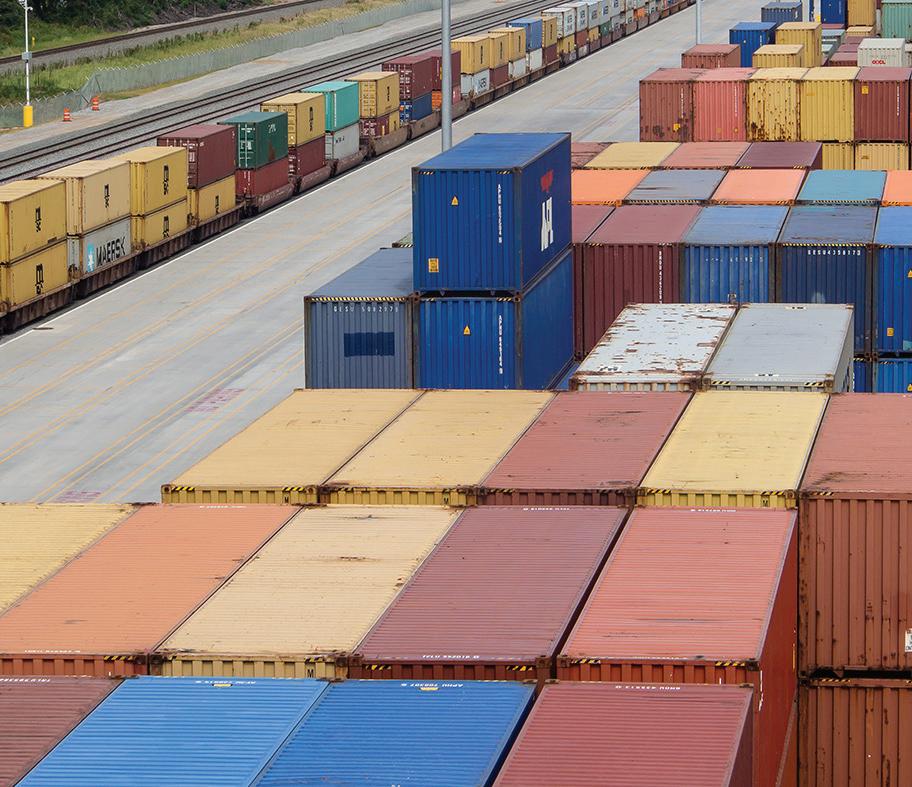
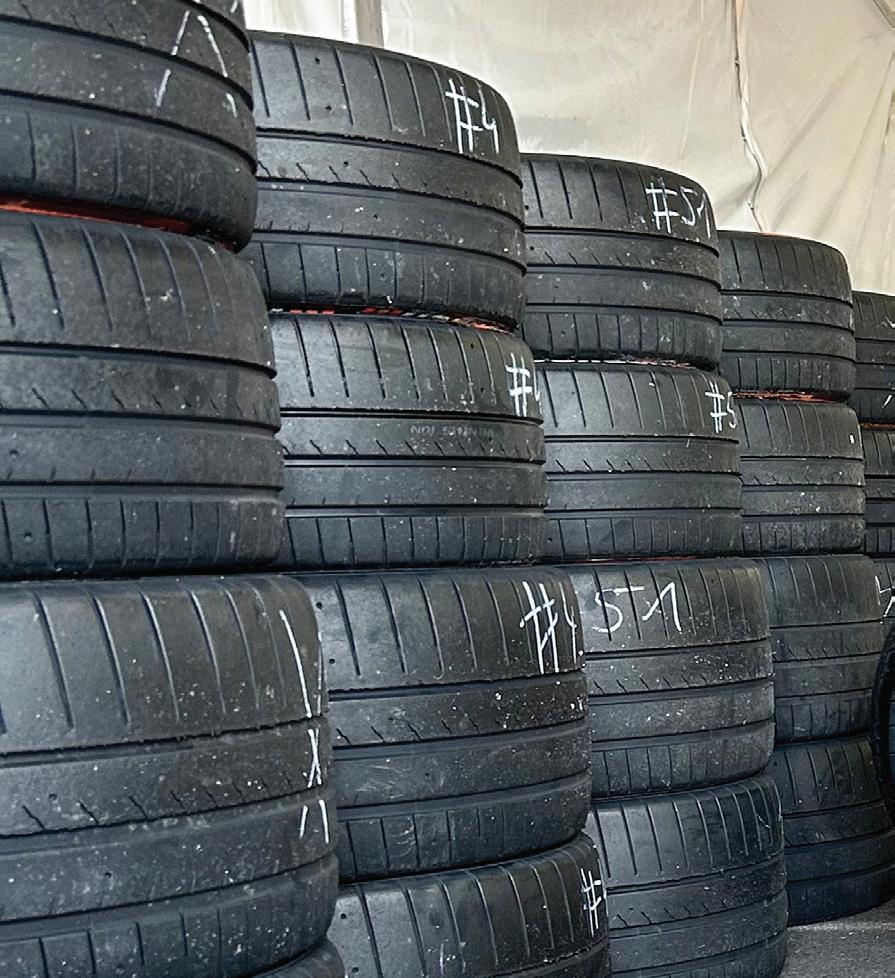
66% Independent tire dealers’ share of the consumer tire retail channel.
Source: MTD Facts Issue
Photo: MTD
35.3 MILLION
of


62% Percentage of independent tire dealerships with only one location.
Source: MTD Facts Issue
Photo: Hank’s Tire
16
Number
U.S. passenger tire units that came from Thailand in 2023.
Source: MTD Facts Issue
Photo: South Carolina Ports Authority
MTD February 2024
Photo: Toyo Tire Corp.
Photo: Bridgestone Americas Inc.

GROUNDSPEED’S VOYAGER HP ULTRA-HIGH PERFORMANCE TIRE DELIVERS ENHANCED HANDLING AND TRACTION PERFORMANCE. THIS UHP FEATURES THE FOLLOWING:
GX SILICA COMPOUND


TO BECOME A GROUNDSPEED DISTRIBUTOR CONTACT 305.621.5101
Your Marketplace
 By John Healy
By John Healy
RWill tire prices come down in 2024?
2023 UNIT SALES CLOSED ON A HIGH NOTE
etail sellout trends in December turned positive, with dealers seeing retail unit sales growing 1.1% yearover-year in the month, following a flat November. It was far from robust, but just three of the twelve months in 2023 saw positive sellout trends, thus the December result is an improvement compared to the majority of the year.
Regionally, the Southeast saw the strongest trends, up double digits compared to a year ago. Based on feedback from the tire dealer community, it appears the positive momentum in December 2023 was mainly due to outsized results from the Southeast region, as several industry contacts indicated sales were slow for the time of year, given the mild winter.
The consumer trade-down dynamic continued in December, as dealers who saw the most positive momentum indicated this was due to higher sales of tier-two and tier-three tires.
We have long felt that last year’s “green winter” may provide a catch-up period for replacement tire sellout. Given this, we would not be surprised to see sellout levels in January on the positive side of the ledger, with a continued shift to lower-tier brands.
Miles driven trends were again positive in December, with our miles driven momentum index registering a 1.8% increase year-over-year and that follows a 2% gain in November. For 2023 as a whole, eight out of 12 months had positive
miles driven gains, which was an improvement from the lackluster 2022. From our view, the tire replacement industry and broader automotive aftermarket are seeing a healthier backdrop compared to this time a year ago.
OUTLOOK ON TIRE PRICES
In aggregate in 2023, our tire raw material index fell 9.7% from 2022 levels, though with the lapping of price declines on the horizon, we expect the rate of decline to continue to diminish as we move forward. And it is notable, in analyzing specific input costs, that natural rubber prices climbed 14.5% during the fourth quarter due to heavy rainfall in Southeast Asia that put pressure on supply. Carbon black prices also increased during the quarter, while oil, synthetic rubber and tire fabric and cord prices fell. With a level of stability in raw material prices and waning demand for premium-tire tiers, we wonder if an incremental price concession could be on the horizon from some tire manufacturers.
However, our surveys continue to point towards a level of stickiness regarding upper-tier tire prices. That said, we do see the potential for price decreases at some point in 2024, as raw material costs continue to cool, inventory levels appear to be more normalized and manufacturers may concede some price in order to encourage wholesalers to begin taking on more inventory.
Snapshot of Dealer’s PLT Tire Volumes (Year-Over-Year Change)
LOW PRICE LEADERS
Despite positive volume trends, recent dealer commentary suggests consumer demand for passenger and light truck replacement tires was negative on a net basis, compared to December 2022. One out of four of our dealer contacts saw negative demand trends in December, down from the 10% who reported downward trends in November. Dealer feedback indicates the bulk of consumer demand in December was in lower-priced categories.
We continue to believe there is a hidden level of pent-up demand in the tire replacement market due to snowfall a year ago being consolidated into a few big storms, which shortened the window for weatherrelated tire purchases.
We still see a scenario in which demand returns to positive territory as vehicle owners pursue needed maintenance when winter weather arrives.
MIXED TRENDS
Our dealer survey indicated tier-two brands were the most in-demand, and we continue to see tier-two and tier-three tires swapping places month after month at the top of the chart, while tier-one tires remain in last place in our rankings for the third straight month. One dealer told us he believes the shift away from the top tier will continue in 2024.
Given the elevated prices that remain for premium brands and the inflationary environment that is stretching consumers’ wallets, it seems logical consumers continue to trade down. Longer term, we continue to believe that consumers will opt for tier-two tires as a balance of cost and performance. ■
John Healy is a managing director and research analyst with Northcoast Research Holdings LLC, based in Cleveland, Ohio. Healy covers a variety of subsectors of the automotive industry. If you would like to participate in the monthly dealer discussions, contact him at john.healy@northcoastresearch.com.

18 MTD February 2024 Oct-22 Nov-22 Dec-22 Oct-23 Nov-23 Dec-23 Average Increase 50% 57% 13% 20% 50% 31% 40% Flat 20% 29% 49% 20% 10% 13% 26% Decline 30% 14% 38% 60% 40% 56% 34% Total 100% 100% 100% 100% 100% 100% 100% SOURCE: NORTHCOAST RESEARCH ESTIMATES















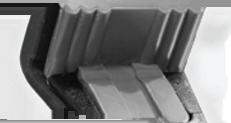

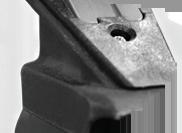



Two Machines. One Price. Limitless Performance. www.rangerproducts.com *Price valid until March 31st, 2024. **Free shipping to direct shipping points within the 48 contiguous United States only. © 2024 BendPak Inc. Ranger Products is a registered trademark of BendPak. Revolutionize your tire and wheel service center with the ultimate pairing of precision and efficiency. Our combos redefine the standard, bringing you cutting-edge features without the hefty price tag. Elevate your services, amplify your efficiency, and see a direct impact on your profits. Don’t miss out on this opportunity to upgrade your workshop to the next level of performance. Connect with us at 1-800-253-2363 to speak with our experts or explore our combo offerings at www.bendpak.com. Discover the innovation, efficiency, and satisfaction that only Ranger can deliver – brought to you by BendPak. Tire Shop Package Includes: (1) DST30P Wheel Balancer + (1) R980AT Tire Changer + (1) Tape Wheel Weights Blk. & Slv. 1400 PC. 24 Month Warranty OEM Approved Max Performance Free Shipping** RimGuardTM Wheel Clamps Forged Steel Foot-Pedal Controls High-Volume Storage Wheel Weight Dispenser Stay Hold Brake Pedal Precision-machined, Hardened-Steel 40mm Shaft Easy-to-Read LED Control Panel Auto Hood Start Adjustable Bead Breaker Power Assist Tower Swing-Arm Bead Handling Tools SPEED Tire Shop Package SKU# 5140127 $8,320* Model: DST30P Model: R980AT
Speed ratings, sizing and more TIREMAKERS DISCUSS THE LATEST HP/UHP TRENDS
By
Madison Gehring
As the automotive industry hurtles into a new era of sustainability and performance, tire manufacturers are at the forefront of innovation, striving to meet the demands of customers seeking high performance (HP) and ultra-high performance (UHP) tires.
As the market for these products rapidly evolves, tire manufacturers provide updates on the latest HP and UHP tire trends and technologies in this MTD exclusive.
MTD: What new trends in HP and UHP tires are you seeing right now?
Brandon Stotsenburg, vice president of automotive, American Kenda Rubber Industrial Co. Ltd.: Kenda sees several key trends in the North American market in the true performance segment. First, HP tires have been moving from H-rated to primarily V-rated for new vehicle applications. UHP further segments into summer and all-season, with UHP all-season growing increasingly more prevalent.
Summer UHP breaks down further to include max performance and competition tires that are often stamped DOT for street use, but not seen outside of weekend competition. There has been an increasing trend to see UHP tires in weekend competitions. Kenda has translated the street performance that we demonstrate with our Vezda brand through our DOT racing activities, competing on the same tires that we sell via our Kenda retailers and we identify as “Podium2Pavement.”
“Kenda sees the primary need for the UHP segment innovation for a true fourseason tire that offers all of the dry, wet and winter benefits that are available in grand touring tires now offered by leading brands,” says Brandon Stotsenburg, vice president of automotive, American Kenda Rubber Industrial Co. Ltd.
We learn and improve the materials and construction using the racing activities that translate directly to the end consumer for UHP driving.
Another trend has been for many of the crossover and small SUV applications to have performance requiring UHP tires. As these are automotive platforms with suspension systems, the tire applications are increasingly reflecting the necessary performance. This is particularly apparent with EV vehicles that often require the high-speed ratings of UHP tires.
Steven Liu, vice president of product development, Hercules, American Tire Distributors Inc.: We are seeing the trend towards small- to mid-size (and) even full-size CUV/SUV and electric vehicle (EV) applications for performance tires, thus pushing for higher rim diameters sizes on the OEM side, which ultimately will trickle down to replacement tire demand. Beyond the traditional classification method between HP/UHP (tires), with speed rating, rim diameters, load index and specific performance attributes such as dry/wet traction, nowadays there’s a bigger push for lower rolling resistance and this (has) resulted in a diverse assortment of performance-oriented products.

develop is geared towards the driver, with vehicle dynamics in mind.
Karl Jin, divisional head of product and pricing for passenger car and light truck, Apollo Tyres Ltd. (Vredestein): We continue to see the broad prolifera-
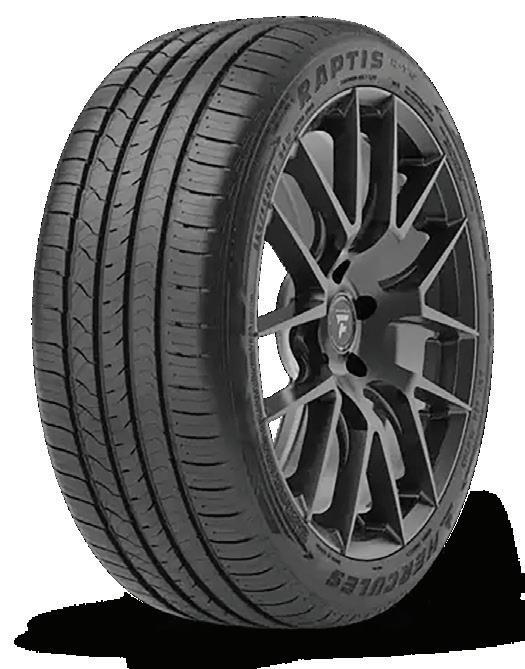
“We are seeing the trend towards small- to mid-size (and) even full-size CUV/ SUV and electric vehicle (EV) applications for performance tires, thus pushing for higher rim diameters sizes on the OEM side,” says Steven Liu, vice president of product development, Hercules, American Tire Distributors Inc.
tion of HP and UHP products across the industry, with a noticeable trend around expanded sizing as tire manufacturers cater to CUV and SUV drivers. In addition, there’s a market shift underway, as some all-season volume transitions to the allweather category. UHP’s summer demand holds steady, with minimal adjustments.
We believe this evolution provides a great opportunity for our customers to optimize margin and (place) a renewed focus on the performance segment. At the end of the day, we believe as the car parc has evolved, while there are many performance sub-segments, our goal is making sure every performance (HP or UHP) tire we
From a manufacturer standpoint, addressing the market demand across all three UHP categories — all-season, allweather and summer — calls for a diverse size range to address market preferences. For instance, despite being a smaller segment in terms of overall demand, UHP summer requires more than 100 different sizes to cover the need for staggered fitments. In line with our strategic vision, we have invested in the UHP summer lineup and are preparing to launch 100 SKUs for the new Vredestein Ultrac Pro — half in 2024 and the remainder in 2025, all of which carry a Y speed rating. In the UHP all-weather segment, we’re poised to launch 100 SKUs of the new Quatrac Pro Plus, with availability starting in January 2024.
MTD February 2024 20
HP/UHP tires
Photo: American Tire Distributors Inc.
Photo: American Kenda Rubber Industrial Co. Ltd.
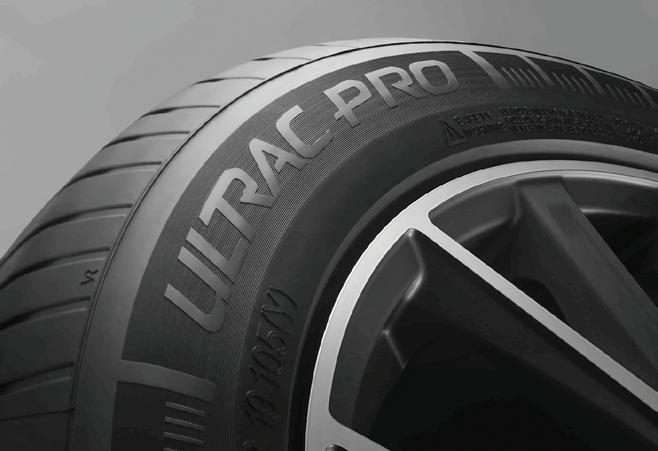
“In line with our strategic vision, we have invested in the UHP summer lineup and are preparing to launch 100 SKUs for the new Vredestein Ultrac Pro—half in 2024 and the remainder in 2025,” says Karl Jin, divisional head of product and pricing for passenger car and light truck, Apollo Tyres Ltd.
Michael Mathis, president, Atturo Tire Corp.: Overall, the HP/UHP market is growing. We see broad trends in the continual increase in rim size, increase in staggered fitments (for) both OE and aftermarket and the development of all-weather, 3-Peak Mountain Snowflake (3PMS)-certified high performance tires. Atturo strives to educate dealers on how to qualify customers who are potential HP/UHP customers. There is an increasing number of vehicles that can achieve increased performance by a simple tire change.
Ian McKinney, senior product manager, Bridgestone Americas Inc.: The automotive industry is witnessing a persistent trend toward the adoption of larger rim diameters for wheels and tires by both consumers and OEMs. The shift is particularly notable in the performance tire segment, where there’s a growing emphasis on accommodating higher rim sizes, especially on CUV applications. As the performance tire market continues to expand and adapt to these trends, we’ve seen smaller rim diameter tire sizes decrease with new product offerings. While we continue to develop products within the HP and UHP segments, it’s crucial to be attentive to these industry trends. This involves maintaining a diverse range of traditional 17-inch and 18-inch performance (tires) and sizes, while simultaneously extending coverage to meet the rising demand for 19-, 20- and 21-inch sizes requested by OEMs.
In terms of volume, performance tires see their highest demand from sports cars and sports sedans dominating today’s roads. The 17-inch sizes — catering to
popular imports such as the Toyota Camry, Nissan Altima and Honda Accord — are particularly favored. Additionally, there is significant traction in domestic muscle car fitments, exemplified by the 18-inch size for the Ford Mustang. Meanwhile, the 17-inch and 18-inch sizes for German offerings like the BMW 2 and 3 series also have considerable popularity.
Additionally, the HP and UHP segments have been affected by an increase in speed ratings. Previously, a performance all-season tire line would be competitive with a speed rating of H (max 130 mph) or V (max 149 mph). As the modern car parc has adapted to vehicle trends, all-season performance tires often need a speed rating of W (max 168 mph) or even Y (max 186 mph) to have appropriate coverage in this segment. When it’s time to replace their OE tires, consumers now must look for a comparable speed-rated tire, which means we’re elevating speed ratings on replacement tires to match the new OE standards.
that provides the ultimate in response and handling for their sports car or other type of performance vehicle. In all categories, OEMs continue to push for lower (rolling) resistance tires in order to improve the overall efficiency of the vehicle, whether it’s an EV or an internal combustion engine vehicle.

“Atturo strives to educate dealers on how to qualify customers who are potential HP/UHP customers,” says Michael Mathis, president, Atturo Tire Corp. “There is an increasing number of vehicles which can achieve increased performance by a simple tire change.
Nate Dodds, product manager for performance tires, Continental Tire the Americas LLC: One of the most recent changes in the HP segment has been the introduction of all-weather products that are more geared towards wet and winter performance, while also offering competitive highway handling and tread life.
In UHP, specifically UHP all-season, we continue to add fitments for performance CUV/SUV vehicles. Consumers are looking for a tire that can do it all, in regard to balancing wet, dry, rolling resistance, wear and winter capability. Second, with the increasing trend towards electrification, mileage will continue in importance for customers purchasing a UHP all-season tire due to the increased torque and weight of those vehicles.
For UHP summer, the trend is to higher and higher levels of dry and wet traction. As well, consumers are looking for a tire
David Poling, vice president, R&D and technical, Giti Tire (USA) Ltd.: Let’s begin by roughly defining HP tires as those having an H- and V-speed rating and UHP as having W and Y. In the past, there was a clearer delineation between HP and UHP tires. The UHP category generally captured the larger rim sizes and lower aspect ratios. However, today we see more HP tires in the larger rim diameters and lower aspect ratios. This trend is driven by the OEMs, who consistently place larger tires on vehicles, but keep the speed rating at H and V in many cases, making the fitments HP. But we shouldn’t assume this means that they are summer tires, because in fact, most of the HP tires going on at OE are all-season (tires). This is why we have seen a drop in HP summer and a rise in HP all season.
A similar situation is happening for UHP tires, as well, where OE fitments are split between all-season and summer, with all-season being the larger volume. This doesn’t mean that the answer for the
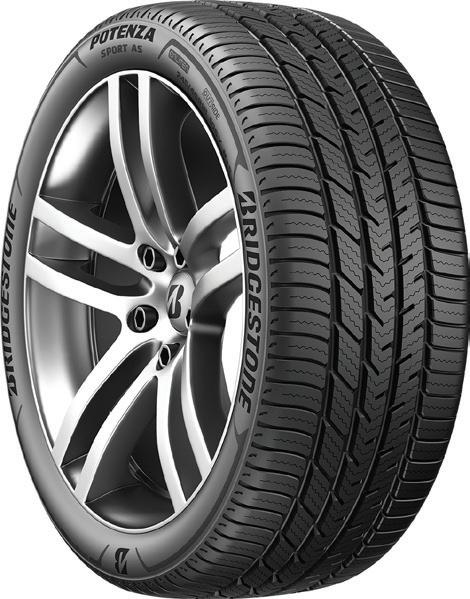
“The Bridgestone Potenza Sport AS, designed to support popular sports cars, sedans and performance crossovers, including applicable electric and hybrid performance vehicles, is Bridgestone’s first ultra-high performance all-season tire to feature Bridgestone ENLITEN technology,” says Ian McKinney, senior product manager, Bridgestone Americas Inc.
Americas Inc.
www.ModernTireDealer.com 21
Photo: Apollo Tyres Ltd.
Photo: Atturo Tire Corp.
Photo: Bridgestone
HP/UHP tires
UHP all-season is a traditional UHP allseason, as most of the fitments are touring all-season tires with a W speed rating. I think the solution will be extending traditional all-season lines into the UHP speed rating requirements.
Michelle Baggetta, director, category strategy and planning, high performance and winter tires, Goodyear Tire and Rubber Co.: With the growth of the high performance CUV and EV markets, there is significant demand from OE vehicle manufacturers for W-, Y- and Z-rated tires, which has simultaneously driven growth of HP and UHP tires across the replacement market.
As consumer adoption of EVs shows no signs of slowing, there is a new need to engineer HP tires that are equipped with adequate features to handle EVs’ unique attributes, including requirements for load, noise, torque, rolling resistance and range. With the continued growth of the EV market, there is an opportunity for continued HP tire innovation to keep pace with drivers’ and vehicles’ needs.
The high-performance CUV market has grown substantially over the past five years, which created a new need for performancespecific tires. As consumers continue to show preference for the aesthetic and functionality of CUVs, we anticipate that there will be a growing need for HP tires that provide all-around road performance.
Moonki Cho, product manager, Hankook Tire America Corp.: In the past, HP and UHP tires were normally reserved for sports cars and high-end performance trim levels. Today, especially within the HP category, we’re seeing a much broader application at the OE level across more general trim levels, in addition to rising consumer interest in ways to enjoy their vehicle’s dynamic driving experience across more seasons than
“Innovation in these markets will be driven in large part by the OE requirements,” says David Poling vice president, R&D and technical, Giti Tire (USA) Ltd. “As many (tires) find their way onto EVs, there will be a push for noise reduction.”

“In UHP, specifically UHP all-season, we continue to add fitments for performance CUV/SUV vehicles,” says Nate Dobbs, product manager for performance tires, Continental Tire the Americas LLC. “Consumers are looking for a tire that can do it all in regard to balancing wet, dry, rolling resistance, wear and winter capability.”
before. This has been the spark behind our recently launched Ventus S1 AS tire developed for performance-loving drivers who want to enjoy their car’s dynamic driving features year-round and across all seasons. For both the HP and UHP segments, performance will continue to improve for greater daily applications, whereas the latter may trend toward more specific use cases around racing and track performance.
John Wu, product strategy director, Maxxis International-USA: From a product point of view, the market for HP tires has dwindled as demand for UHP products continues to increase, and we expect UHP products to dominate the market. The extreme-performance summer segment has become quite competitive as more brands attempt to make a name for themselves in the UHP world. This type of UHP tire delivers track-focused performance, such as sharper response, higher cornering speeds, shorter braking distance and quicker dry lap times, while offering an acceptable level of on-road refinement. From an overall industry point of view, we’re seeing larger wheel diameter fitments continue as OE automakers bake in more profitability on sporty trim levels. We don’t see this trend slowing with EVs and hybrids, either.

Jay Lee, product marketing, Nexen Tire America Inc.: The UHP tire market is experiencing a notable shift driven by
the diverse needs of consumers. Two distinct groups have emerged: performance enthusiasts seeking track-worthy UHP tires and consumers with factory-equipped UHP tires for their CUVs and SUVs. The latter group prioritizes comfort, fuel efficiency and a quiet ride over high-speed performance. The increasing prevalence of larger wheel packages on CUVs and SUVs is driving the demand for UHP tires with all-season characteristics. The forecasted fastest-growing segment in the UHP market is for tires that balance performance with features like quietness and comfort, meeting the preferences of consumers who do not prioritize track-level performance, but seek a versatile and enjoyable driving experience. Next-generation UHP tires are expected to incorporate more all-season characteristics to cater to this evolving market demand.
Ian Coke, chief technical officer, Pirelli Tire North America Inc.: The focus on sustainability is growing a lot. And while this has already been a point of emphasis for manufacturers recently, the continued growth of the SUV and CUV market for consumers remains a major influence on the production priorities of manufacturers. With this increased demand on the side of auto manufacturers, the onus is on tiremakers to pump out significantly more HP and UHP tires that lend better handling and decrease rolling resistance in order to benefit fuel efficiency.
Ken Coltrane, vice president of marketing and product development, Prinx Chengshan Tire North America Inc: We are beginning to see more EV-capable designations.
Mike Park, assistant director of marketing, Tireco Inc.: Tire technology is advancing with a strong emphasis on performance improvement through innovative materials and construction techniques. Sustainability is a key focus, driving the development of eco-friendly tire options within the HP/UHP category. There’s also a growing interest in the potential for smart tires that can provide real-time data on tire pressure and tread depth.
Joaquin Gonzalez Jr., president, Tire Group International LLC (TGI): I wouldn’t necessarily call them new trends, rather trends which are gaining popularity:
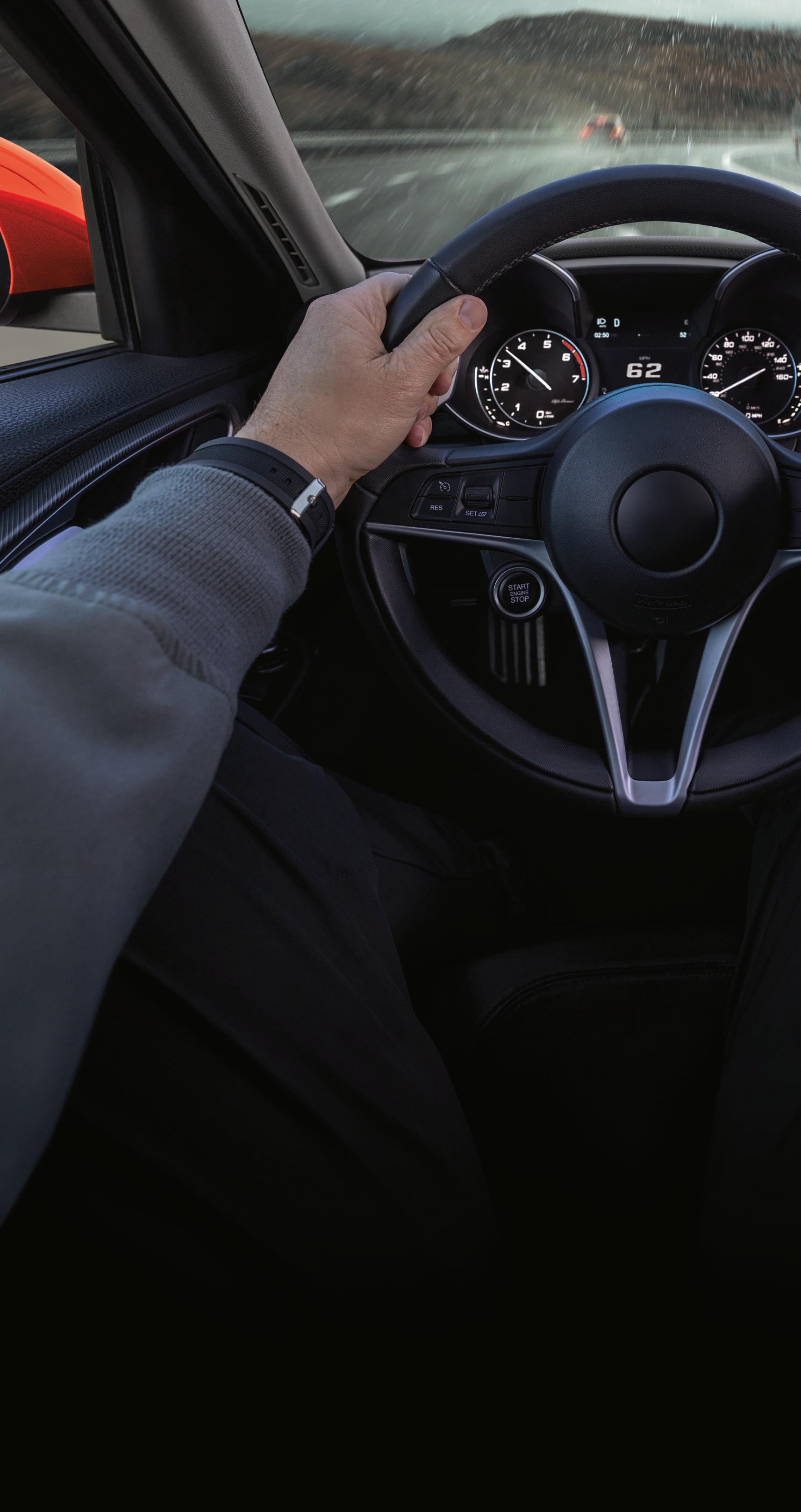
22 MTD February 2024
Photo: Giti Tire (USA) Ltd.
Photo: Continental Tire the Americas LLC

Powering through precipitation matters.

Want an ultra-high performance tire that shines, no matter the forecast? The Bridgestone Potenza Sport AS tire displayed up to 7% quicker wet acceleration vs. a key competitor 1 . Engineered with Bridgestone’s next generation ENLITEN™ technology, the Potenza Sport AS tire gives you precision performance in wet conditions. Confidence when cornering, even in the rain—that’s what really matters.

2024 Bridgestone Americas Tire Operations, LLC Based on comparative wet acceleration testing (0-40mph) of the Bridgestone Potenza Sport AS tires and the Continental ExtremeContact DWS06+ tires (size 215/55R17). Results may vary based on proper tire and vehicle maintenance, road conditions and driving habits.
©
1
HP/UHP tires
“The added weight and torque associated with EVs can impact several factors when it comes to tire performance, most importantly load capacity, treadwear and vehicle range,” says Michelle Baggetta, director, category strategy and planning, highperformance and winter tires, Goodyear Tire & Rubber Co. “The Goodyear ElectricDrive GT was designed with these elements in mind.”

All-season performance: Having a tire that offers great performance in various weather conditions and provides a balance of grip, handling, and comfort, making them suitable for year-round use.
More and more HP and UHP tires are now equipped with noise-canceling technologies. Consumers are becoming much more educated on their tire purchases and requesting features such as this, making it important for manufacturers to provide solutions.
Enhanced wet traction: Utilizing innovative tread patterns and compounds to provide better grip and handling on wet roads.
As sustainability becomes increasingly important, many tire manufacturers are introducing eco-friendly HP and UHP tire options. These tires are designed to have lower rolling resistance, which can result in improved fuel efficiency and reduced carbon emissions.
Chris Tolbert, director of sales, Trimax Tire: With continued market demand for high performance vehicles, we see optimistic growth towards luxury CUVs, EVs,
hybrids and SUVs, plus sports vehicles. With advanced technology and innovative tread patterns, HP and UHP tires are specifically designed to enhance the driving experience. The Haida HD937 all-season UHP is designed for many of these applications. Currently it is available in 42 sizes, from 16- to 30-inches. In the first quarter of 2024, we will introduce four sizes (in) 23 inches. Later in 2024, we will continue to expand 18 sizes in 17-, 18-, 19-, 20-, 21- and 22-inches.
Phillip Kane, CEO, Turbo Wholesale Tires: The new trends we are noticing in the market are that certain sizes that were historically known to be UHP tires are seen more as HP tires today. If you look back five to 10 years ago, 17-, 18- and, especially, 19-inch tires were traditionally known to be UHP. In the present day, these tires are seen coming OEM on most new models. You see these tires today come more as touring tires with 60,000-plus mileage warranties. This is also the case for some 20-inch tires.
partly due to changing vehicle dynamics and the positioning of HP and UHP tires across a wider range of platforms. For example, a current model year Toyota Camry comes equipped with a 19-inch, V-rated tire. Historically, the tire industry would have considered that option as a pure performance tire. However, a Camry buyer and owner likely isn’t looking for a pure performance tire in the traditional sense of the word.
Now, that tire must do all the things a V-rated tire needs to do in terms of handling and braking, but also deliver a comfortable ride and provide extended longevity. So we see big performance improvements and categories like “grand touring,” where Yokohama’s Avid Ascend GT is a perfect option in the Camry example. We also see more traditional performance tires

Ryan Parszik, manager, product planning, Yokohama Tire Corp.: Overall, tires continue to get better in terms of actual performance (i.e., handling characteristics, braking distance, ride, noise, etc.), but customer and consumer expectations have also increased. This is
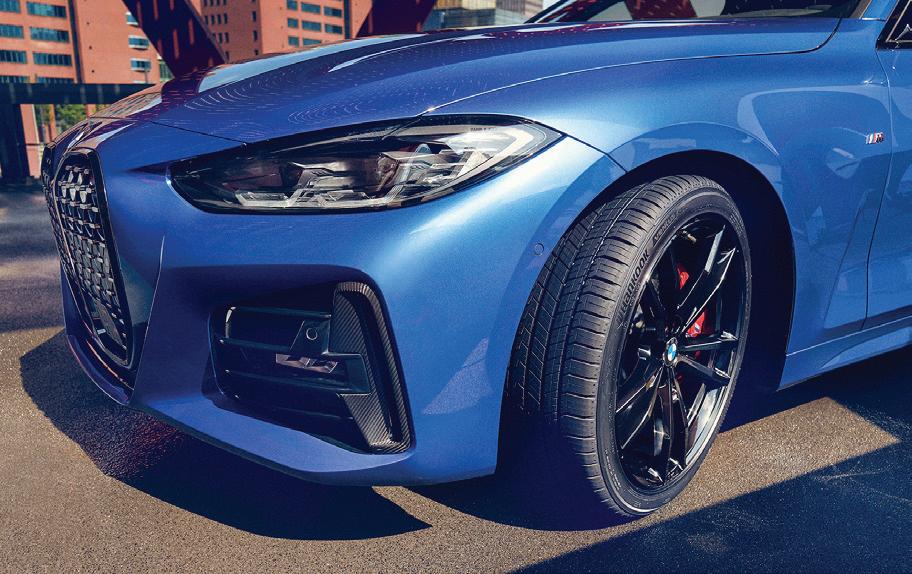
“As the performance of regular vehicles improves, HP tires will start to take on more and more touring tire qualities concerning seasonal flexibility along with mileage, comfort and traction in a premium performance product,” says Moonki Cho, product manager, Hankook Tire America Corp.
“The next tire innovations will involve designs that adapt to the heavier, higher-torque and higherhorsepower hybrid or electric sports cars and sports sedans, delivering ultimate dry and wet traction while also addressing considerations such as noise, vehicle and harshness and even range,” says John Wu, product strategy director, Maxxis International-USA.
like Yokohama’s Advan Apex with an extreme focus on performance handling now coming with mileage warranties.
Zhongce Rubber Group Co. Ltd. (ZC Rubber): One of the major trends that is currently being seen in the HP and UHP tire segment is the rise of electric vehicles. As more and more people switch to EVs, there is a growing demand for tires that are specifically designed to meet the unique requirements of electric vehicles.
MTD: What will be the next innovation for HP/UHP tires?
Stotsenburg (Kenda): Kenda sees the primary need for UHP segment innovation for a true four-season tire that offers all of the dry, wet and winter benefits that are available in grand touring tires now offered by leading brands. The current tradeoffs in
24
MTD February 2024
Photo: Hankook Tire America Corp.
Photo: Goodyear Tire & Rubber Co.
Photo: Maxxis International-USA

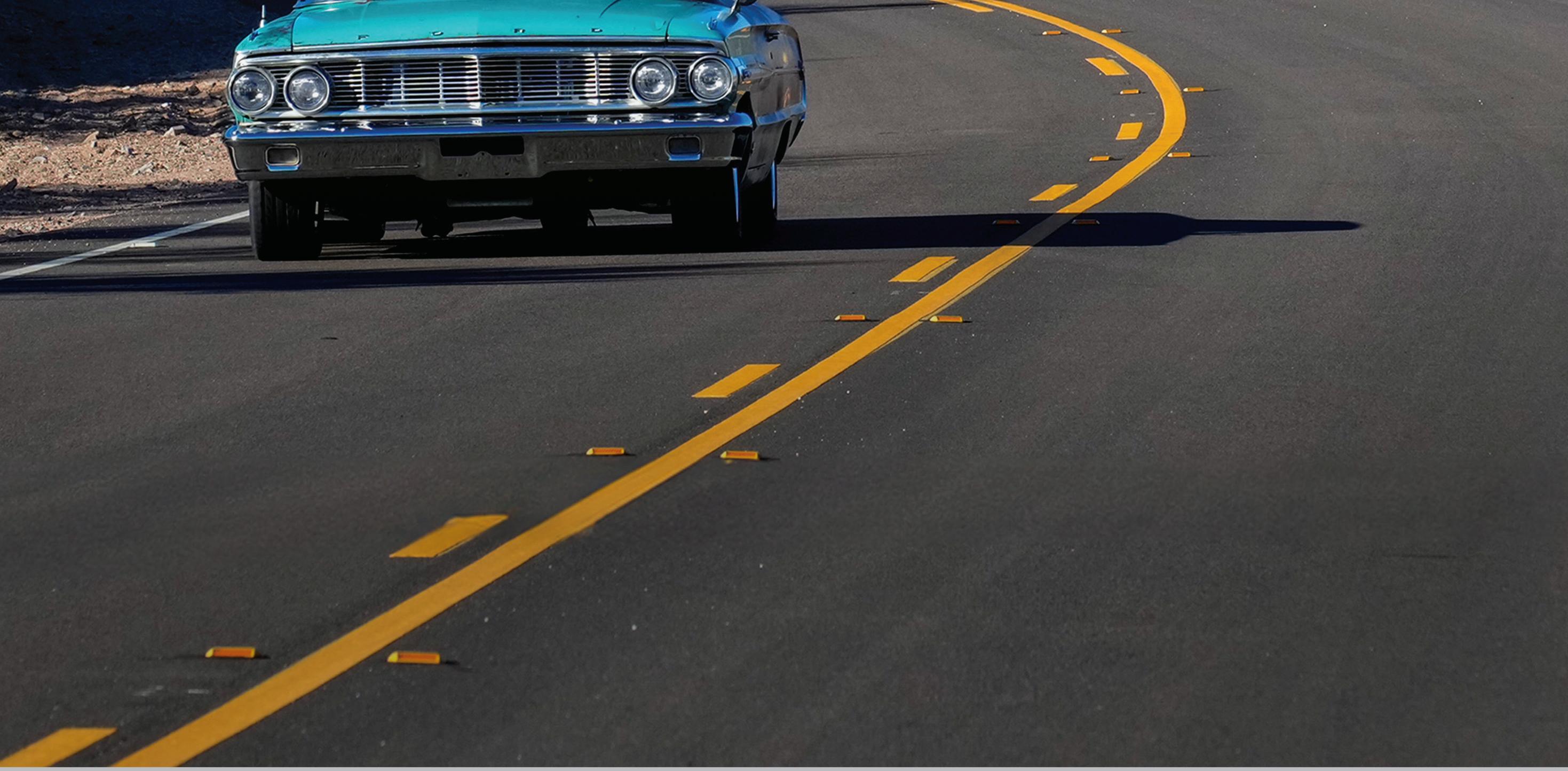

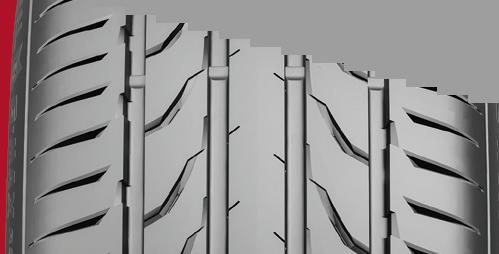





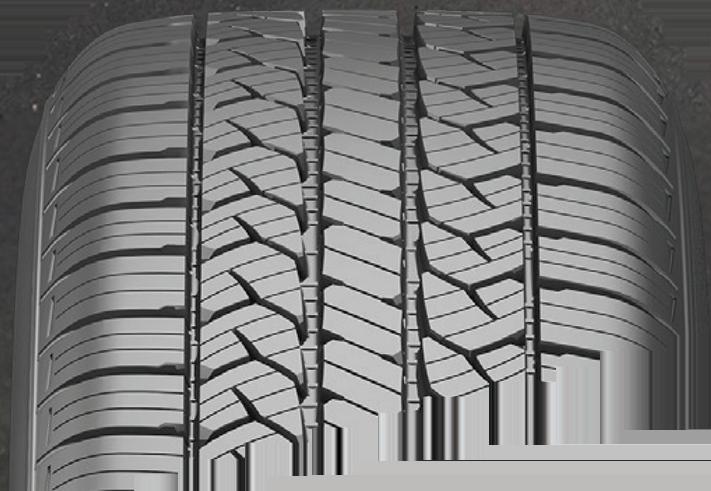
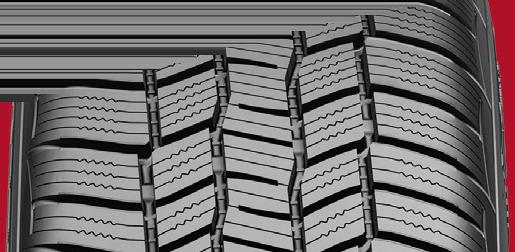

HP/UHP tires
“The increasing prevalence of larger wheel packages on CUVs and SUVs is driving the demand for UHP tires with all-season characteristics,” says Jay Lee, product marketing, Nexen Tire America Inc.
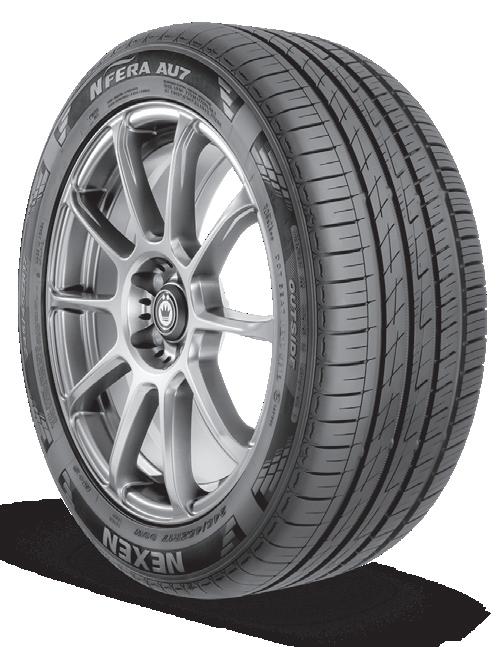
North America are providing all of the benefits with a true UHP W- or Y-rated tire, including 3PMS certification, while not sacrificing expected wear rates that the North American consumer desires for 40,000-mile to 50,000-mile warranties. The material solutions combined with the mechanical tread designs are now offered in touring tires like the Vezda Tou Touring 4S, which is H or V-rated, offers excellent wet and winter performance in addition to a 60,000-mile warranty. The next innovation will be to increase the performance of a true UHP tire, which offers a strong dry and wet grip for UHP applications with the addition of 3PMS certification and good wear.
Liu (Hercules): Based on Hercules Tires’ current product screen and forward strategy, we saw the technological advancement in both auto and tire manufacturers and the shift to CUV/SUV vehicles. For us, with the traditional HP category, we’re
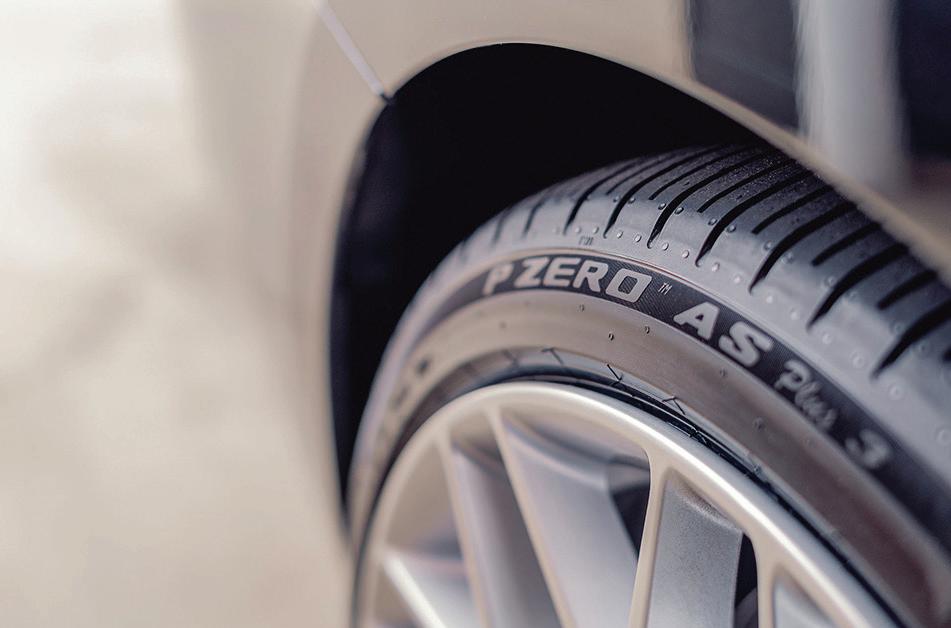
“With the significant growth in the electric vehicle market — and particularly in high performance EVs from manufacturers like BMW, Rivian and Porsche — expect to see much more research and development on materials and tread patterns that will be able to provide a premium driving experience,” says Ian Coke, chief technical officer, Pirelli Tire North America Inc.
combining into standard/grand touring, where the focus is mileage, comfort (and) ride quality, with the added dose of performance elements.
Jin (Vredestein): The HP/ UHP segment is constantly innovating, as incremental performance benefits are very important to that consumer. A new frontier in HP/UHP tire innovation is achieving equal mileage warranties for both CUV and SUV sizes — finding an optimal balance in treadwear. Our latest UHP summer tire, the Vredestein Ultrac Pro, looks to address exactly this through its finely tuned blend of comfort and control.
This is in addition to the ongoing push for innovations tied to sustainability, which spans all segments, including HP/UHP. This covers a range of focus areas, from sourcing more eco-friendly raw materials to compound development to final manufacturing. The objective is to deliver tires that perform at the levels customers demand, while integrating materials and processes that lighten the environmental footprint.
Mathis (Atturo): We see continual evolution in reducing the tradeoffs of rolling resistance versus grip. Another innovation will be the advancement of connected tire technology integrated with the tire, vehicle and back to the retail dealer.
McKinney (Bridgestone): The performance tire market is incredibly competitive, with tire manufacturers vying for incremental performance improvements. Present-day products exhibit enhanced wet and dry handling performance, as anticipated. However, there has been remarkable progress in winter traction and wear life within the past few years. While a revolutionary shift in the performance segment is not expected, the focus is likely to remain on improving wet and dry handling and enhancing winter traction.
With the increasing prevalence of electric vehicles, there is a growing need for an additional level of scrutiny on wear life and noise performance to ensure consumer satisfaction. Given the hyper-competitive nature of the industry, tiremakers are actively seeking distinguishing factors for their products. Therefore, we can anticipate

“It would be very tough to single out one specific innovation,” says Joaquin Gonzalez Jr., president of Tire Group International LLC. “There is no doubt we will continue to see improvements across the board on performance, noise reduction, grip, comfort and durability of tires.”
Photo: Tire Group International LLC
ongoing innovations aimed at reducing rolling resistance, preserving range and prioritizing top-tier performance, with material sustainability in mind.
Dodds (Continental): The innovation areas will continue to be on reducing rolling resistance for the OEMs and increasing tire mileage for the end consumer.
Poling (Giti): Innovation in these markets will be driven largely by OE requirements. As many (tires) find their way onto EVs, there will be a push for noise reduction. In the same way, rolling resistance reduction will continue to play a key role across EV, hybrid and ICE vehicles. Some regulations currently coming out of the European Union will drive innovation around treadwear and tire abrasion.
Baggetta (Goodyear): The rise of vehicle connectivity has unlocked new capabilities for cars to process data and deliver information to drivers. The tire is the only part of the vehicle that touches the road. This contact point has the potential to provide important data to the vehicle.
Cho (Hankook): As the performance of regular vehicles improves, HP tires will

26
MTD February 2024
Photo: Pirelli Tire North America Inc.
Photo: Nexen Tire America Inc.

HP/UHP tires
start to take on more and more touring tire qualities concerning seasonal flexibility, along with mileage, comfort and traction in a premium performance product. This innovative success will only further as R&D teams test new rubber compounds, tread patterns and structural architectures to further diversify the growing segment. A similar methodology will be applied within the UHP segment and upgraded for specific customers concerning heightened performance for competitive driving. This kind of pursuit in extending and evolving the application of a category also applies to new platforms as we’ve begun to see and support within the electric vehicle segment.
Wu (Maxxis): The next tire innovations will involve designs that adapt to the heavier, higher-torque and higherhorsepower hybrid or electric sports cars and sports sedans, delivering ultimate dry and wet traction while also addressing considerations such as noise, vibration and harshness and even range.
Lee (Nexen): The tire market is witnessing a significant trend with the introduction of heavy load (HL) tires into the HP and UHP segments. Traditionally, standard load and extra load tires were prevalent, but the emergence of electric vehicles has led to the need for tires capable of handling the increased weight of modern EV batteries. The HL classification is designed to address this demand, providing tires with a higher load rating to accommodate the heavier batteries in EVs. This development underscores the dynamic nature of the automotive industry, where evolving vehicle technologies, especially the widespread adoption of electric vehicles, are influencing tire demands. Even within the UHP category, which was traditionally associated with sports cars, there is a growing need for more capable tires that can meet the diverse requirements of a wide range of vehicles, including the expanding market of electric vehicles.
Coke (Pirelli): With the significant growth in the electric vehicle market, and particularly in high performance EVs from manufacturers like BMW, Rivian and Porsche, expect to see much more research and development
on materials and tread patterns that will be able to provide a premium driving experience. EVs carry much more weight than traditional vehicles with internal combustion engines, so electric HP and UHP tires need to be designed to better handle that weight and enable drivers to have the precise control and zip they’ve come to expect without sacrificing battery range or tread life.
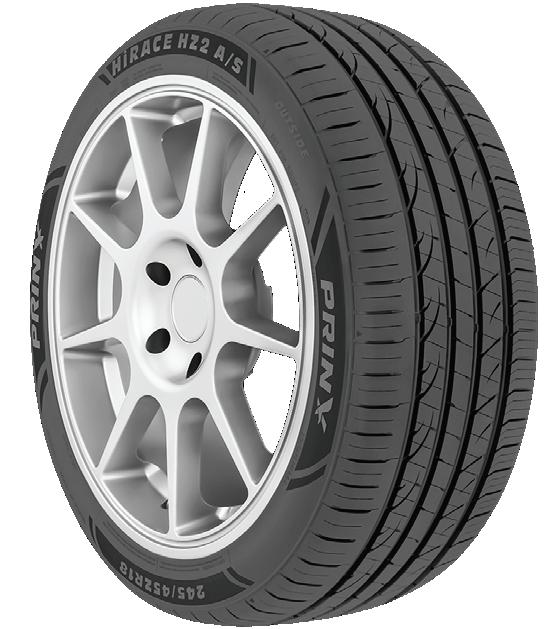
Coltrane (Prinx): I would not be surprised to see the new HL prefix for tire sizes begin to show up more frequently in this segment.
Park (Tireco): There will be continuous advances in materials and construction that will contribute to improved fuel efficiency and overall vehicle performance.
Gonzalez (TGI): It would be very tough to single out one specific innovation. There is no doubt we will continue to see improvements across the board on performance, noise reduction, grip, comfort and durability of tires. Maybe we will find a way of utilizing smart technology to integrate or connect tires to our vehicles in more ways than just with lug nuts. As of right now, the only feedback we get on tires in our vehicles is through the tire pressure monitoring systems. Maybe there (will be) a day where we will be able to see how all the different characteristics of our tires are performing in real time.
Kevin Arima, senior product manager, Toyo Tire U.S.A. Corp.: With anticipated growth in the number of sports BEVs and sporty BEVs, future generations of tires will better
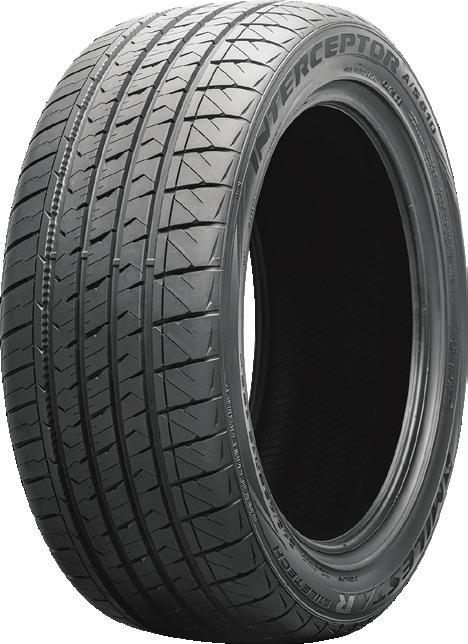
“Manufacturers are developing tires with advanced tread compounds and construction that can provide low rolling resistance tires, which enhance energy efficiency and extend overall range,” says Mike Park, assistant director of marketing, Tireco Inc.
Ken Coltrane, vice president of marketing and product development for Prinx Chengshan Tire North America Inc., says he expects to see more EVcapable designs for HP/UHP tires.
address these performance needs of instant torque while improving range and tread life and maintaining a quiet ride. This will be accomplished by adopting innovative compounding, new materials and incorporating new development methods, all the while accounting for sustainable practices to develop tire solutions to meet end-user needs.
Tolbert (Trimax): Tire manufacturers continue to focus on improving tire performance characteristics for dry and wet traction, cornering stability, braking efficiency, rolling resistance, fuel efficiency, tire noise and weight requirements.
Kane (Turbo): I think the next big innovation for HP/UHP tires is going to be in the EV tires segment of the industry. As EV tires become more and more common in the industry, companies and brands will look to innovate and continue to expand product sizing. There is also a huge innovation in the mid-tier SUV/CUV market because the demand for those types of vehicles has exploded in the last couple of years.
Parszik (Yokohama): Familiar benefits in the form of all-season traction, wear resistance and load carrying capacities will all drive innovation in the performance segment. The increasingly common adoption of the 3PMS symbol in a multitude of segments will make its way into all-season offerings within the category. Additionally, changes in vehicles, led by EVs, have increased weight and put tremendous pressure on tire life. The new Yokohama Advan Sport EV A/S was designed specifically to take on some of these challenges.
ZC Rubber: Looking towards the future, the next big innovation for HP/UHP tires is expected to be the development

28
MTD February 2024
Photo: TireCo Inc.
Photo: Prinx Chengshan Tire North America Inc.
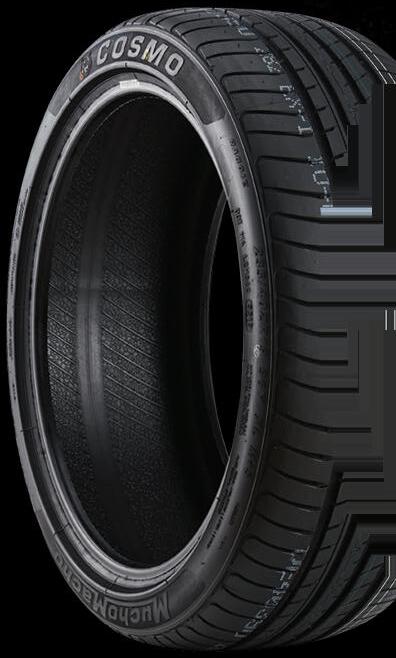
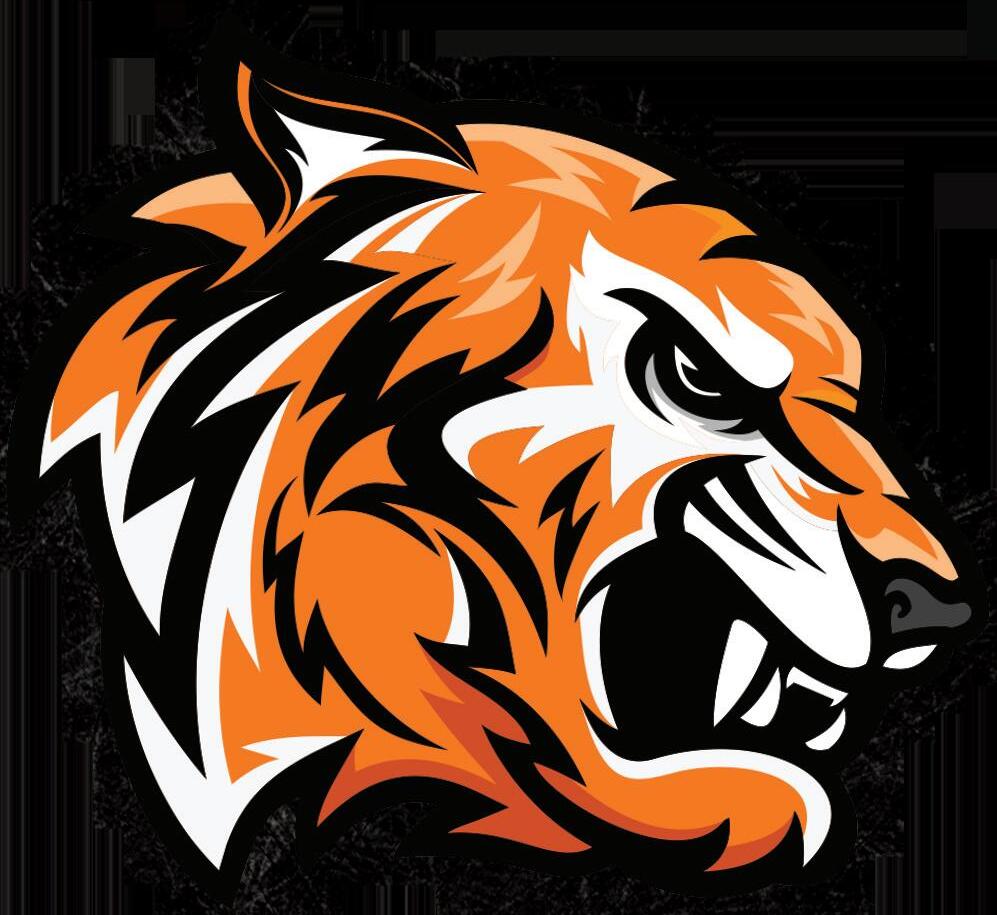

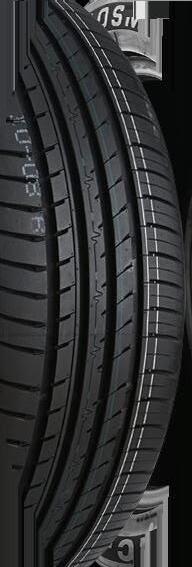
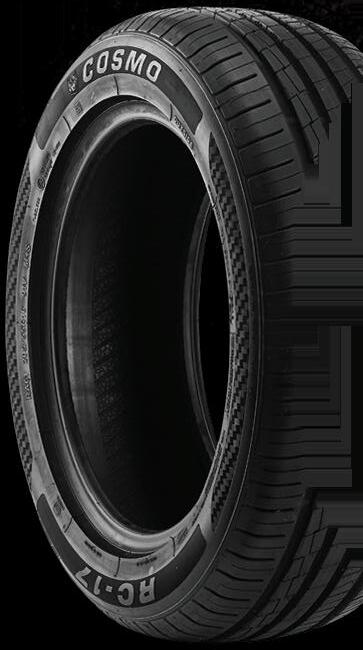






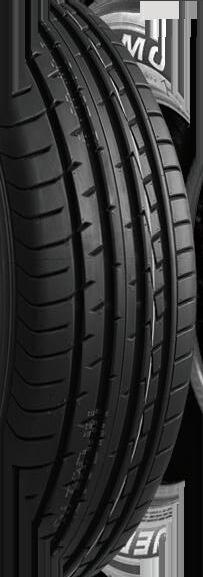





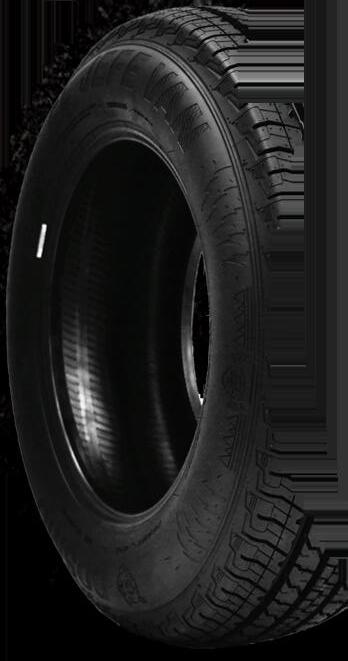

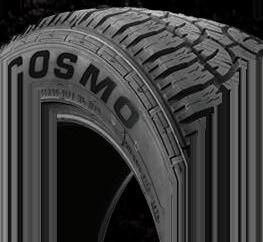





HP/UHP tires
of specialized EV tires. These tires will be designed to meet the specific requirements of EVs, such as higher load-carrying capacity, lower rolling resistance, improved tread wear and excellent braking performance. Additionally, there is also a rising demand for all-season EV tires that can perform well in various weather conditions.
MTD: With the rise of electric vehicles and hybrid cars, how are HP/UHP tires adapting to meet the unique requirements of these vehicles? Do they require specific technologies or materials?
Stotsenburg (Kenda): Vehicle application specifics determine the answer to these questions, with some specific consumer preferences or needs further defining the answer. Kenda’s current Vezda lineup will fit EV applications depending on the speed/ load ratings, but optimized performance for wear will require additional construction, mechanical design and material modifications based on the following elements. Specifically, the following application elements are the drivers in this decision (as) within the North American (tire) market, right now EV applications are primarily W- or Y-rated and UHP by definition:
• Load/heavier weight (is) based on the weight of the vehicle, primarily affected by the battery. This may require a tire with a higher rating, including XL or HL for non-light truck designations. This also affects the expected wear of the tire;
• The higher performance and torque for most EVs have required V- or W-rated tires that affect the wear of tires on EV applications. To improve the grip needed from stronger initial acceleration and higher output, this may require both mechanical and compounding changes for the tires;
• As EV vehicles are inherently quieter than ICE vehicles, tire noise from nonEV tires will be more
Trimax Tire will roll out the Haida HD937 allseason UHP tire, which will be designed for EV applications, in key sizes of 16-, 17-, 18-, 19- and 20-inches in 2024, says Chris Tolbert, director of sales, Trimax Tire.
Trimax Tire
“I think the next big step innovation for HP/UHP tires is going to be in the EV tires segment of the industry,” says Philip Kane, CEO, Turbo Wholesale Tires.

noticeable. There are noise reduction technologies available to improve this issue, but it does require potentially more costly changes to the tire. This issue is important for most consumers, particularly in initial replacement cycles;
• EV vehicle range is affected by the rolling resistance of the tire. There are trade-offs to offering enhanced rolling resistance which may affect wear;
• Currently, many EV applications are provided with tires that have limitations related to four season performance. Depending on the application, summer performance has been prioritized. Many consumers require four-season capability.
As always, the load and speed rating requirement as defined by the vehicle applications cannot be compromised. The other elements likely affect performance and benefits that consumers need to understand relative to trade-offs. The most obvious one that everyone is seeing relates to wear, as most EV tires currently have shorter expected wear primarily due to the vehicle design and use, but also related to the design decisions from the tire manufacturer or OEM.
As the EV vehicle market is currently evolving both globally and in North America, there are many potential options to determine EV tire decisions. Although Kenda is not currently offering EV-specifc options in North America, we are accelerating the analysis.
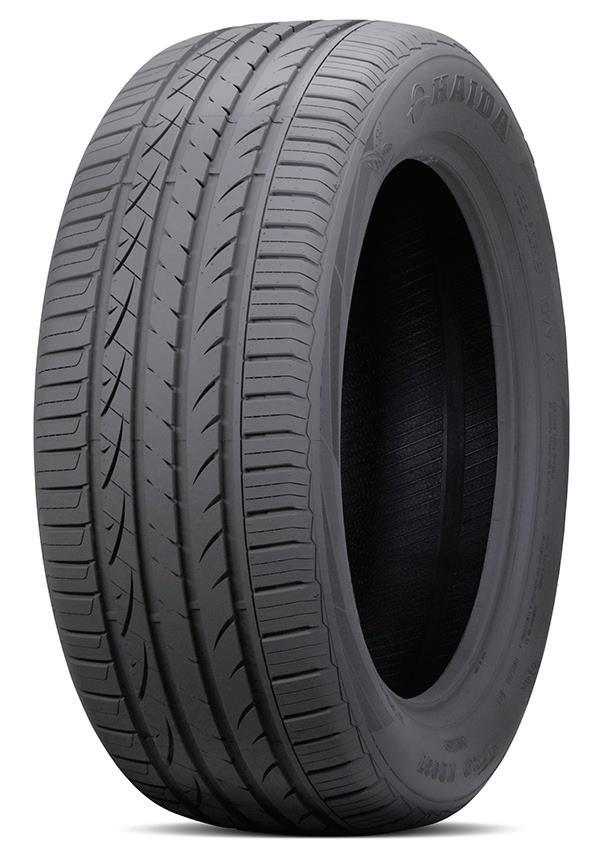
Liu (Hercules): With the ongoing changes and improvement in the EV/hybrid vehicle world related to both auto and tire manufacturers, we believe the market will sort it out over the course of the next few years. Needless to say, as Hercules Tires remains one of the premier
value brands in the marketplace, our goal is to continue to focus on maintaining specific performance criteria that satisfy our customers, recognizing the baseline is rising and we have to stay proactive. Secondly, we’re going to be hyper-focused on the development of EV and hybrid vehicles as the market matures, identifying what are the table stakes and what are the trade-offs of utilizing UHP tire design as the platform. The reality is when it comes to a HP/UHP tire, W-rated is not so much a differentiator anymore. Last but not least, there is angst from all sides attempting to offer a solution addressing the balance between vehicle dynamics, battery range, treadwear/mileage and cost. Ultimately, performance needs will vary.
Jin (Vredestein): It’s a balancing act. HP and UHP customers, especially in the replacement market, have defined expectations for how their tires improve overall performance and handling. In many respects, HP and UHP tires are a natural fit for EVs, given that their baseline levels of performance are so elevated compared to many of their mass-market combustion-engine counterparts. For this customer, it’s a matter of ensuring that the products meet the additional load requirements that EVs may place on the tire. We also understand that some EV customers may place a high value on efficiency and longevity in addition to high performance. As a result, several new EVspecific performance tires have come to market from a range of manufacturers. Because we develop performance tires for so many different vehicle types and use cases, we are well-positioned to serve EV drivers with our existing lineup. Ongoing collaboration with our retail partners lets us understand what drivers prioritize, so that we can address those requirements in our product-development processes. This, naturally, includes EV customers.
Mathis (Atturo): Electric and hybrid vehicles are excellent candidates for HP/ UHP tires. Most EVs are equipped with OE tires focused on low rolling resistance at the expense of performance-oriented grip. The upgrade to an HP/UHP tire will unleash the performance potential of these vehicles for the driver seeking

30
MTD February 2024
Photo:
Photo:Turbo Wholesale Tires

HP/UHP tires
that feature. As long as the tire meets the original load and speed index, aftermarket HP/UHP tires are suitable for use on EV/ hybrid vehicles.
McKinney (Bridgestone): The push for electrification continues to grow the popularity of electric and hybrid vehicles and it’s important for tire manufacturers to factor in their unique performance benefits. EVs offer tremendous performance benefits like low noise and instantaneous torque, but these factors, along with increased vehicle mass, have real implications for tire design. According to our research, EVs go through a set of tires roughly 30% to 40% more quickly than their comparable internal combustion engine counterparts. This is an element that Bridgestone addressed in its latest UHP offering, the Bridgestone Potenza Sport AS. (The Bridgestone Potenza Sport AS, designed to support popular sports cars, sedans and performance crossovers, including applicable electric and hybrid performance vehicles, is Bridgestone’s first ultra-high performance all-season tire to feature Bridgestone ENLITEN technology.)
As consumption of electric vehicles and hybrid cars increases, the HP and UHP performance tire segments will continue to evolve and meet the unique requirements of these vehicles without trading off expected performance.
coming from the high torque available. The key, as tire manufacturers, is to address the needs of the market, while keeping the ever-growing complexity to a minimum for us and our dealers.
Baggetta (Goodyear): The design of HP and UHP tires are adapted to be compatible with the technical requirements for electric vehicles and hybrid cars. The added weight and torque associated with EVs can impact several factors when it comes to tire performance — most importantly load capacity, tread wear and vehicle range. The Goodyear ElectricDrive GT was designed with these elements in mind.
Beyond functional adaptations, HP and UHP tires should cater to EV drivers’ expectations for a quiet ride. EV drivers view their vehicles as a source of enjoyment — not just a means of transportation.
Rather than solely focusing on

“Changes in vehicles, led by EVs, have increased weight and put tremendous pressure on tire life,” says Ryan Parszik, manager, product planning, Yokohama Tire Corp. “The new Yokohama Advan Sport EV A/S was designed specifically to take on some of these challenges.”
Photo: Yokohama Tire Corp.
Dodds (Continental): In both segments, we continue to bring out new fitments that meet the increasing trend of electric vehicles — in this case, bringing out new sizes that offer the correct load index and speed symbol to match the vehicle’s OEM tire. Additionally, as new vehicles enter the market with high load fitments as OE, we will begin looking at bringing those sizes as high load to the replacement market.
Poling (Giti): The increase in EVs will require adaptations, of course. However, manufacturers are approaching the technical and line offering requirements in many ways. The technical challenges are not as severe as they seem with the modern EV driveline control systems that limit issues
efficient tires for a longer range, consumers prefer balanced all-season tires that meet more of their driving needs. Given this shift in perception, Goodyear focuses on a consumer-centric approach to serve drivers’ evolving lifestyles, while meeting EVs’ functional requirements.
Cho (Hankook): Due to the inherent differences an EV platform poses in comparison to a conventional ICE vehicle, there are several factors regarding heavier weight, power delivery profile and roadgoing noise that, in several ways, require a rethink of a tire’s application, especially within performance categories. Tread compounds, for example, require new combinations and innovations behind their highly functionalized and flexible polymer to be combined with highly dispersible silica, resin, natural oils and other materials to withstand the elevated power of these performance EV applications.
Once more, a standard or entry-level EV carries performance figures, especially regarding acceleration, that would be on par with high-performance ICE chassis. With that in mind, special consideration must be applied when developing a highperformance version of an EV tire that satisfies the needs of safety, elevated performance, battery range and balance across multiple seasons.
Wu (Maxxis): The next tire innovations will involve designs that adapt to the heavier, higher-torque and higherhorsepower hybrid or electric sports cars and sports sedans, delivering ultimate dry and wet traction while also addressing considerations such as NVH (noise, vibration and harshness) and even range.
Lee (Nexen): One of the key considerations for tires in electric and hybrid vehicles is minimizing rolling resistance. Lower rolling resistance contributes to increased energy efficiency, which is crucial for maximizing the driving range of electric vehicles. Tire manufacturers are developing tires with specialized tread compounds and designs to achieve this goal.
Electric vehicles often have a different weight distribution compared to traditional internal combustion engine vehicles due to the placement of heavy battery packs. Tire manufacturers may design tires to accommodate the specific weight distribution of electric vehicles and provide optimal load-bearing capacity.
Electric vehicles are known for their quiet operation. Tires designed for EVs may incorporate technologies to reduce road noise, providing a quieter and more comfortable driving experience. Electric vehicles (also) generate less heat compared to traditional vehicles with internal combustion engines. Tires designed for EVs may need to manage heat differently to ensure optimal performance and longevity.
Electric vehicles often have instant torque, which can impact tire wear. Tire manufacturers may focus on developing durable compounds to withstand the unique wear patterns associated with electric vehicle driving. HP and UHP tires for electric and hybrid vehicles may also be designed with aerodynamics in mind to contribute to the overall efficiency of the vehicle.
The integration of smart tire technologies is becoming more common. These technologies can provide real-time data
32
MTD February 2024
to the driver and contribute to the overall safety and efficiency of the vehicle. It’s important to note that tire manufacturers continuously innovate and adapt to the evolving automotive landscape. As electric and hybrid vehicles become more prevalent, the tire industry is likely to see further developments to address the specific needs and challenges associated with these types of vehicles.
Coke (Pirelli): As mentioned above, electric HP and UHP tires require a unique construction that offsets the challenges that come with increased weight and limited range on electric vehicles, particularly high-performance models.
A few of the main adaptations in the ways these tires are made include much lower rolling resistance, in order to reduce the energy consumption needed to keep these heavy vehicles moving.
One of the major trends that is currently being seen in the HP and UHP tire segment is the rise of electric vehicles, say ZC Rubber officials.
HP and UHP electric tires (also) require the perfect combination of materials, tread pattern, design and structure deformation to best handle the vertical weight distribution of EVs so that control and safety is not compromised.
to reduce noise. Lower rolling resistance is also a big factor in these tires.
Park (Tireco): Manufacturers are developing tires with advanced tread compounds and construction that can provide low rolling resistance tires, which enhance energy efficiency and extend overall range. Because electric vehicles weigh more, tires are designed to meet higher load carrying capacity and there is also a focus on minimizing noise through tread patterns and materials to enhance the driving experience.
Gonzalez (TGI): The rise of electric vehicles and hybrid cars has indeed brought about new considerations for HP/UHP tires. These vehicles have unique requirements that tire manufacturers must adapt to. Low rolling resistance, increased load capacity, noise reduction and size proliferation are some of the key attributes we will see tiremakers pushing their next-gen product development into.

Unlike internal combustion engines, EVs transmit torque to the wheels instantly. For non-EV tires, this could be incredibly damaging to the treads. To keep this level of power alive and under control, the tires require a specific compound that provides significant and immediate grip.
And possibly one of the most stark differences between traditional HP and UHP vehicles and their electric counterparts is the lack of noise. This is a big selling point for many consumers, as it can enhance their comfort levels on the road. Many tiremakers, Pirelli included, look to minimize the impact that EV tires would have on noise levels by using optimized tread patterns and structural changes that keep ambient sound at a minimum.
Coltrane (Prinx): Prinx Chengshan has developed its own proprietary technology
Tolbert (Trimax): With EVs, you have increased torque, vehicle weight and reduced vehicle noise. Tire manufacturers must focus on these characteristics to enhance driver experience. This is why many tire manufactures are introducing EV tires.
Kane (Turbo): A lot of (tiremakers) are coming out with technological innovations and creating a rubber compound that can hold up the weight of the car and allow the consumer to enjoy a quiet and comfortable ride with low resistance. The first-generation EV tires did not last nearly as long as the ones being manufactured in the present day, which shows that manufacturers are becoming more and more educated on how to build these tires.
Parszik (Yokohama): Electric vehicles have a lot more weight and torque than a traditional ICE vehicle. Consumers, however, have the same expectations and demands from their past experience, so this has created a new hurdle for the manufacturer. A tire applied to an EV today must fulfill new EV requirements, such

as carrying a heavier load, performing with the additional torque and providing an extraordinarily quiet ride due to the absence of engine noise without compromising on traditional performance requirements. (The Yokohama Advan Sport EV A/S does just that by meeting the EV needs, while exceeding the consumer needs, especially as it relates to wear.) Further complicating the segment is the fact that some EVs are now requiring a new load range, HL, or high load, as a result of the increased battery weight. The HL has a carrying capacity greater than a standard load or extra load tire.
ZC Rubber: As electric vehicles continue to grow in popularity, the HP/UHP tire industry is facing unique challenges in meeting the specific requirements of these vehicles. With their quick acceleration and heavy weight, EVs pose unique challenges for tire manufacturers. These vehicles require tires that can provide better tread wear and excellent braking performance and have low rolling resistance. And it is the task of tire manufacturers to find the perfect balance between these three factors in order to deliver the best performance. To address these demands, ZC Rubber is investing in research and development to create specialized tires for EVs. We launched the EV Pro series for the Chinese market and plan to introduce it globally soon. This series focuses on providing a balance of grip, fuel efficiency, comfort and silence for electric vehicles.
The HP/UHP tire industry is adapting to the rise of electric and hybrid vehicles by developing tires that meet their specific needs. ■
www.ModernTireDealer.com 33
According to Kevin Arima, senior product manager for Toyo Tire U.S.A. Corp., more battery electric vehicles will be hitting the market, which will require more performance to address high torque and a quiet ride.
Photo: Toyo Tire U.S.A. Corp.
Photo: Zhongce Rubber Group Co. Ltd.
‘We’re your amigos’
LAS VEGAS DEALERSHIP SAYS PERSONAL TOUCH IS KEY TO SELLING HP/UHP TIRES
By
Mike Manges
Amigo Tires, a seven-store dealership in Las Vegas, Nev., is doing brisk business selling high performance (HP) tires, ultra-high performance (UHP) tires and custom wheels, while making friends and winning new customers along the way.
The company’s tagline — “At Amigo Tires, we’re your amigos” — is more than just a slogan, according to Karla Enriquez, the dealership’s marketing manager.
“We want customers to get to know our staff to form the relationships” that keep them coming back to the dealership.
This focus on cultivating a personal connection with customers is a key piece of Amigo Tires’ long-term strategy — especially as more cars roll into the dealership’s stores on high performance, low profile tires, says Mario Cota, the company’s general manager.
“Selling HP tires is a must because everything (comes) with them,” he says, adding that “15-inch and 16-inch tires seem to be going away,” both at the factory level and in the replacement channel.
That doesn’t mean that the average customer is always aware of the dimensions of their vehicles’ original equipment tires, which can lead to sticker shock at first replacement, adds Cota. “We try to educate our customers.”
Cota estimates that 80% of Amigo Tires’ broadline tire customers rely on the dealership’s sales team for advice.
HP and UHP tire customers can be more exacting, he says. “They come in and generally know what they want. They’ve done


Amigo Tires stocks thousands of wheels at its main location.
Cota describes Las Vegas, the dealership’s home, as a “see-and-buy city. Customers want to see it, touch it and buy it. You show them a picture of a wheel online and they won’t necessarily fall in love with that wheel.”
their research and they’re invested. These customers want facts and details.
“We don’t want to steer them away from the research they’ve done. We guide them. We try to comply” with their preferences “and see what the best tire for their category is.
“If they ask, ‘What do you think?’ we’ll show them what’s equivalent to the tire they’ve researched and see if they want to consider something else.”
If customers are open to other options, “we’ll find another tire that meets their expectations.”
The idea is to provide expert advice while letting the customer control the buying process, says Cota.
“We want to move with their flow. Anybody can push a set of tires. But when (customers) make the choice, they own it. The last thing you want is for someone to say, ‘They pushed this product on me.’”
The same idea applies to selling custom wheels and those sales make up a significant portion of Amigo Tires’ revenue, says Cota. (The dealership also provides auto repair service.)
He believes wheel customers come “from a different world” than the average tire buyer, particularly in the Las Vegas market.
He describes Las Vegas as a “see-and-buy city. Customers want to see it, touch it and buy it. You show them a picture of a wheel online and they won’t necessarily fall in love with that
34
MTD February 2024
HP/UHP tires
The company’s tagline — “At Amigo Tires, we’re your amigos” — is more than just a slogan, according to Karla Enriquez, the dealership’s marketing manager (center, with right, Mario Cota, Amigo Tires’ general manager, and left, Enrique Bulnaro, who founded Amigo Tires in 2015.)
All photos: Amigo Tires
wheel.” Examining wheels up close — with an expert nearby — usually leads to a more profitable outcome, he says.
“When we sell wheels, we want to be there with them. We’ll sometimes show them three or four sets and then they pick what they want.”
Amigo Tires stocks thousands of wheels at its main store. The dealership’s other locations keep a higher-than-average number of wheels on hand.
“That’s something a lot of people don’t do anymore. When we sell a set, we replace a set,” taking painstaking measures to stay current with ever-changing designs and styles.
WELCOME GUESTS
Amigo Tires — which was founded by its owner, Enrique Bulnaro, in 2015 — also tries to differentiate itself in other ways. That includes maintaining a robust social media presence, which Enriquez manages.
“We mainly rely on Instagram and TikTok. Short form videos posted on (both channels) are important” and help introduce the dealership and its personnel to new customers.
Two of Amigo Tires’ stores are open round-the-clock and cater to customers who work second and third shift.
“Vegas is a 24/7 city,” says Cota. “People getting off work at 10 or 11 p.m. have a to-do list, as well.”
Cota cites speedy service as another Amigo Tires advantage. “We’re known for being very fast. We try to make oil changes and tire repairs fast services. People don’t want to wait hours for that stuff.
“Even tires — we don’t take more than 30 or 40 minutes to install them.
“We get competitors who will send people our way, saying ‘Go see Amigo. They’ll get you in and out.’”
Customers appreciate it when you place a high premium on their time, he says.
This includes professional athletes and other celebrities, which Las Vegas attracts.
Several years ago, Cota recalls, a member of boxer Mike Tyson’s entourage bought an expensive set of tires and wheels for one of Tyson’s vehicles at an Amigo Tires store.
HP and UHP tire buyers “generally know what they want,” says Cota. “They’ve done their research and they’re invested. These customers want facts and details.”

Brand market share by speed rating
Where tire brands rank in the H- and V-rated categories
Replacement passenger tire shipments in the United States totaled 215 million units in 2023. MTD estimates that the Hrated segment totaled 58.9 million units and the V-rated and above segment totaled 55.4 million units. Here’s a snapshot of market share by brand in each of those categories.
H-RATED MARKET SHARE
(based on an estimated 58.9 million units)
V-RATED AND UP MARKET SHARE
(based on an estimated 55.4 million units)
The next day, Tyson came to the store and personally thanked its employees. “He was very happy with our service,” says Cota.
“It’s all about listening to the customer and knowing your stuff. These are people’s lives in your hands and you want to gain their trust.
“It’s all how you treat them. Do they feel like a guest? Do they feel that you appreciate the fact they’ve chosen you? A lot of our customers can go elsewhere and save money, but they like how we treat them.” ■
www.ModernTireDealer.com 35
Brand 2023 Share Michelin 12.5% Goodyear 11.0% Bridgestone 8.0% Falken 7.5% Continental 6.5% Hankook 5.5% Pirelli 5.5% Yokohama 4.5% Nexen 4.0% Kumho 3.5% BFGoodrich 3.0% Delinte 3.0% Toyo 3.0% General 2.5% Sumitomo 2.5% Firestone 2.0% Nitto 2.0% Cooper 1.5% GT Radial 1.5% Sailun 1.5% Dunlop 1.0% Vredestein 1.0% Others 7.0% Brand 2023 Share Michelin 11.0% Goodyear 10.0% Yokohama 6.5% Bridgestone 6.0% Continental 6.0% Hankook 5.5% Falken 5.0% BFGoodrich 4.0% Nexen 4.0% Toyo 4.0% Firestone 3.5% Pirelli 2.5% Sentury 2.5% General 2.0% GT Radial 2.0% Kumho 2.0% Landsail 2.0% Nitto 2.0% Sailun 2.0% Sumitomo 2.0% Cooper 1.5% Dunlop 1.0% Vredestein 1.0% Others 12.0%
Point-of-sale systems

Point-of-sale evolution
SYSTEMS OFFER MORE FEATURES THAN EVER
By
Madison Gehring
Selling tires at the retail level can entail a million moving parts and having the right point-of-sale system in place can help make those moving parts run smoothly.
Officials from ASA Automotive Systems Inc., JMK Computerized Tire Dealer Information System Inc., Kerridge Commercial Systems, MaddenCo Inc. and TCS Technologies tell MTD that tire
dealers expect point-of-sale systems to provide them with more help and data than ever before.
MTD: What features are tire dealers looking for in point-of-sale systems?
Jared Bailey, director of TireMaster operations, ASA Automotive Systems Inc.: Keeping pace with changing cus-
tomer behavior, the customer journey and competitors are currently the biggest concerns for tire dealers.
A point-of-sale system therefore needs to do more than point-of sale — merely printing quotes and invoices.
Whether it’s a retail (tire dealer), wholesaler, commercial dealer or a retreader, dealers are asking for a comprehensive point-of-sale system that helps optimize their business performance, provide refined and efficient process management and boost revenue.
Some of the main customer-retention and income-generating features that we have been hearing from the dealers are:
Point-of-sale and website integration. Dealers are seeking a point-of-sale system that offers valuable insights into customer and vehicle information, creates selling opportunities and presents consumeroriented products to attract and increase foot traffic to their stores. They want to guarantee seamless integration with their website, enabling them to efficiently manage orders and inventory, enhance customer service through convenient online scheduling and tire ordering, gain a deeper understanding of customers’ tire shopping habits and eliminate the need for manual data updates.
Digital vehicle inspections (DVI). Many dealers are interested in DVI, which provides detailed reports with technician notes, action comments, images and recommendations — delivered directly to their customers’ phones via text or email. Interestingly tire dealers are increasingly seeking DVIs that exceed standalone utilities.
Integration directly with the pointof-sale (system) is now a crucial requirement, ensuring a smooth flow of information from inspection reports to service recommendations.
This integrated approach optimizes efficiency — simplifying the entire process for dealers prioritizing a cohesive and interconnected system in their operations.
Inventory ordering and management. Tire dealers are prioritizing inventory, ordering and management features in their point-of-sale systems for operational control, ensuring accurate stock levels,
MTD February 2024 36
The latest point-of-sale software solutions for tire dealerships are designed to help manage everything from inventory to customer information across many data points.
Photo: MTD
minimizing errors and enhancing overall efficiency. It allows dealers to respond promptly to customer needs and market trends, navigating their business with precision and agility.
Reporting and analytics. Tire dealers are recognizing the importance of incorporating reporting and analytics into their point-of-sale systems to gain valuable insights into their business. This increasing demand is driven by the realization of the strategic value that data holds, enabling dealers to understand customer behavior, spot market trends and make well-informed decisions. In a rapidly evolving industry, powerful reporting and analytics have become indispensable tools, providing a competitive advantage by empowering data-driven strategies that enhance operational efficiency and boost customer satisfaction.
Customer appointment scheduler. Tire dealers are using customer appointment schedulers in their point-of-sale systems to improve customer service. This streamlines scheduling processes, reducing wait times and enhancing the overall

“VAST Online runs on a web browser allowing mobile service, integration with tire and part distributors for real-time availability and pricing on nonstocked products using OpenWebs and digital vehicle inspection, providing an honest assessment of the vehicle’s condition with pictures and videos,”
says Heather Preu, CEO of Kerridge Commercial Systems North America.
customer experience. Dealers are aiming to optimize their service operations and provide timely and personalized attention to customer needs.
Declined service tracking. Tire retailers are actively seeking a way to track
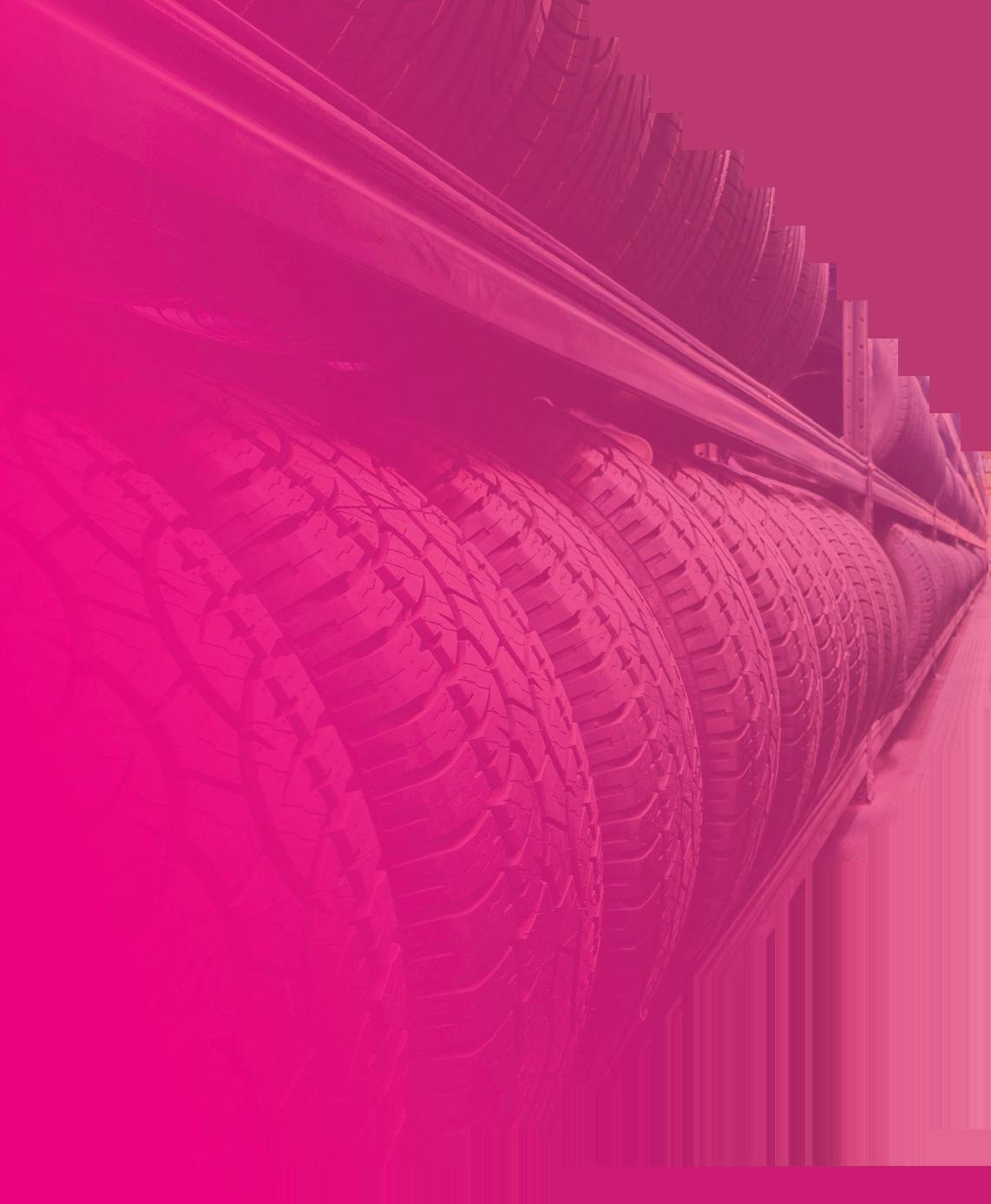

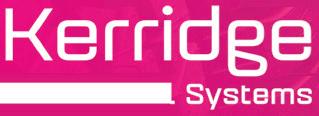
and manage declined services through their point-of-sale systems to enhance customer engagement and improve operational efficiency. This allows retailers to efficiently record and monitor declined services, enabling them to follow up
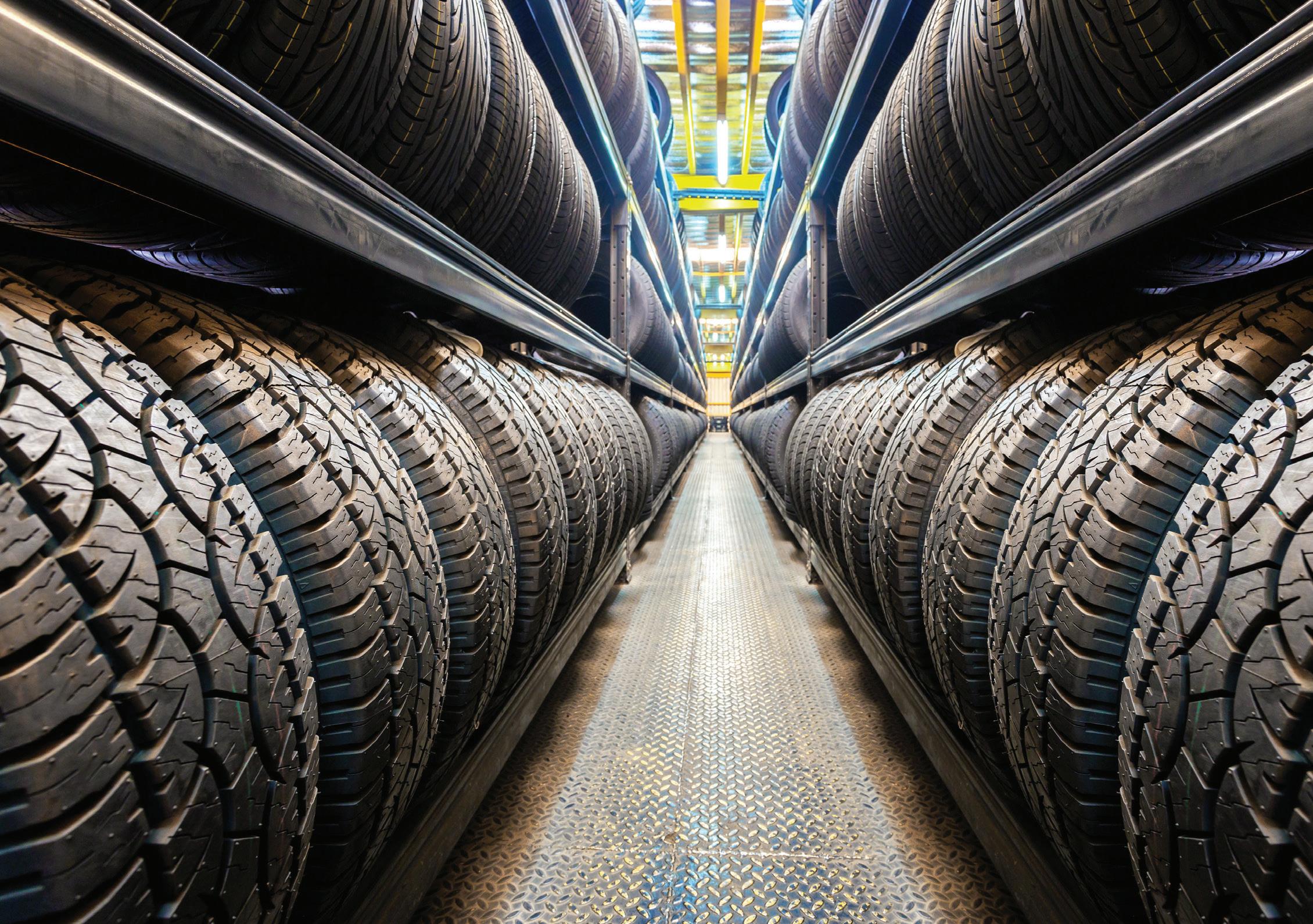









www.ModernTireDealer.com 37 Fully integrated systems packed with innovative features and solutions to help you grow your business. Point of Sale and Business Management Solutions for the Tire and Service Industries. Driving Business Performance 610.336.9045 | info@kerridgecsna.com | www.kerridgecsna.com B idg s om r w.ke manc dgec 2402MTD_KerridgeCommercialSystems.indd 1 1/12/24 2:22 PM
Photo: Kerridge Commercial Systems
Point-of-sale systems
with targeted actions and enhance customer communication. By effectively understanding and addressing declined services, tire retailers are aiming to maximize revenue opportunities and cultivate stronger, trust-based relationships with their valued customers.
Texting. Tire dealers are looking for texting capabilities in their point-of-sale systems for quick updates on service status, appointment reminders and promotional offers to enhance customer engagement and satisfaction.
Manufacturer and retread integration. Tire dealers are seeking ways to integrate manufacturers and retreading services into their point-of-sale systems. This integration not only streamlines operations and improves accuracy, but also enables seamless ordering processes and real-time inventory updates and ensures precise product information. Dealers can optimize their supply chain, minimize errors and provide customers with accurate product details and availability.
Jim Krakower, director of system development of Tire//SMART, JMK Computerized Tire Dealer Information System Inc.: We are seeing creative software support tools custom-geared to (tire dealers’) business style — coupled with vendor training/support/setup — to seamlessly integrate them into the dealer’s business.
In today’s information-driven marketplace, enlightened dealers interested in business profit/growth know that the secret to success is in providing their employees with software information tools for their business style, so they can provide the best customer service and operational efficiency, generate satisfied customers with five-star referrals and (achieve) excellent return on investment.
Heather Preu, CEO, Kerridge Commercial Systems North America: Tire dealers are looking at systems that help streamline their business. Allowing quick quoting of jobs and products to customers, integrated connections to suppliers for sourcing products, clear communication to their customers and integration with marketing companies to engage with their customer base are all things a dealer needs in today’s challenging business environment.
David Stumpf, senior account represen-
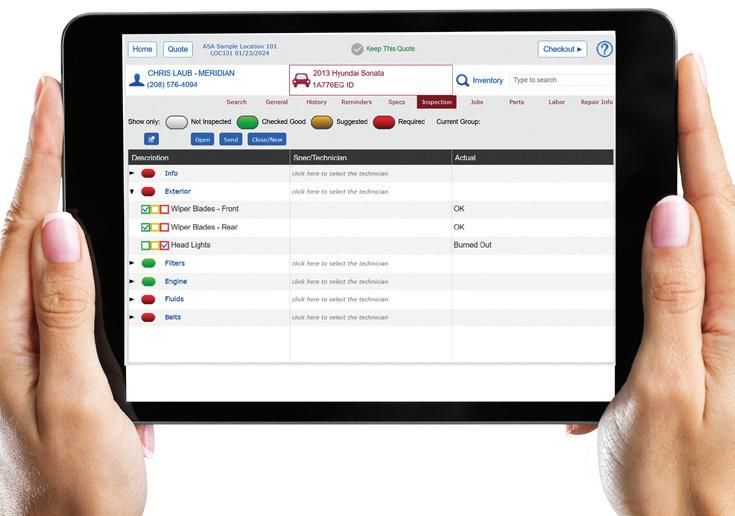
tative, MaddenCo Inc.: Owners of (tire dealerships) are looking for the ability for their staff to provide expert service and flexibility, while still having control over margins and the business data needs. Many understand (that) having one completely integrated system is a major advantage for them when it comes to managing the accuracy of their accounting data. They are looking for a program that can grow with them and will keep them at the forefront in the industry. They have learned a solid and stable platform cannot be understated and many have learned this is crucial in their software of choice.
Jefferson Carpenter, director and general manager, TCS Technologies: It really depends on the dealer. There are some commonalities in what dealers are generally looking for in a new business management system:
Usability. This means not just checking boxes on features, but how easy is it to maximize opportunity with customers at the counter and subsequently take care of their vehicles. If you need to comb through dozens of invoices to identify the last time an alignment was performed on a vehicle, you’re probably not looking at software that is going to make you more efficient and profitable. In addition to that, we all know the top issue facing tire and automotive repair businesses is finding and retaining good people. A shorter learning curve is important so employees can be more productive.
Integrations. Dealers are looking at all touchpoints and transactions in their business, (including) sourcing inventory from tires and parts vendors, national accounts integrations and accounting solutions. The better solutions are going to allow you to manage more of your business without jumping to different websites and manually entering information.
“Many dealers are interested in digital vehicle inspections that provide detailed reports with technician notes, action comments, images and recommendations, delivered directly to their customers’ phones via text or email,” says Jared Bailey, director of TireMaster Operation, ASA Automotive Systems Inc.
Scalability. While not all tire dealers are looking to add more locations, they are all looking to grow their business. We encounter a lot of dealers that have a long list of things they want to do better and finding a solution that you can grow into is important. Beyond that, it’s important to find a company that can support your growth after go-live.
Support. Dealers are looking for a solution that has a strong support organization behind the product they are using from open to close, every day of the week. Talk to current users that are well-known, successful businesses.
MTD: How does your point-of-sale system support tire dealers in adapting to changing demands and market trends?
Bailey (ASA Automotive): The tire industry is going through a rapid transformation and this is having a significant impact on the relationship between tire dealers and consumers.
Nowadays, customers have a lot of power when it comes to their tire purchasing and car service decisions.
They can easily research their options using search engines, which has changed their expectations. They now want seamless online experiences that go beyond traditional, in-store interactions. They want to be able to request quotes, schedule appointments and complete purchases online.
Tire dealers understand the importance of adapting to this new reality. Failing to do so not only puts them at risk of losing sales, but also undermines their competitiveness in an industry where meeting customer expectations is critical.
Our point-of-sale and digital tools have been meticulously designed to enhance the customer experience and attract more customers to dealer operations through modern techniques.
By seamlessly integrating company
38 MTD February 2024
Photo: ASA Automotive Systems Inc.
websites with the point-of-sale system, we enable website inquiries, simplify service scheduling and contribute to the development of a strong online reputation. We understand that the industry is moving away from traditional tech worksheets, which is why we have introduced digital vehicle inspections (DVIs).
This allows for detailed notes, images and recommendations to be easily sent to customers via text or email.
For tire dealers, our commitment extends beyond offering stand-alone DVI.
Our DVI tool seamlessly integrates with the point-of-sale (system), ensuring a smooth flow of information from inspection reports to service recommendations.
This integrated approach is crucial for boosting efficiency, giving dealers a unified and interconnected system that maximizes their operations for unmatched effectiveness.
Additionally, we have introduced textto-pay, a secure and convenient method for dealers to collect payments, keeping up with the changing preferences away from cash transactions.
Texting emerges as a powerful tool in our suite, enabling dealers to efficiently update customers on repair progress and vehicle status (and) ensuring a smooth flow of traffic in and out of their shops.
We offer e-commerce solutions that empower dealers to establish a compelling online presence, ensuring they remain profitable in an increasingly digital landscape.
ASA’s online store capabilities provide an engaging platform for customers to access high-resolution product images, check inventory, place orders and schedule services.
This holistic approach not only enhances (the) customer experience, but also improves operational efficiency, reduces expenses and positions tire dealers for success in a dynamic market.
Krakower (JMK): Tire//SMART helps dealers adapt, with extensive application of bar/QR codes on mobile devices and artificial intelligence fully integrated into our system processes (and) holistic, seamless integration of shop data, sales activity, back-office accounting controls and customer relationship management — with choice of on-site or web access and more.
It also provides custom program edits with options for minor or extensive cus-
tom program edits specifically geared to the unique requirements of each dealer operation. We can also optimize our programs to the dealer’s operational style instead of asking the dealer to change their preferred operation to a pre-defined, inefficient process.
Tire//SMART features full integration into our custom, industry-specific, backoffice business system, with tracking for multiple locations, multiple corporations, multi-state tax authorities, etc.
Preu (Kerridge): Consumers are looking for a quick transaction (and) hectic schedules require quick interactions. VAST Online runs on a web browser, allowing mobile service, integration with tire and part distributors for real-time availability and pricing on non-stocked products using OpenWebs and digital vehicle inspection, providing an honest assessment of the vehicle’s condition with pictures and videos using Carside. Connectivity with customers is an emerging trend and will only become more valuable in the future to gain consumer trust.
Stumpf (MaddenCo): MaddenCo has added enhancements to the program for our dealers. MaddenCo will continue to grow today and into future to support tire industry needs. We provide multiple opportunities for input from our user base and company team for ideas that add value for our user base.
Carpenter (TCS): The (COVID-19) pandemic was the most aggressive advancement in consumer expectation in modern history.
Overnight, (tire) dealers had to figure out how to advance 10-plus years to not only satisfy consumer expectations, but in many cases, the requirements of certain municipalities.
While software development doesn’t happen overnight, we were fortunate enough to have committed to changes in our product offering to accommodate changes in consumer behavior well before the pandemic.
We developed a mobile layer of our applications to enhance consumer interactions and provide a touchless service. ■



www.ModernTireDealer.com 39 MADDENCO TIRE DEALER SYSTEM Comprehensive. Flexible. Efficient. 812.474.6245 | moreinfo@maddenco.com Enterprise Software For Tire Dealers Request a Demo at MaddenCo.com 2402MTD_MaddenCo.indd 1 1/29/24 2:37 PM
Making Facebook a VIP experience
BEST-ONE OF INDY TESTS NEW TOOL TO IMPROVE ENGAGEMENT
By
Joy Kopcha
Having thousands of Facebook followers is nice, but Trula Womack, director of marketing and brand excellence at Indy Tire Centers Inc. dba Best-One of Indy, says the tire dealership wanted to find a new way to try to turn those followers into customers. Best-One of Indy has created a VIP group for its Facebook fans. Users can sign up for the group from the business’ Facebook page and when they do, they immediately receive a $25 gift card. Group members are then automatically signed up to receive monthly emails that feature a variety of promotions.
Those emails also offer customers the opportunity to win local prizes. Womack can segment the list into geographic markets and offer tickets to community events based on where the customer lives, so a customer in Lafayette, Ind., sees promotions for activities close to home and so does a customer in Indianapolis.
“We really just want to be able to engage people in their life outside of just tires,” Womack said.
Another important goal is to turn that somewhat anonymous Facebook follower into a real contact, with an email address or telephone number that can go into the business’ database. Some of those followers might already be Best-One of Indy customers, but others likely aren’t.
“We want to be able to keep getting their attention and then hopefully turn them into an in-store customer,” says Womack.
Once that customer walks in the door, the team at the front counter can check to see if they’re an existing customer in the point-of-sale system.
“As soon as we can get you in the door the first time, we’ll capture your (phone) number, if we don’t already have it, and get your VIN and then you’ll be signed up to get our service reminders,” she says. “We’re trying to keep everyone engaged online to then bring them in the store to be able to keep them (connected) throughout the year (and) engaged with us on different

touch points besides just at the counter.” Plus, Womack says the dealership wants “to be more proactive in educating people on what their car needs before they need it” and before there’s a light on the dashboard.
That might mean sending a text message reminding a customer that his or her vehicle is approaching x-number of miles and is due for an oil change.
That same message will include the all-important call to action: “Do you want to schedule that today?”
She’s also trying to use some of the lessons learned on social media to make Best-One of Indy’s emails more successful.
“Our engagement goes up on a post when we are giving away things,” whether it’s gift cards or tickets to watch the local minor league baseball team. So she wondered, “How can we keep this going?” Now the VIP group will be the only way to access those freebies.
FAN FRIDAY FUELS REVIEWS
And while the dealership’s social media channels might be designed to engage with customers, Best-One of Indy is also using those platforms to celebrate the good work of its employees.
But that work began internally first. Womack says the company wanted its employees to give their fellow team
Best-One of Indy shares its customers’ rave reviews every week as part of “Fan Friday.” But the social campaign has also helped the tire dealership collect more reviews — more than 14,000 — and improve its Google review rating to 4.8 on a five-star scale.
members shout outs and kudos for a job well done. Every Friday, she used the company’s internal messaging platform to showcase a review that mentioned an employee or store. Then she posted that same review to the Best-One of Indy social platforms.
There, the heralded employee’s spouse or another relative usually cheered them on and eventually other customers added their own kudos for that same employee or store in the comments section.
It’s grown into a program that Best-One of Indy calls “Fan Friday.”
But it’s also been a catalyst to collecting more reviews. If a customer visits a store today, he or she will receive a text reminder tomorrow saying “We hope you had a wonderful experience. Would you please share your feedback?”
“Fan Friday” began with around 4,000 reviews in the bank.
Womack said Best-One of Indy now has more than 14,000 reviews and an overall Google rating of 4.8 on a fivestar scale.
“Our goal of course is five. You know we’re always on the pursuit of perfection. We know we’ll probably never get there, but we’re constantly trying to come up with new ways to bump that number higher and higher.” ■

MTD February 2024 40
Social
media
Photo: Best-One of Indy




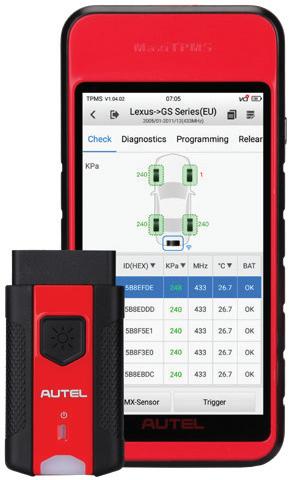









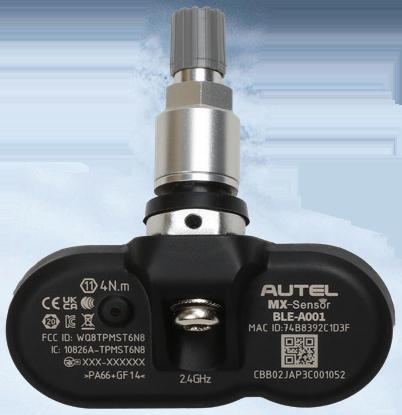
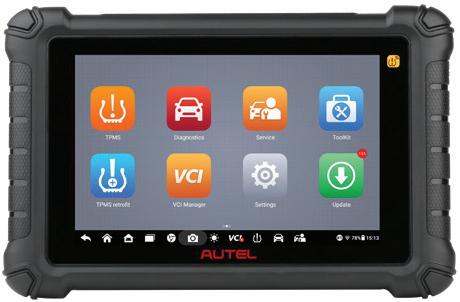
Automation and digitalization in mounting and balancing
TODAY’S TECHNICIANS EXPECT MORE TECHNOLOGY, EASE OF USE
By
Madison Gehring
As tire services go, mounting and balancing may seem basic, but that doesn’t mean mounting and balancing equipment are.
Executives from the Vehicle Service Group’s Rotary brand, Hunter Engineering Co., Atlas Equipment Co., Coats Co., BendPak Inc. and CEMB-USA/BL Systems discuss the biggest trends in mounting and balancing machinery in this MTD exclusive.
TRENDING NOW
“Automation and digital resources are the biggest trends in the mounting and balancing world right now,” says Kimm Johnston, wheel service product manager for Rotary.
“There seems to be a lot of app-based technology out there to provide resources and give technicians information, literature and training. These are all becoming popular, as everybody is starting to collect more data and trying to use that data to really tailor the customer experience and employee experience.”
Mike Israel, brand manager of Atlas Equipment, agrees that there are “noticeable” trends in mounting and demounting automation. “Now the tire changing machine can do more than half the work. And the automation of the wheel balancing process to capture the data versus manual measuring and data input is a new trend.”
The R80EX from BendPack Inc. is a dual-assist, tilt-back tire changer that includes adjustable RimGuard clamps and TurboBlast bead seating.
Scott Reinholt, national director of sales and business development at CEMBUSA, says that it depends on the age of the shop owner when it comes to preferences for equipment and equipment trends.
“The older generation wants it to be more analog and less technology,” says Reinholt.
“They want it to work and to just tell them where to put the weight” — compared to other technicians who “are very much getting into the more digital, automated machinery that is more precise and technical.”
To provide options, Reinholt says his company offers an analog tire balancer, the EZ10, all the way up to the fully digital ER100GT that the technician “basically sets with the safety speed nut and pushes a button and the machine does the rest.”
Greg Meyer, product manager for tire balancers at Hunter Engineering, says sizing and weight are some other trends.
“Let’s go back 10 years — everything was getting bigger and bigger and bigger and we had these massive (tire and wheel) assemblies and heavier assemblies,” says Meyer. “There still is an upsizing happening. However, it’s not the 30-inch, crazy aftermarket rims” seen in the past. “Those seem to have reduced.”

Mike Israel, brand manager of Atlas Equipment Co., says his customers are asking for more sophisticated equipment because of the technician shortage. The PWB90XL features technology to accommodate those requests.
become lower-profile and thereby less compliant and harder to change — not to mention more expensive. This means technicians must be well-trained and (must) use proper training procedures to remove these low-profile tires safely from wheels without damage.”
Another trend that officials see is the expansion of electric vehicles (EV) and what that means for the mounting and balancing industry.
“The growth in EVs is having a significant impact on virtually all aspects of the vehicle maintenance and repair industry and tire service is no different,” says Jeff Kritzer, president and CEO of BendPak.
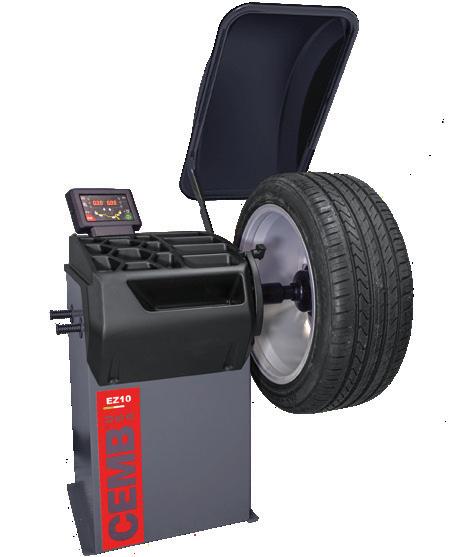
Scott Reinholt, national director of sales and business development at CEMB-USA says his company offers an analog tire balancer, the EZ10, all the way up to the fully digital ER100GT that the technician “basically sets with the safety speed nut and pushes a button and the machine does the rest.”

Kyle Harris, product manager for the Coats Co., says current trends he is seeing focus around care and precision.
“What I mean by that is that the days of guys ‘busting tires’ are over,” he explains.
“Sloppy work and careless habits have all but disappeared. Tires have
“Most tires used on EVs are different than those used on internal combustion vehicles. EV tires must be made to withstand the immediate torque and power EVs generate. They also must carry heavier loads — since EVs weigh more than (gaspowered) vehicles — without sacrificing durability and longevity.”
Kritzer says this results in EV tires needing tougher compounds and stiffer sidewalls than traditional tires, which can make changing the tires challenging when using underpowered tire changers.
“That’s why we recently upgraded the motors in all our Ranger tire changers,” he
MTD February 2024 42
Mounting and balancing
Photo: Atlas Equipment Co.
Photo: CEMB-USA/BLSystems
Photo: BendPak Inc.
says. The new motors “deliver the power required to tackle the stiffer sidewalls and new compounds EV tire manufacturers are using.”
GREATER EASE OF USE
“I believe there’s a responsibility in providing the equipment we do and it’s necessary to be able to have something to help make sure the tire
About 80% of Hunter’s balancers have a feature called automatic centering check, says Greg Meyer, product manager for tire balancers at Hunter Engineering Co. The Hunter Road Force Elite includes that feature as well.
dealer doesn’t (do) something that is going to cause the customer to think they did not do their job correctly,” says Reinholt.
Features like touchscreens on balancers and intuitive controls on tire changers are all high on a technician’s wish list.”
Johnson also acknowledges that technological advancement in tools — involving less manpower — result in a “more pleasant work environment. You’re doing a little bit more mentally, but physically you have a better quality of life at the end of the day, which plays into employee retention.”
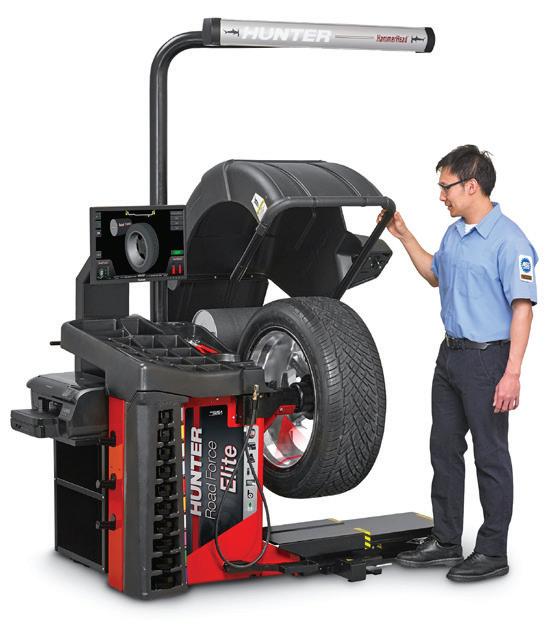
This is why technological advancements are important, according to Reinholt. “Tire dealers and technicians are asking for ease of use with their equipment. They don’t want to have a bunch of different steps that are required in order to get the job done.”
Israel says advancements in tire changers have moved towards leverless and “more sophisticated assist arms that do most of the manual work, deflating the tire and separating it from the wheel.”
Harris agrees that leverless tire machines were once seen as a “novelty,” but are now “necessary to change wheels on modern vehicles.”
Representatives from equipment manufacturers also believe that using modern, labor-saving equipment can help with employee retention and shop efficiency.
“Our dealers are telling us that they need to be as proactive as possible because they need to do more with less — meaning they need the equipment to make up for the lack of technicians,” says Meyer.
Harris notes that technicians want to make the most out of their time and have “practical ways to make the job easier. Wheel lifts on tire changers and balancers (have) become nearly a standard option because of this.
“Technicians demand technology to be fast to learn and easy to master.
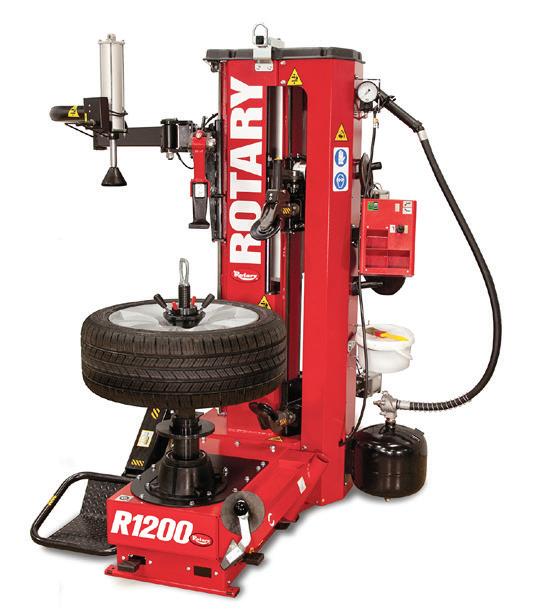
“Think about that from an equipment standpoint,” says Meyer. “The technician is barely able to learn and get comfortable with the equipment before they leave. So with that in mind, making the equipment as easy to use as possible is critical.”
THE RIGHT BALANCE
Harris says balancing machines must deliver ease of use, as well. Procedures like



The trend of leverless tire changers is now the norm, which is why Vehicle Service Group’s Rotary brand makes its R1200 Leverless Pro tire changer available.
“front coning steel and quickly pounding lead weights with a small hammer have gone by the wayside.
“Today’s vehicles use large-diameter, cosmetically sensitive and very expensive wheels,” which require “a technician to be very deliberate,” he says.
“When we install a new piece of equipment, we stay and train the technicians,” says Meyer. “That’s part of what you buy when you buy Hunter equipment. We always tried to make our equipment simple and easy to use, but now it is even more critical and essential.” ■







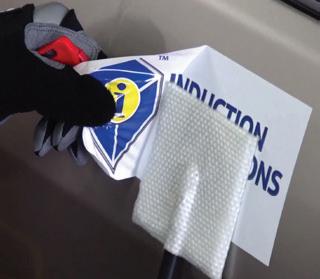










www.ModernTireDealer.com Home of the Original Mini-Ductor Follow Us on Social Media: www.theinductor.com 877-688-9633 Do it Faster - Do it Better - Do it Safer Do it Greener O2 SENSORS GRAPHICS GEARS STRUTS Mini-Ductor® Venom® HP 2402MTD_InductionInnovations.indd 1 1/29/24 2:16 PM 43
Photo: Hunter Engineering Co.
Photo: Vehicle Service Group
Commercial Tire Dealer ™
Market volatility
WHAT WILL IMPACT OTR TIRES IN 2024
By
FMike Manges
rom rising freight rates to global instability and even an upcoming presidential election, many factors are expected to impact the United States OTR tire market this year.
OTR tire manufacturers share their thoughts in this MTD exclusive, while looking back on 2023 and providing advice for tire dealers as they also grapple with various challenges.
MTD: What was the biggest trend that impacted the U.S. OTR tire market in 2023?
CHRIS RHOADES , vice president, BKT USA Inc.: In the first half of 2023, the biggest impact on OTR tire market demand was available stocks with dealers, with higher freight subsidy costs. Average costing took its time for dealers to implement, which started 2023 very slowly. After a few months, raw materials started stabilizing, freight rates started normalizing and domestic transportation/shipping companies also started rationalizing costs.
The second half of 2023 turned out to be much better and we were able to recoup lost sales from the first half.
ROB SEIBERT, president, off-the-road, U.S. and Canada, Bridgestone Americas Inc.: In 2023, we saw a continuation of the popularity of products that prioritize productivity and asset optimization. Customers want products engineered to lower total cost of ownership and increase productivity for their operations.
Additionally, there is growing demand among customers for real-time updates on every aspect of their operation in the palm of their hand and technologies are coming to market with this ability.

“In the first half of 2023, the biggest impact on OTR tire market demand was available stocks with dealers, with higher freight subsidy costs,” says
We also saw the global supply chain begin to recover in 2023 after backlogs challenged the OTR industry in 2022 — a welcome sight for market demand.
TONY CRESTA , director of product management, CMA LLC: The start of 2023 was slower than the first quarter of 2022 from a manufacturer’s perspective. This trend relates back to the end of 2022, when dealers took in large amounts of inventory that had higher associated freight costs.
Dealer sellout was slower at the start of 2023, but once the market thawed in April, we generally saw a nice uptick in sales and dealer sellout in the U.S. OTR tire segment. That trend carried us through much of the rest of 2023.
MATT FUTRELLE , head of global business field, earthmoving, Continental
Tire the Americas LLC: In 2023, we saw a shift in higher market demand to a market that had more tires available than needed. As this occurred, many dealers had unfulfilled orders that started to fill all at once, eventually leading to an overstock situation. We saw many manufacturers and dealers resolving this issue at yearend to start 2024 in the right position. Although challenging, we are satisfied with the performance of our earthmover tire business in 2023.
LOIC RAVASIO, general manager, global and Americas OTR, Goodyear Tire & Rubber Co.: One of the biggest trends Goodyear observed in 2023 was the challenging impact of external forces on the U.S. OTR industry and how we responded. After a 10-year high in 2022, driven by a surge in demand as a byproduct of the














































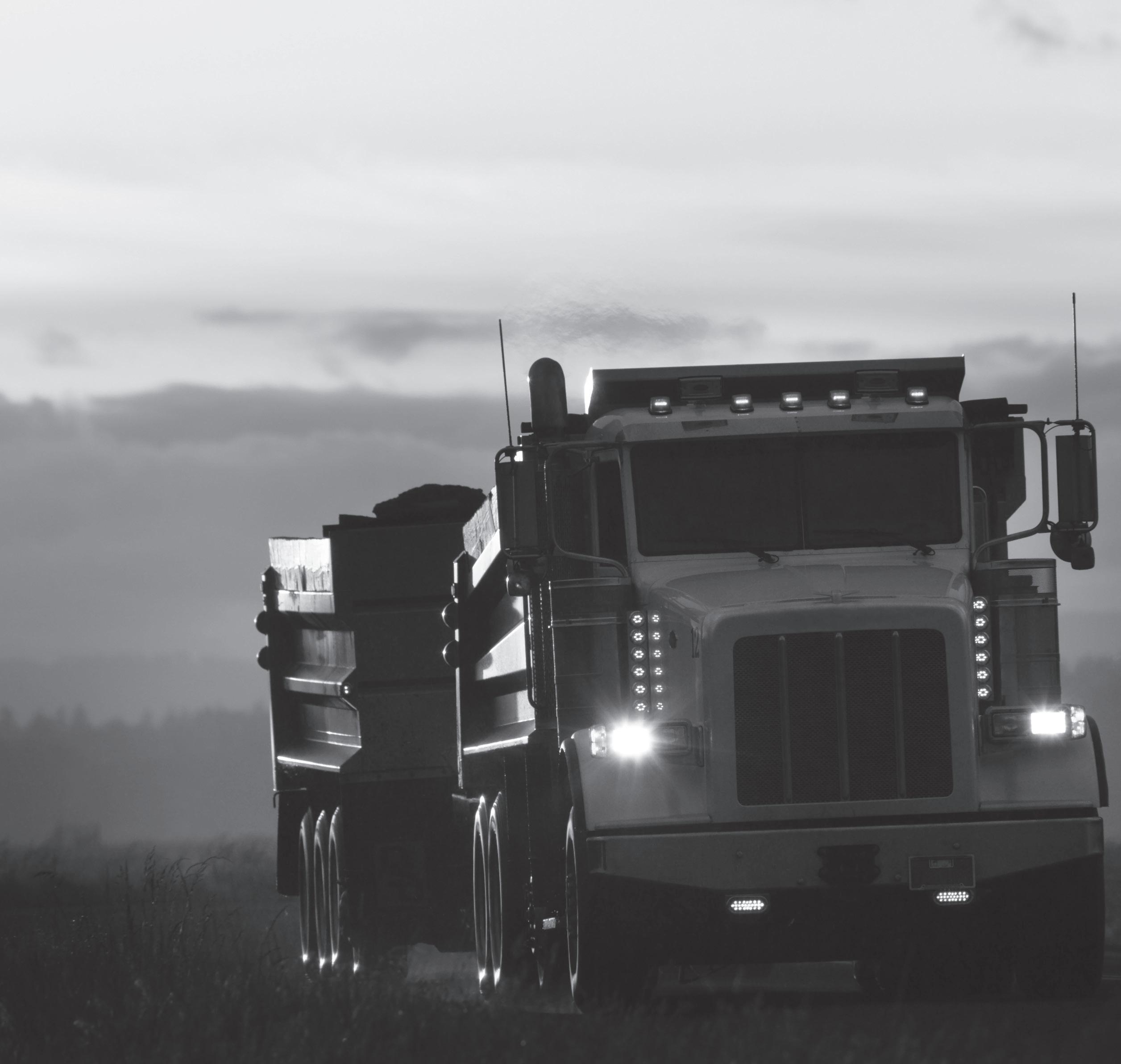


MTD February 2024 44
Also in CTD Weaver’s Tire Service ..................... 50 AG Tire Talk ...................................... 56
Chris Rhoades, vice president, BKT USA Inc.
Photo: BKT
COVID-19 recovery, our industry dealt with supply constraints and conflicting macroeconomic pressures in 2023.
Rising inflation and interest rates lead to inventory reduction and dealer destocking so they could focus on cash impacting inventory and buying decisions. The different OTR segments experienced ups and downs during the year, but all of them had some positive momentum as we finished the year.
Non-residential construction and infrastructure segments were up thanks to several bills passed by Congress and the president. Residential construction growth was slow during part of the second half of 2023, but rallied with a 20% surge in December, leading us into 2024 with momentum.
The global mining segment grew yearover-year as the entire industry adapts to the changing demands of switching toward more renewable energy and that impacted the U.S. market positively. Geopolitical impacts also meant a steady year for the military OTR segment.
All of these factors led to a challenging year for the U.S. OTR tire market in 2023, but two things continue to be clear: tire manufacturers found success by focusing on new products with innovative technologies and investing in solutions to keep OTR fleets up and running to maximize their tire investment.
JIMMY MCDONNELL , vice president of sales and marketing, Maxam Tire North America Inc.: Inflation, interest rates and general economic conditions. Projects were either delayed or canceled due to these economic impacts. We were expecting a large amount of infrastructure funding from the U.S. government, which has not been actualized in the expected amount. In general, we faced significant headwinds in the market that limited opportunities.
JESSE BURDETT, market intelligence, OTR, Michelin North America Inc.: With limited supply of original equipment in 2020 and 2021, business owners were forced to run used equipment past normal economical maintenance cycles.
As supply of equipment has improved, those same business owners have been purchasing new equipment to avoid the extended downtime and elevated maintenance costs of older equipment. With the majority of that new equipment com-
OTR tires
ing with OTR tires already mounted, the need to purchase tires from dealers was negatively impacted in 2023.
STEPHEN REYNOLDS , OTR director, Triangle Tire USA: The OTR tire market remained steady in 2023, while the industry held its breath waiting for the infrastructure legislation that was passed to be funded and then converted into active projects. We never really saw the boom in projects, but rather than experiencing a decline, the market held steady.
One major factor that influenced the market early on was overstock of product at the dealer level. We saw dealers try to shift their strategy for ordering inventory from a container purchasing model to more of a domestic warehouse ordering model, so that they could get product on an as-needed basis.
Fortunately, we saw this coming and got out in front of it by ordering heavily for our new warehouse locations. While container ordering (of) OTR product remains a strong part of our business, this shift to domestic warehouse orders has been good for both us and our customers. We will continue to put emphasis on domestic stocking levels and refining our product mix to best service our customers in 2024.
DHANANJAY BISHT, product manager — earthmoving, construction and industrial tires, Yokohama Off-Highway Tires America Inc.: The biggest influence on the 2023 U.S. OTR tire market was high inventory levels throughout the distribution and dealer chain. The shortages of the COVID-19 years were replaced by full shelves in 2023 — the result of dealers buying to restock and manufacturers’ renewed capacity to fill those orders. This left little room for new orders — a slowdown that was felt up the supply chain.
In terms of utilization of tires and equipment, 2023 saw steady growth in construction, aggregates and mining, boosted by U.S investment in infrastructure and jobs.
CHAN PHOTHISANE , OTR national sales director, ZC Rubber America Inc.: ZC Rubber America had a strong year. We started off slow at the beginning of the year due to heavy rain in many parts of the country, especially the western region. Tire dealers were overstocked with high-dollar inventory from 2022. Freight rates started


dropping in 2023 and there was a race to move out the high-dollar tires.
Once the ground dried up and inventory started flowing, demand for OTR tires went up. New construction on apartment buildings and multiple housing units like duplexes is (being) seen across the U.S.

MTD: What’s your forecast for the U.S. OTR tire market in 2024 and what trends will impact OTR tire dealers?
RHOADES (BKT): It’s too early to say at this point. Not only is 2024 an election year, but the recent Red Sea crisis has caused shipping cost increases. General rate increases have already been announced by shipping companies and we expect surcharges to come into play within the next few months.

























Different segments of the OTR market will be impacted differently. However, if the supply from the Far East is going to be affected with longer shipping times, increased freight rates and lesser availability of containers and ships, then there may be a shortfall in supplies to meet customer demand.
With respect to medium and large OTR tires, construction, aggregates and mining tire demand is expected to hold steady, unless another war impacts the world and the U.S.
SEIBERT (Bridgestone): We anticipate labor headwinds to continue to affect the end user in 2024. However, we have seen that year-over-year industry employment continues to be on the rise, which correlates positively with the OTR tire industry.
Global economic volatility has yet to subside, which may still impact the industry. But we do expect strong demand in the construction and aggregate segments this year, supported by the continued impact of the government infrastructure bill in the U.S.
CRESTA (CMA): As we enter 2024, our eyes are on the global macroeconomic trends and spikes in ocean freight. The good news is inflation has been trending down, but is still persistent. Just-in-time ordering and delivery to our customer base will be an important activity for us to support our partners through the market’s ups and downs.
FUTRELLE (Continental): The market will likely continue to be challenging in
46 MTD February 2024
OTR tires
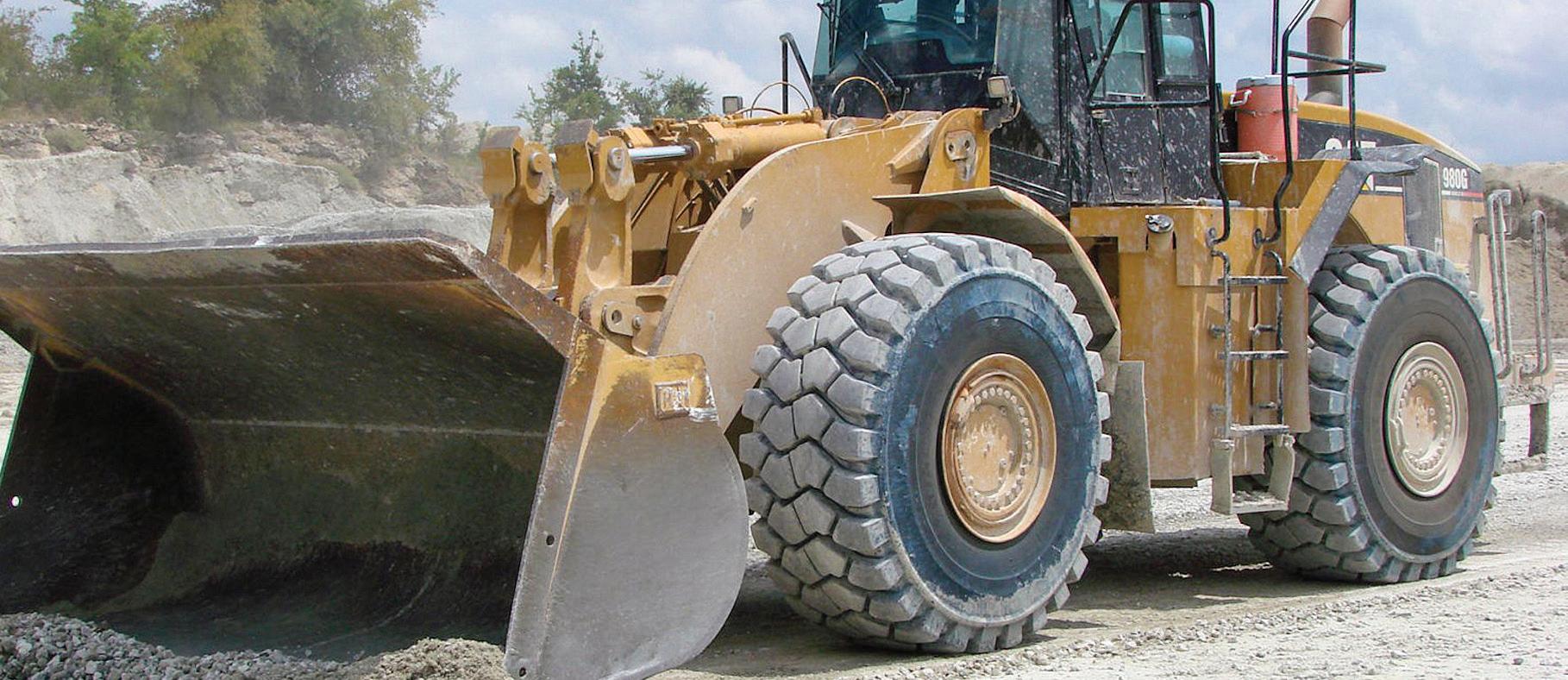
2024. We are looking forward to some of the infrastructure spending during 2024 and beyond. The cost of capital has increased, which can be challenging for capital-intensive businesses. This could surely be a headwind for the construction and mining industries. We are planning for growth, but it will only come with significant effort in 2024.
RAVASIO (Goodyear): Goodyear expects the overall forecast for the U.S. OTR tire market in 2024 to be flat compared to 2023 since there will still be some external pressures driving a level of uncertainty in the industry. However, there continues to be momentum within the industry, driven by innovative new products and solutions that help optimize performance and lower operating costs.
With all the pressures on the industry, we expect to see a continued focus on maximizing tire spend with our digital and automated solutions tailored to the diverse needs of our customers’ different sites. We will continue to work closely with our customers and dealers to determine the right tires and solutions to keep OTR fleets moving and delivering for our customers in 2024.
MCDONNELL (Maxam): We are forecasting moderate growth by taking market share, while not necessarily relying on the growth of the market itself. The original equipment manufacturers we work with are forecasting a contraction in the market,
which could be a leading indicator of the market’s upcoming condition.
Tire dealers should prepare for better conditions on replacement sales opportunities, given that new machinery sales are forecasted to be slowing down. Also we have recently seen some slowing down in inflation, which could lead to interest rate stabilization or reductions — allowing more investments and an overall improvement in economic conditions. However, since it’s an election year, many things remain unpredictable.
BURDETT (Michelin): I think the OTR tire market will see slight growth (of) 1% to 2% in 2024. Spending from the infrastructure bill will positively impact OTR tire markets. Interest rates and the response of the housing market also will dictate the recovery of the OTR tire market.
REYNOLDS (Triangle): 2024 is an election year and that typically means reduced bureaucratic red tape that can slow down projects as administrations have historically attempted to put their best foot forward. We are expecting to see some of that come to fruition this year in the form of infrastructure legislation finally translating into some earth being moved. I think our dealer base feels the same, as we have already started 2024 seeing some heavy ordering being done.
The OTR market has always been a “need it now” business model, so we will
focus heavily on our own domestic inventory stocking levels in order to supply dealers in a timely manner as they need it. We feel like the best is yet to come.
BISHT (Yokohama Off-Highway): I believe we will see continued growth in the construction industry in 2024, especially in infrastructure projects. If interest rates drop a bit, we will probably also see further growth in housing construction. Meanwhile, we expect mining to be strong, with high demand for aggregate for road projects and several newly commissioned American mines serving our growing need for elements like lithium.
PHOTHISANE (ZC Rubber): We are keeping an eye on the situation in the Middle East. The recent spike in freight rates at the end of 2023 and in early 2024 will influence the customer’s purchase plan. If freight rates continue to increase, the customer will need to stock up at the current price.
Election years are usually strange. Due to high interest rates and inflation, business owners are reviewing their budgets and trying to see where they can save. This has driven demand for lower-cost construction and mining tires.
I believe the tire dealer’s biggest fear is getting stuck with high-cost inventory. My suggestion is to keep stock on your popular SKUs and fill in on the SKUs that you don’t want to move as fast.
MTD February 2024 48
“I believe we will see continued growth in the construction industry in 2024, especially in infrastructure projects,” says Dhananjay Bisht, product manager — earthmoving, construction and industrial tires, Yokohama Off-Highway Tires America Inc. Photo: Yokohama Off-Highway Tires America Inc.
High-performance products matter. A partnership that helps you move more? That's what really matters.
ROADS & BRIDGES
• CONSTRUCTION
Bridgestone Off-The-Road offers a robust product line-up used in heavy-duty applications, supported by data-driven integrated technologies and best-in-class service.1
Our extensive dealer network, comprehensive training programs, and highly qualified field engineers help improve tire performance and reduce equipment downtime so our customers can focus on getting the job done.
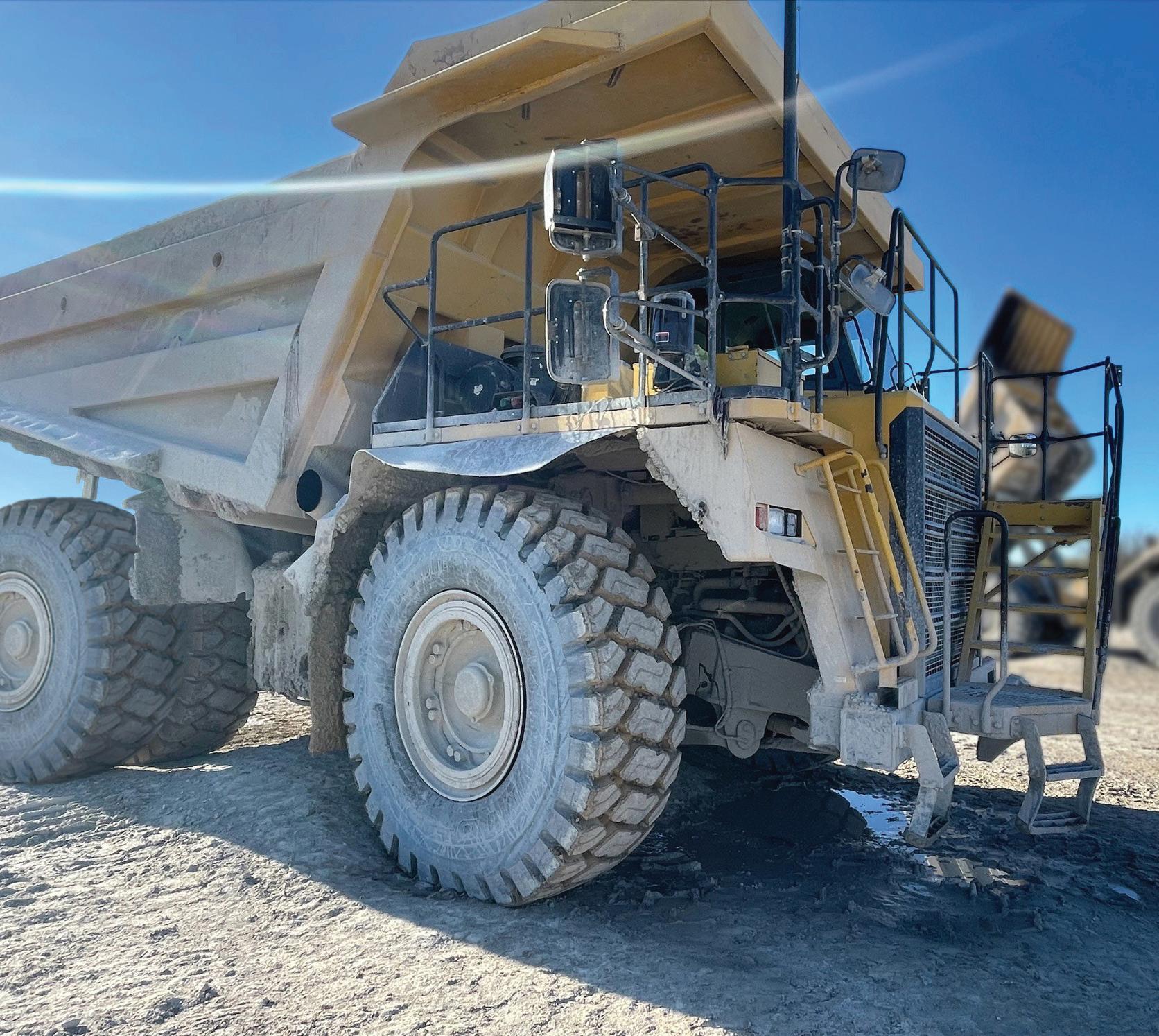


•
See how Bridgestone can help maximize your productivity • QUARRY “Best-In-Class Service” is based on the largest number of dealers in the commercial tire dealer network in U.S. found on www.commercial.bridgestone.com. As compared to the 2022 U.S. Replacement and Retreaded Medium/Heavy Truck Tire Brands with similar market share as listed in the January 2024 Modern Tire Dealer (page 34). © 2024 Bridgestone Americas Tire Operations, LLC. All rights reserved.
PORT
Weaver’s Tire Service
‘It’s service, service, service’
FATHER AND SON LEAD WEAVER’S TIRE SERVICE
By
Joy Kopcha
After decades of selling to and servicing commercial tire customers near Northumberland, Pa., Ron Weaver Sr. said his dream came true in 2010 when he opened his own tire dealership.
He had started working in the tire industry as a teenager in a retread shop where his father worked. His first job was trimming and painting tires. He worked for another independent tire dealer in Pottsville, Pa., and learned how to change and service OTR tires. Eventually, he landed at GCR Tires & Service and spent nearly 25 years there, helping commercial customers, many of them farmers.
“It’s pretty much all I’ve ever done,” he says.
Owning his own business “was something I wanted to do my whole life.” But he didn’t want to do it on his own.
Over the years his son, Ron Weaver Jr., had followed him to work. Ron Jr. says he “started going to the shop when I was five years old. I would spend Saturdays going to work with my dad. I didn’t really play sports in school. I just worked. I would spend the entire summer with him. I would go out on the service trucks with the guys. I grew up in the (tire) industry.”
When Ron Jr. finished college, he went back to work with his dad. They were working side-by-side and Ron Sr. says that they “were approached by people that wanted to back us financially and we took the opportunity. They helped get us going initially. Banks weren’t real eager to throw money at us. You have to find someone who believes in you and we did. We were fortunate. They saw we had the work ethic and the plan and it all worked out.”
And that’s how Weaver’s Tire Service Inc. opened its doors.
Ron Sr. admits it was “a little scary, but I was at the point the kids were grown and (were) out of the house. What’s the worst that can happen?”
Ron Jr. agreed that it sounded like a good plan and the two “haven’t looked
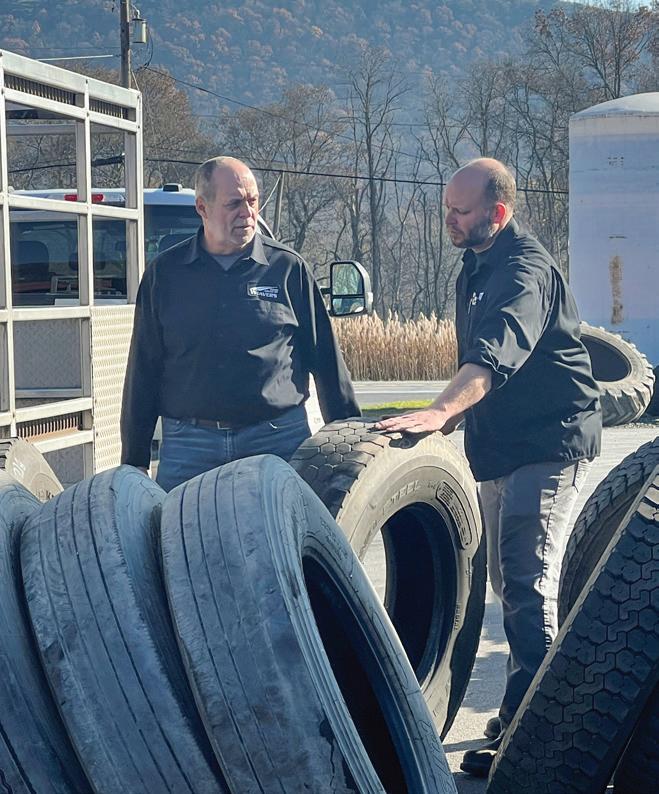
back since.” They have bought out their initial investors and the Weavers remain equal partners in the business.
AN EYE FOR FUTURE GROWTH
The Weavers started small, but always had a plan to grow. The first shop was 40-feetby-40-feet, just large enough for Ron Sr. plus his brother, Harry Weaver, and Ron Jr. Right off the bat, they served passenger and light truck tire customers, as well as commercial tire customers. They bought an old service truck so they could reach local farm customers, too.
Weaver’s Tire Service quickly outgrew that initial space and about 18 months later, the business added another building to the property. But the Weavers didn’t just knock down a wall and add on to the existing space. They had a vision for future expansions and opportunities and instead built another freestanding building on the site. It was built farther away from the road to ensure trucks would have plenty of room to maneuver.
Over the last decade, as the business
grew, they added onto the buildings and eventually connected the first two parts with 10 additional service bays, several of which are large enough to pull commercial trucks in to do work when the weather is less than desirable. There’s also storage space for tires and parts, including racks to hold 1,500 passenger and light truck tires, as well as extra containers to help hold the 700 commercial tires the business keeps on hand.
The newest piece of the building was completed in 2022 and added another 8,000 square feet of workspace. It features energy-efficient LED lighting. Plus, all of the building’s service bays are heated. Ron Jr. says they didn’t add air conditioning, but rely on large fans to help cool the air in the summertime.
Ron Jr. says, “We’ve always made sure we have the business before the growth. We always take a conservative approach to growth.”
BUILDING WITH CUSTOMERS
Weaver’s Tire Service may be located in a small town near the middle of Pennsylvania, but that doesn’t mean there’s not competition in the market. Some of the largest commercial tire dealers in the country compete for the same customers that the Weavers serve.
But Weaver’s Tire Service has developed a large and loyal client base. Ron Jr. notes that 30% of the company’s gross sales are commercial truck tires, while another 30% is split between farm, OTR and forestry tires. Passenger tire sales account for 20% of gross sales, while the remaining 20% comes from automotive service.
In 2022, the company sold 3,500 truck tires and about 1,500 farm tires, says Ron Jr. But he says they also want to be a customer’s “go-to place” for all tires. That means they also sell lawn and garden tires, as well as trailer tires.
“It makes us stand out a little bit,” says Ron Jr. “You can come here with just about any tire you can think of and we can have
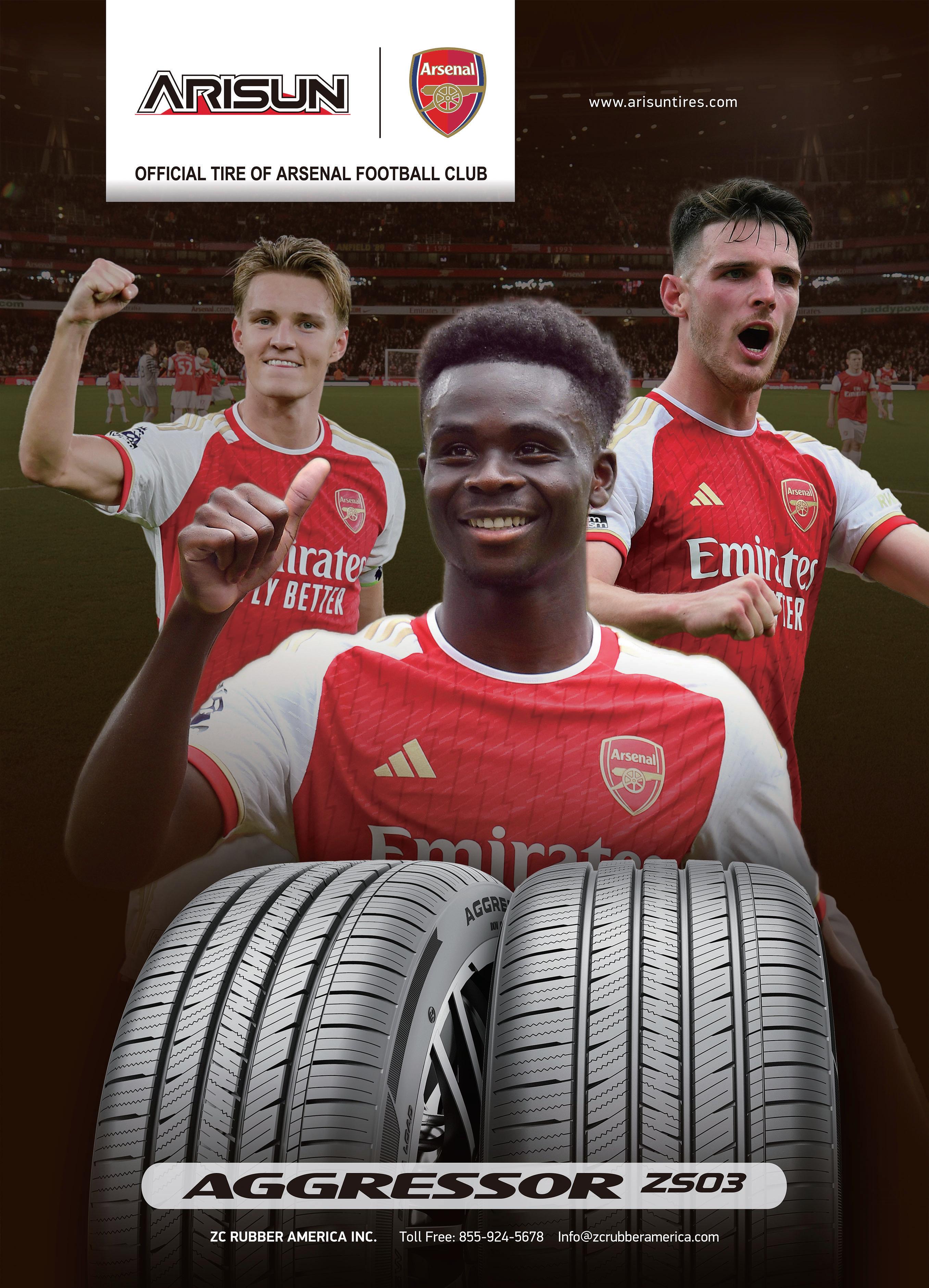
MTD February 2024 50
In 2010, Ron Weaver Sr. (left) opened Weaver’s Tire Service Inc. with his son, Ron Jr. “If it hadn’t been for (having) Ron with me, I don’t think I ever would have done this,” Ron Sr. says.
Photo: MTD

Weaver’s Tire Service
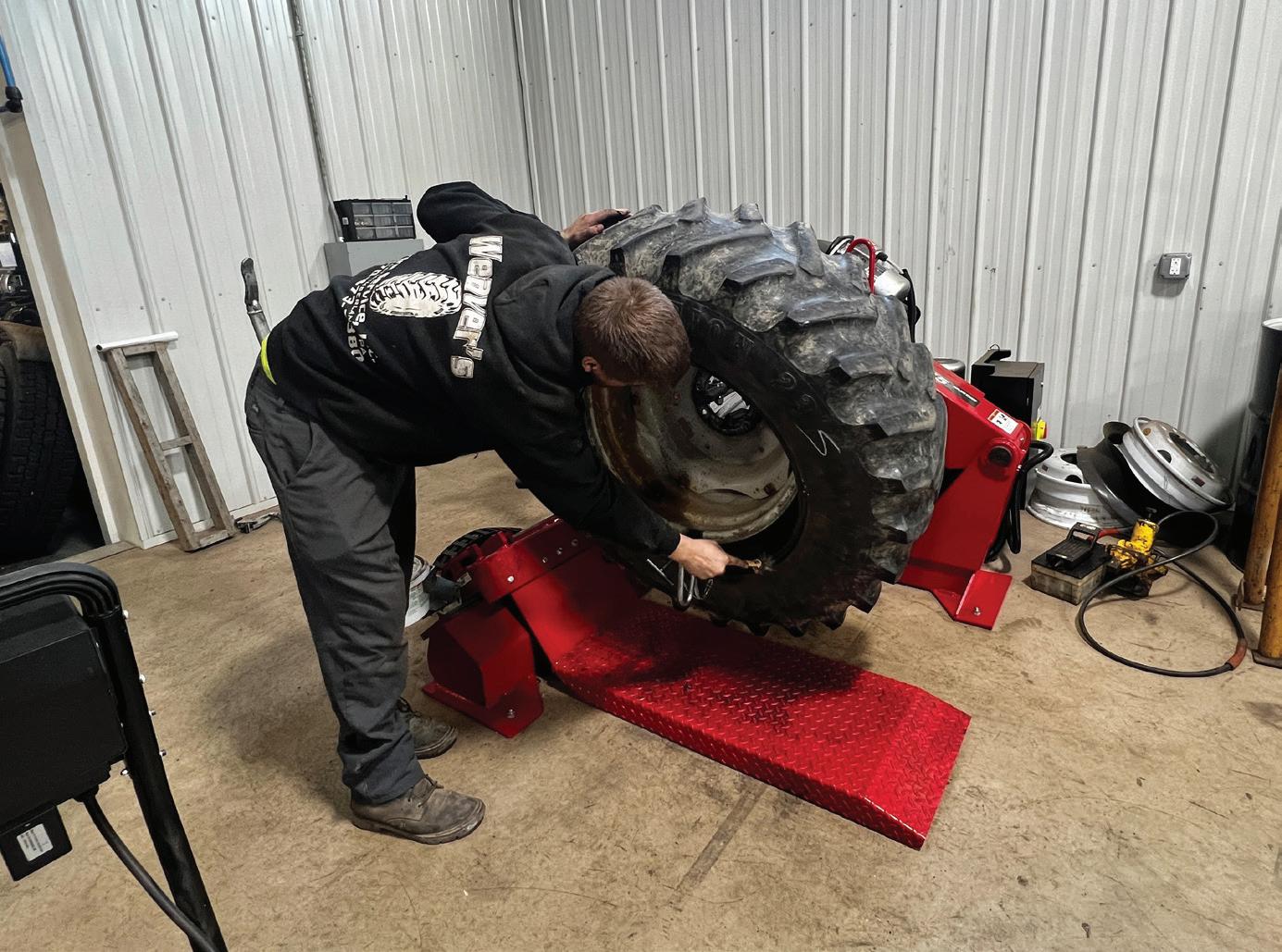
it sitting here or we can get it very quickly. There’s little downtime for any of our customers.”
That might seem like something worthy of an advertisement, but the Weavers say they haven’t had a need to do that.
“Our biggest advertising has always been word of mouth,” says Ron Jr.
He and his dad believe that their focus on providing good service is what has won over customers.
And when a customer is wowed by that service, they tell others about it.
The Weavers do work to make sure their existing customers know the full breadth of services they provide.
“I had a customer in yesterday,” says Ron Jr. “We put four tires on his truck. He didn’t know we did alignments. He’ll be back in today for an alignment.”
That individual is already a farm tire customer, but most of his ag tire service calls are done on site.
It wasn’t until the customer drove to the Weaver’s Tire Service storefront that he discovered the business offered non-tire services.
“We do their trucks, their pickup trucks and now we’re starting to service their (personal) vehicles,” says Ron Jr.
Picking up additional vehicles is a piece of the company’s ongoing growth. That’s also the reason why Weaver’s Tire
Service has added a full menu of automotive service.
“We wanted to be a one-stop shop,” says Ron Jr. “It started with alignments, because tires and alignments go hand-in hand.”
The business also offers vehicle inspections — Pennsylvania requires yearly vehicle inspections — and that opened the door to additional service work.
“We didn’t like putting tires on a vehicle and having to send (the customer) to another shop to have another service performed, when it would be more convenient for them to be here in our waiting area, (with us) taking care of everything at once. Also it’s an opportunity for us to grow.”
While Weaver’s Tire Service accepts walk-in customers, all of its automotive service work is scheduled ahead of time.
SERVING A 50-MILE RADIUS
The dealership operates two service trucks and while both are outfitted for medium truck tires, the bulk of their service calls are for farm, OTR and forestry service applications. Officially, Weaver’s Tire Service helps customers within a 50-mile radius of Northumberland, but some are even farther away.
Corn and soybean farmers represent a large share of the overall business and Ron Sr. says that it’s critical to have “the
right person in the (service) truck” to take care of those customers.
“There are days we’ll have a service truck loaded with six or eight farm rears and that tech gets in the truck and we don’t see them all day,” he said.
“You’ve got to be able to trust them to make good decisions out there. There’s no one to guide them. They have to be trained right and be able to make the right decision and do the job.”
That same tire technician could just as easily be called to a remote location within Pennsylvania’s Weiser State Forest. Ron Jr. says forestry requires tires that are application-specific and are “built to withstand extreme conditions.
“We’ve got some customers with really large machinery. A wheel and tire assembly that we work on now is probably 2,000 to 2,500 pounds. Sometimes they have liquid in them for extra weight. They’re big machines. You have to make sure you’re using a forestry tire and forestry- specific products.
“You also have to know the tricks to changing tires like that. They’re not on threepiece wheels. They’re on one-piece wheels and they have to be manually mounted.”
Ron Sr. points out that “if a guy is up in the woods somewhere and blows a tire out, we’ve got to go there.”
Ron Jr. adds that “they can be some ugly jobs.”
It’s a tough assignment, but there’s also less competition in the local forestry market, they note.
“You’ve got to have the right person to do that job,” Ron Sr. says.
KEEPING EMPLOYEES HAPPY
So how do you find and retain workers, especially when you’re located in a remote area of Pennsylvania?
“That’s the most difficult thing of being in business anymore,” says Ron Jr.
“To find younger people who want to do it and get involved (in the industry) — year to year, it’s getting harder for us.
“We have a great crew now, but we’ve been in the lows of that. A year or two ago, it was a lot of long days for us and for everyone here.
“We could still use another person or two a lot of days. But everybody steps up to the plate and puts in the extra effort when we need it.”
Ron Sr. says the company’s “core workforce is pretty solid, but it seems there’s always one or two positions that come
MTD February 2024 52
The busy dealership invested in a heavy-duty tire changer to help mount and demount larger tires from wheels.
Photo: MTD
and go.” It’s the entry-level tire technician jobs that seem to have a revolving door, he notes.
“We are fortunate. We have some very good people.”
Weaver’s Tire Service has 14 full-time employees and three part-timers, plus Ron Sr. and Ron Jr.
The Weavers have raised wages and offered benefits including health insurance, paid time off and a 401(k) with a company match.
But the benefit that seems to resonate the most with employees came about as a result of the COVID-19 pandemic: Weaver’s Tire Service is no longer open on Saturdays.
Ron Jr. notes that the company has always worked a half-day shift on Saturdays.
But during the early days of the pandemic, the business cut those hours as a cost-saving move.
“Later, with the effort to keep people happy and prevent burn-out, we looked at our last quarter of Saturdays and there were no days that blew our minds in terms
Weaver’s Tire Service

of business coming through the doors,” says Ron Jr.
“You’re limited what you can do in a four-hour window and there are no deliveries. So we made the decision in 2021 to close on Saturdays and we haven’t looked back.”
To compensate for the little bit of overtime that employees lost, the dealership
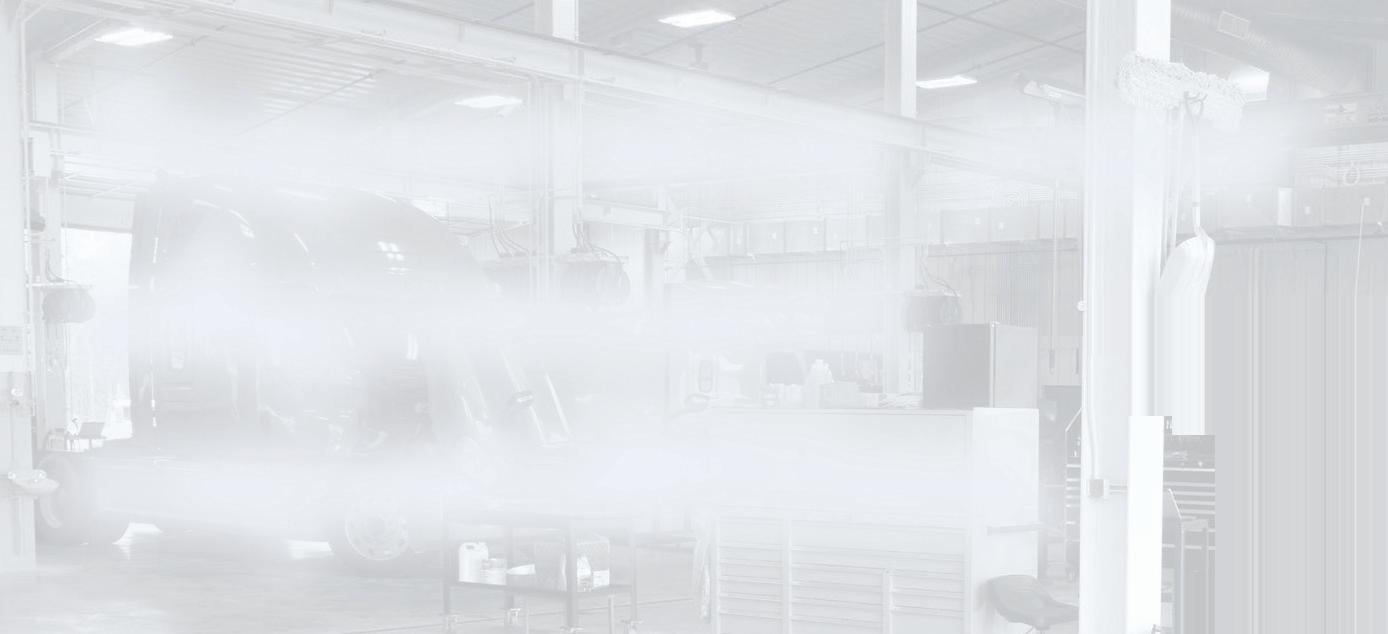


offered a shift differential and “nobody complained about that,” says Ron Jr.
This has proven to be a big boost in keeping employees happy, he adds. And he acknowledges it has improved his own life. He’s now the father of three young boys under the age of 4. “Having two days a week with them is huge. For our employees, it’s the same thing.”





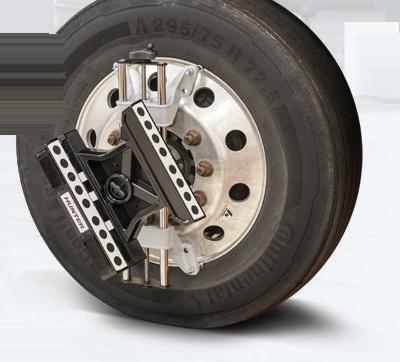
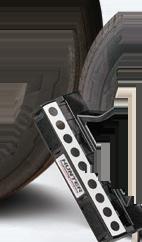



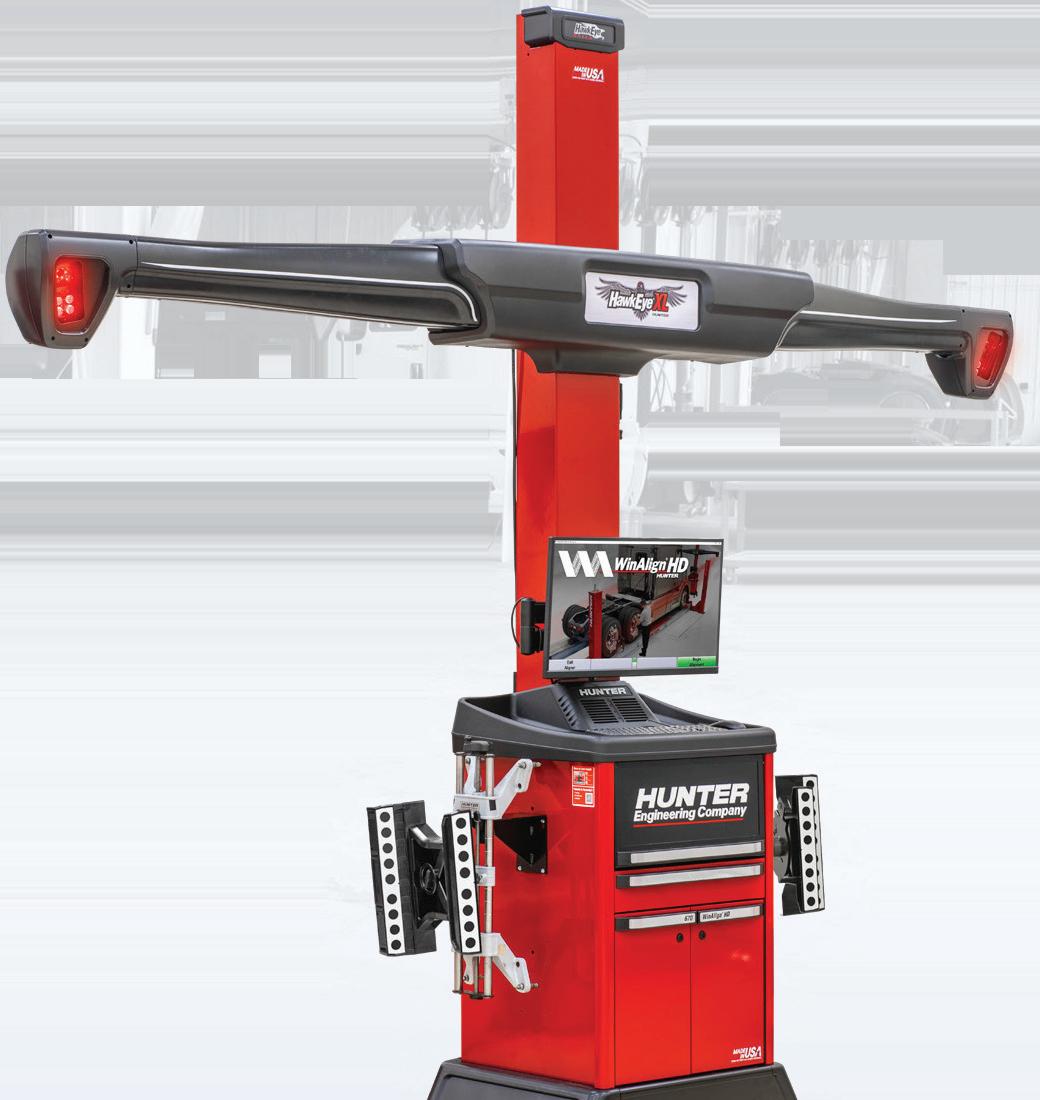









53 www.ModernTireDealer.com
Supersize your alignment capabilities. p Hunter’s new HawkEye® XL commercial aligner measures three axles in four minutes or less. hunter.com/hawkeye-xl Scan or visit 2402MTD_Hunter.indd 1 1/29/24 2:01 PM
Weaver’s Tire Service operates two service trucks and serves farm, mining and other off-the-road customers within a 50-mile radius of Northumberland, Pa.
Photo: MTD
There’s another unspoken benefit, he adds, and that’s one that comes with working for a small, independent tire dealer.
Ron Jr. says there are perks to working for a smaller company.
“We’re flexible with people’s time off. If there’s a family issue, we all step up to the plate to take care of that.
“If someone has to leave because their kid is sick, it’s not an issue. We try to encourage people to focus on that.”
“If they’ve got a problem they know they can come to us,” says Ron Sr.
WORKING WITH K&M TIRE
Weaver’s Tire Service has been fortunate that its tire wholesalers have offered them credit from day one, and that helped the Weavers get started.
Weaver’s Tire Service continues to work with several wholesale distributors, but K&M Tire Inc. has become the tire dealership’s primary tire resource.
In summer 2020, K&M Tire acquired Safemark, a division of the Pennsylvania Farm Bureau that distributed tires from a warehouse in Middletown, Pa.
Weaver’s Tire Service is a member of the Farm Bureau, so it was a natural move to buy tires from Safemark, whose warehouse was about 90 minutes away.
When K&M Tire acquired the busi-
Weaver’s Tire Service
ness, Weaver’s Tire Service continued to order tires from that warehouse, as it was a primary source for the company’s ag tires.
Gradually, the K&M Tire orders started to include other commercial tires and now Ron Jr. says K&M Tire is the dealership’s primary source for Continental and General brand passenger and light truck tires.
”Our business with them has grown exponentially month after month since they came into the market,” says Ron Jr.
And since purchasing the Safemark business, K&M Tire has moved its warehouse to a new spot in Hughesville, Pa., just 30 minutes away from Northumberland.
Because the new warehouse in Hughesville is so close, K&M Tire provides twicea-day deliveries to Weaver’s Tire Service. A tire ordered by 11:30 a.m. is delivered by 1 p.m.
Ron Sr. calls it “incredible” to be able to tell a farmer who breaks down in the morning that a Weaver’s Tire Service technician can be back with his needed tire by the early afternoon.
With reliable service and an inventory lineup that so closely matches what Weaver’s Tire Service sells, Ron Jr. says his company doesn’t need to carry as many tires in stock.
“Two years ago, our inventory level was probably $100,000 more than what it

is now,” he says. “We don’t really need to have a cluttered warehouse when we can get (tires) so quickly from them. It frees up cash and frees up space.”
‘IT’S SERVICE, SERVICE, SERVICE’
Just as the Weavers appreciate good customer service from their suppliers and wholesalers, they work to go the extra mile for their customers, too.
When an independent truck driver who bought a new set of tires recently called and said the tires weren’t riding smoothly, he made an appointment to come back.
Reacting quickly, Ron Jr. met him at the door of the dealership and a team of technicians removed and checked the balance of both drive tires.
They found that the tire on the driver’s side of the truck was out of balance. They immediately addressed the problem.
With a handshake, the driver was out the door and on the road again. He called back to report the vibration issue had disappeared.
Weaver’s Tire Service counts independent owner-operators as its customers, as well as local commercial fleets, most of which have around 20 vehicles.
For every customer, providing thorough service is the priority.
The dealership’s fleet business has grown “a little bit,” says Ron Sr., but he acknowledges there is probably more business available to capture.
However, the Weavers are careful not to bite off more than they can chew.
“We don’t want to take on more than we can handle, because that just compromises service for everyone,” he says.
Sometimes providing excellent service comes in the form of going the extra mile to find the specific tire that a customer wants.
Ron Jr. says it’s not unusual for Weaver’s Tire Service to source tires from a warehouse in the midwestern U.S., if that’s what it takes to satisfy the customer.
Ron Sr. says this ability was especially important when some commercial truck tires were in short supply during the pandemic.
“We will scour the country to find something for somebody if they need it,” he explains.
“A lot of times we found what the customer wanted and they were just so appreciative of that.
“They tell us, ‘I called so-and-so’ or ‘I
54 MTD February 2024
If a customer experiences a problem after a tire installation or service appointment, Ron Weaver Sr. says it’s dealt with quickly. “People come in here (and) they’re dealing with us. We will make things right — right here, right now.”
Photo: MTD

Weaver’s Tire Service
called this place and they don’t have them in stock’ and that’s all there is to it.
“They just appreciate that we put the time in to actually try to find” the tire they need, he adds.
“That’s just the way we’ve always been. You have to earn somebody’s trust and somebody’s business. It’s not just going to come to you.”
Despite tough competition in Weaver Tire Service’s area, the constant struggle to retain good workers and other impediments, the Weavers say they had a sense in 2010 that they could make this business dream of theirs work.
Ron Jr. says that the two “just had faith in ourselves and our ability to dig in and work harder than anybody else.
“We felt like that was enough to get us through it.”
Ron Sr. agrees that the secret to Weaver’s Tire Service’s success and continued growth is “service, service, service.
“We have truckers coming here with a flat tire and as soon as they turn in we take care of them and we get them in and out.
“I’ve heard so many times, ‘Thank you.

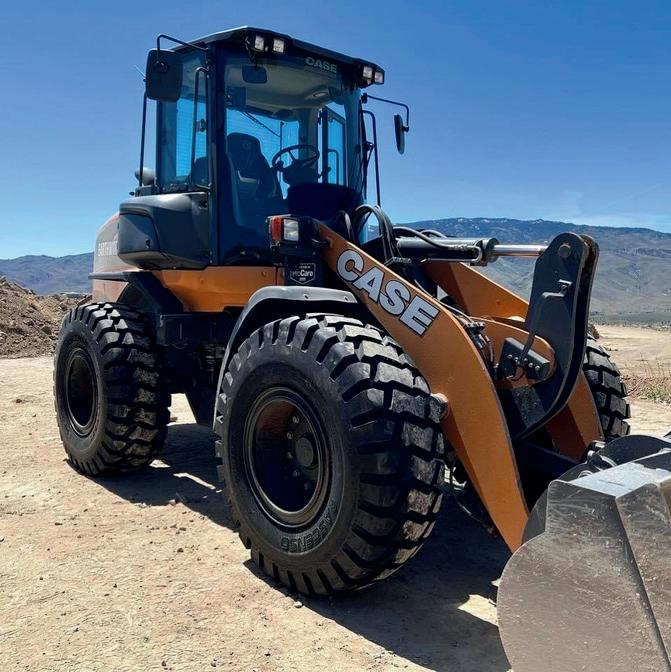

























This is the best service I’ve ever had.’ I just think that’s the ticket.
“And I think that’s how we got to where we are,” he explains.
For more than a decade, this father and son team has worked side by side to build a thriving business.
And there’s a transition in the works. In June 2023, Ron Sr. started to back away from the business, reducing his schedule to two days a week.
It hasn’t been easy, he admits.
“When you do something for so long, you miss it, even though some days when you’re here you think, ‘I can’t wait to get away.’
“It’s not that I’m concerned about (the business) because Ron (Jr.) is incredible.
“I’m very proud of him. If it hadn’t been for having Ron with me, I don’t think I ever would have done this.
“We’re a team. It’s something I wanted to do together.
“It’s awesome to have something you dream about come true.
“I always wanted to do this, but I don’t know if I would have done it (alone).”





















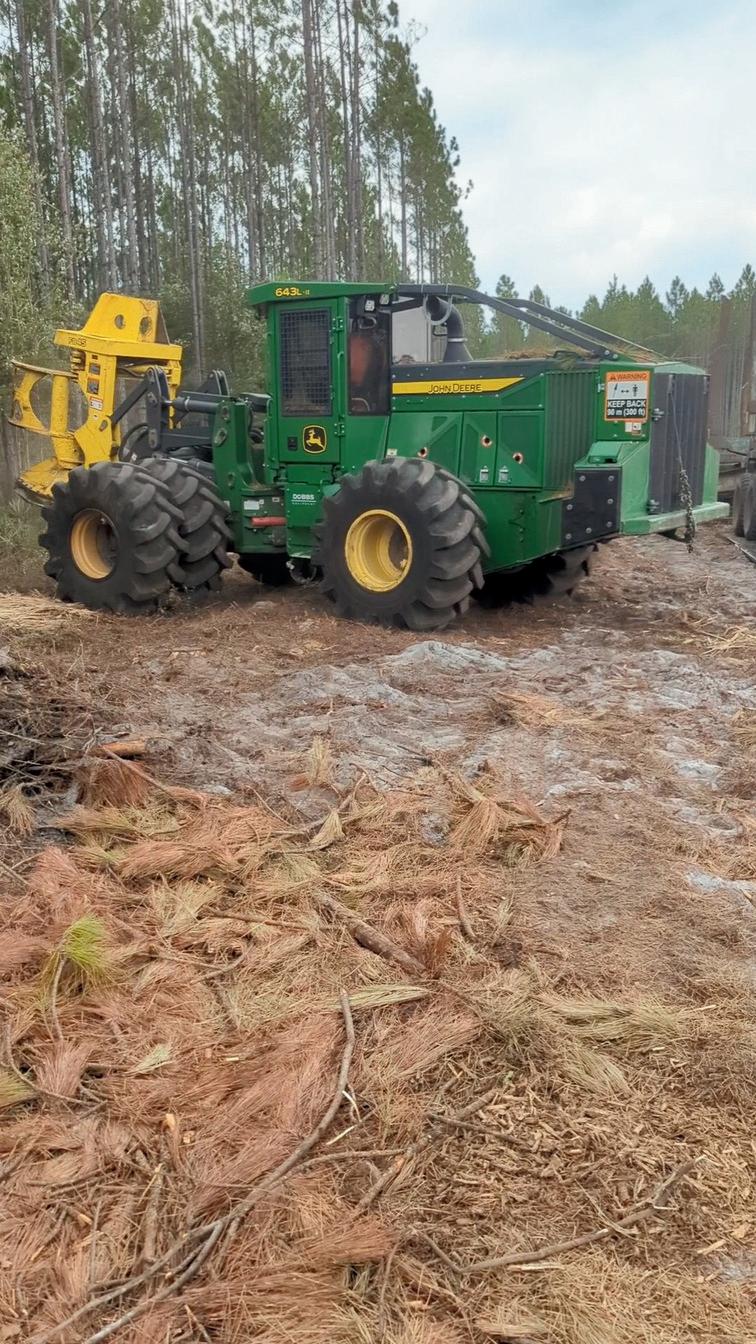






















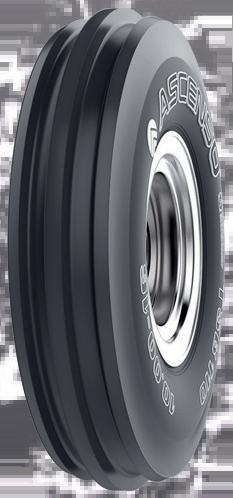




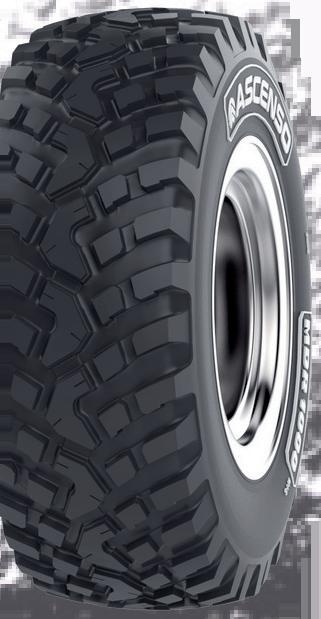




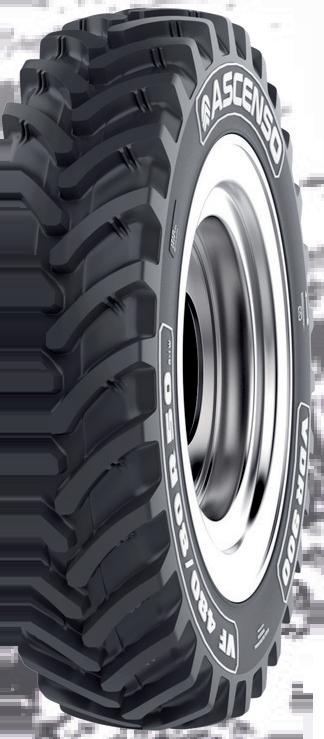

55 www.ModernTireDealer.com
AscensoTiresNA.com 866-570-3323 SUPERIOR PERFORMANCE SUPERIOR PERFORMANCE ON EVERY TERRAIN ON EVERY TERRAIN Explore Ascenso’s extensive range of off-highway tires specifically designed to maximize performance. Agricultural | Industrial & Construction | Forestry | Earth Mover 2401MTD_AscensoTires.indd 1 1/5/24 11:06 AM
Tire Service keeps about 2,200 tires on hand, including lawn and garden and trailer tires, plus
and
Weaver’s
an assortment of passenger, light truck
commercial truck tires.
Photo: MTD
The benefits of using IF and VF tires
REDUCTION IN SOIL COMPACTION IS JUST ONE OF MANY
QUESTION: What are the benefits of using increased high-flexion (IF) and very high-flexion (VF) tires?
DAVE
PAULK, manager, field technical services, BKT USA Inc.: IF and VF tires are becoming more commonplace in the market and are used on more equipment now than in past years. There are definite advantages in using IF/VF tires and applications where they work and perform much better than standard tires. Farms are more spread out. Farmers must get their tractors and equipment from one farm to the next by driving on the road. As equipment gets heavier, IF/VF tires are useful in carrying the weight of the equipment at highway speeds. IF-rated tires are made to carry up to 20% more load at the same air pressure as a

Modern Tire Dealer has partnered with AG Tire Talk to provide answers to insightful questions that farm tire dealers have about farm tire technology. This is the next installment in our ongoing series, which is designed to help farm tire dealers better connect with their customers. A trending question, followed by answers, will appear in our Commercial Tire Dealer section every other month. For complete answers, click on www.agtiretalk.com.
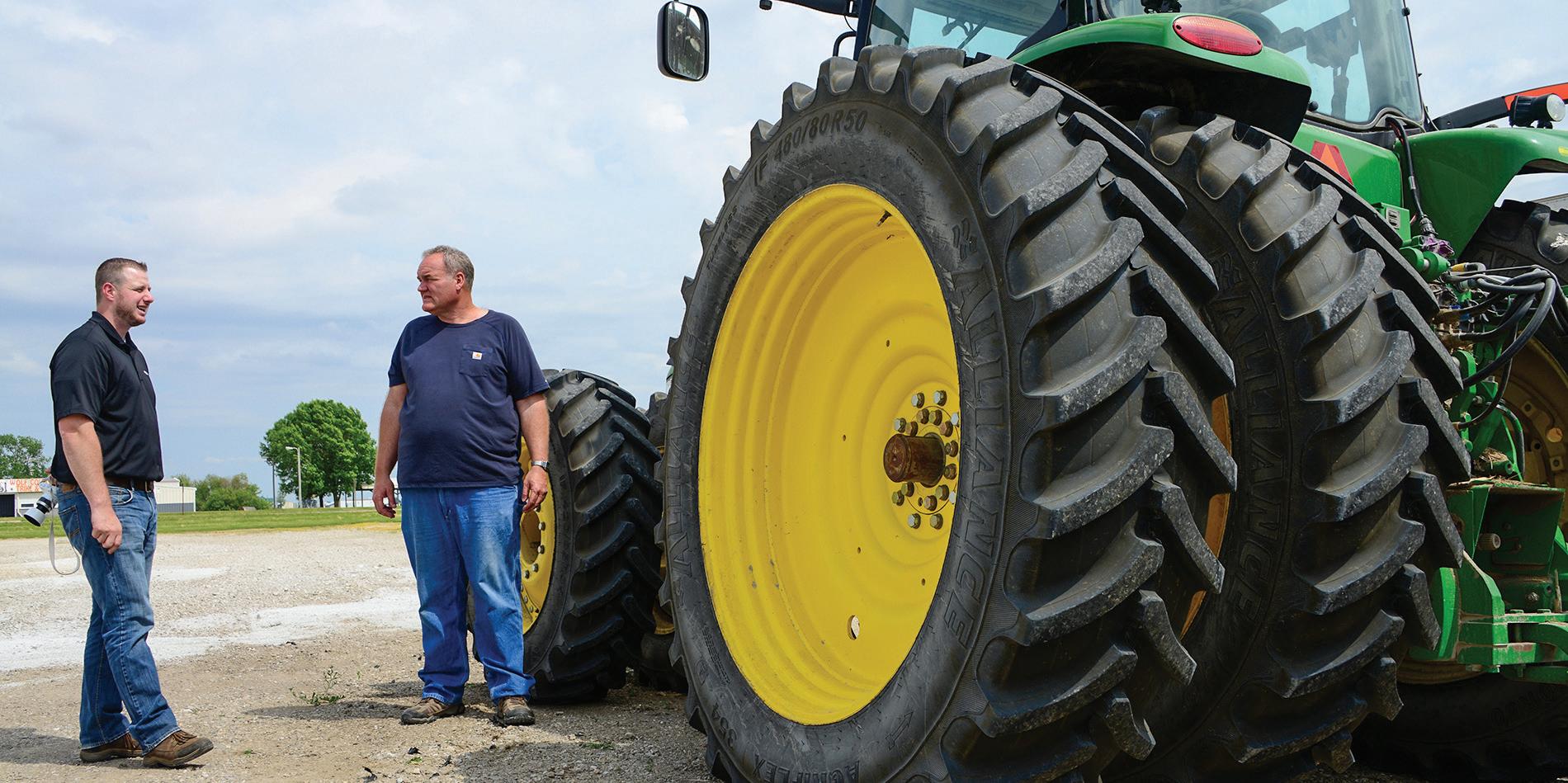


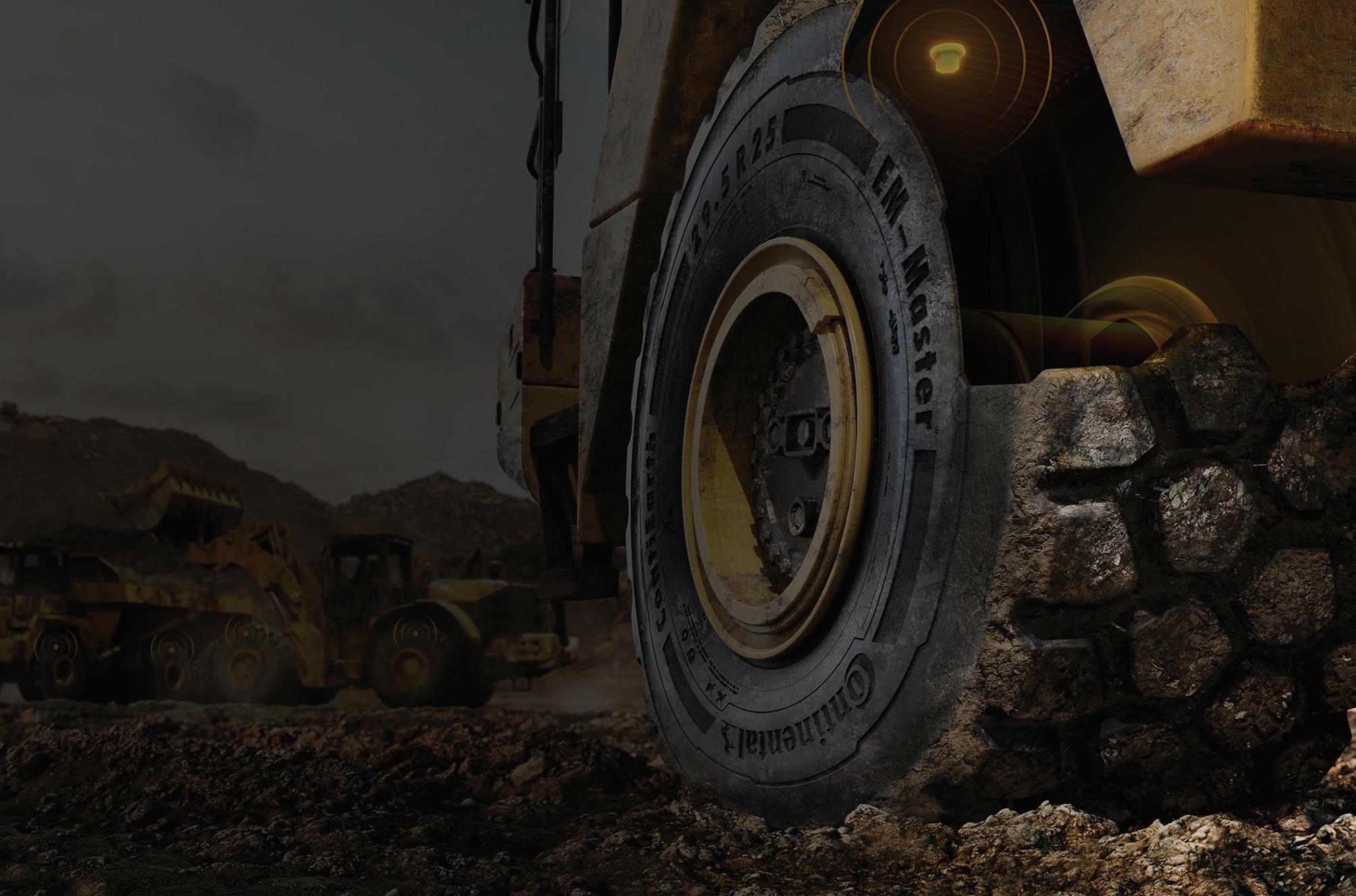



56 MTD February 2024
iOS 2402MTD_ContinentalTire_HalfPg.indd 1 2/5/24 8:18 AM
AG Tire Talk Android
Photo: Yokohama Off-Highway Tires America Inc.
standard tire. They will carry higher loads at higher air pressures than standard tires.
VF tires are made to carry 40% more load at the same air pressure as a standard tire. They can also carry heavier loads at higher air pressures.
When transporting equipment at highway speeds, oftentimes this higher load capacity is needed to keep the tires from failing because of heat buildup and overload.
Most tractors will run at least 30 mph and most sprayers will run at 40 mph. Higher air pressures are needed when transporting on the road to carry the weight and keep the tires running cooler. In some cases, IF or VF tires must be used because of the heavy weight of the equipment.
Conversely, when used in the field, IF and VF tires can be run at less air pressure to minimize soil compaction, where no-till and minimum-till farming is concerned. They are being run at slower speeds.
However, the tires must have enough air to carry the weight of the tractor and implements. Since air pressure determines ground bearing pressure, IF and VF tires
AG Tire Talk
can be run with 20% and 40%, respectively, less air pressure compared to a standard tire. By running less air pressure in the field, the radial tire has a wider and longer footprint to help spread the weight of the tractor or equipment out over a wider area. This also offers better traction and more fuel savings in the field.
When central tire inflation systems (CTIS) are used, tires can be inflated for road use and deflated for field use. Low air pressures set for field use do not work on the highway. The faster a tire rolls, the less weight carrying capacity it has. Running low air pressures on the road allows tires to run hot and they don’t dissipate heat as easily. This will cause tires to eventually fail in the bead and sidewall areas. Conversely, running lower air pressures in the field will minimize soil compaction, give better traction and burn less fuel.
Some IF and VF tires may be labeled as IF or VF-CFO (cyclic field operation) tires.
CFO tires are used mainly on combines and grain carts where the loads are cyclical or changing and are not constant. At slower speeds, these tires allow load bonuses for use in the field at slower field
speeds. IF-CFO tires allow a 70% load bonus at up to 5 mph cyclic, a 55% load bonus at up to 10 mph cyclic and a 35% load bonus at up to 20 mph cyclic.
VF-CFO tires allow a 48.5% load bonus at up to 5 mph cyclic, a 35.5% load bonus at up to 10 mph cyclic and a 13.5% load bonus at up to 20 mph cyclic.
At slower field speeds IF or VF-CFOdesignated tires will carry a lot of weight without having to adjust air pressures.
GREG GILLAND, vice president, global agriculture, Maxam Tire North America Inc.: On average, agricultural tires tend to operate between 16 psi to 20 psi for mechanical front wheel drive or four-wheel drive tractors working in the field; about 25 psi for combine harvesters; and above 60 psi on self-propelled sprayers.
The development of IF and VF technology is allowing working air pressures to be lowered significantly, delivering improved performance and better crop yields. The structural design and capability of modern tires impact how much air pressure is required to carry the intended axle load. All radial tire casing structures

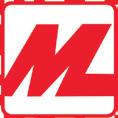


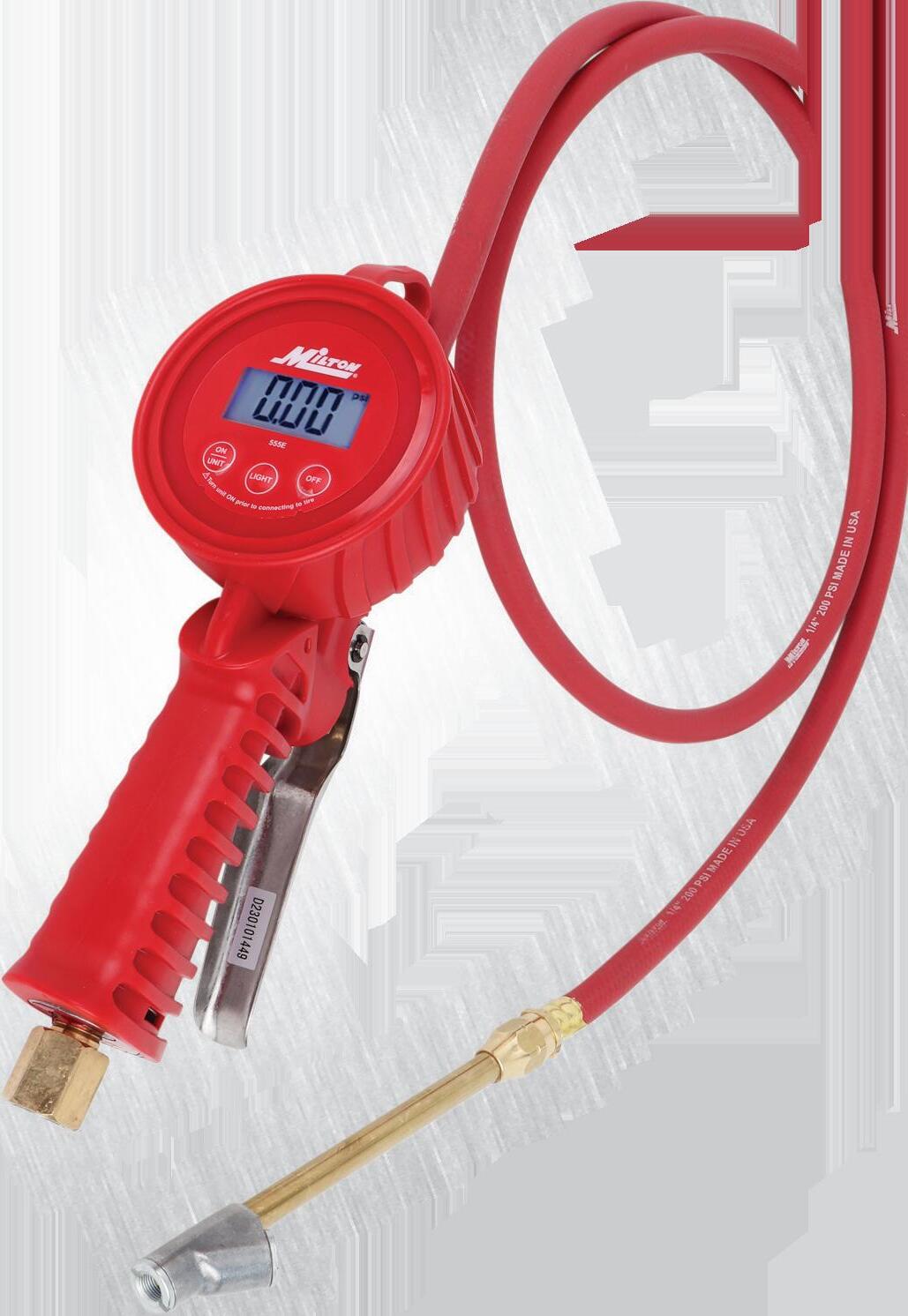
2402MTD_MiltonIndustries.indd 1 1/30/24 9:47 AM57 www.ModernTireDealer.com
only carry 20% of the actual intended load, with the compressed air accounting for 80% of the carrying capacity.
This is true in any radial tire application, from passenger vehicle tires to the largest giant OTR mining tires.
The advent of IF and VF technology is rewriting the rules by giving the structural components a larger impact on the carrying capacity — transferring the axle load carrying responsibility away from the compressed air and increasing the weightbearing function back to both the casing and rubber materials.
IF and VF tires are evolved products that use improved rubber compounds and higher tensile strength cables or cords to achieve the load, speed, heat resistance and endurance that can be demanded in their work applications or conditions.
Referring to VF tires with CFO, in most cases, the greatest enemy of a tire is the corresponding heat generation on the tire casing that occurs as machines get heavier, carry greater axle loads and operate faster.
For example, the current transition in the market to larger combine harvesters evolving from Class 9 to Class 10 machinery, designed with greater horsepower, is increasing the demand or use of tires that can offer CFO capability.
In essence, a CFO-engineered tire — whether developed as a standard, IF or VF product — must be able to withstand continuous dynamic loads in the field. Specifically, CFO tires are working in repetitive cycles during the harvest season, with tire loads increasing and decreasing
AG Tire Talk
‘Both IF and VF technology allow a tire to operate at its fullest capacity, meaning the footprint of an IF/VF tire is maximized.’
David Graden, operational market manager, agriculture, Michelin North America Inc.
dramatically in a very quick period from light loads to heavy loads as the harvester works the field filling or emptying its onboard bin.
A CFO-rated tire therefore must be capable of flexing under extreme working conditions at specific air pressures, without compromising performance, traction, productivity or soil compaction.
IF or VF tire technology provides the best viable solutions to cyclic field conditions as their construction materials have been engineered to provide the endurance, casing integrity and air pressure capability to withstand both the changing load and corresponding heat generation, without compromising performance.
DAVID GRADEN, operational market manager, agriculture, Michelin North America Inc.: The big idea behind IF/VF technology was to enable tires to carry more weight than standard radial tires without really changing the size of the air chamber.
This technology also gives equipment manufacturers a larger range of tires to carry heavier machines or increased hopper and tank sizes on harvesters and sprayers.
IF tires widely hit the market first. IF tires can carry up to 20% more load than standard tires at the same air pressure or they can operate at 20% less air pressure and carry the same load as a standard tire. VF tires hit the market immediately after and will carry up to 40% more load than standard tires at the same air pressure or they can operate at 40% less air pressure and carry the same load as a standard tire.
Both IF and VF technology allow a tire to operate at its fullest capacity, meaning the footprint of an IF/VF tire is maximized both wide and long.
It allows the full width of each lug to contact the ground, in addition to putting more lugs on the ground, due to a longer footprint. These features, combined, will produce maximum traction and floatation for any field application.
To take it one step further, IF/VF technology has also enabled us to add the CFO index to harvester and sprayer tires. This technology takes into account the short amount of time a tire is under maximum pressure due to a full hopper or sprayer tank. Since this weight diminishes over time, we have created an inflation pressure table which allows the user to be more precise with air pressures and truly set the lowest air pressures to carry the maximum weights, in field. As mentioned earlier, add a CTIS to this technology and you can








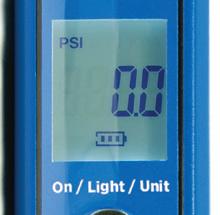





MTD February 2024 58 CHARGER VOLTAGE: INPUT AC 110 - 240 V (50-60 HZ) CLEAR DIGITAL READOUT INCLUDING BATTERY CHARGE STATUS www.KENTOOL.com 768 E. North Street, P.O. Box 9320 | Akron, Ohio 44305 | Fax: 800-872-4929 E-mail: sales@kentool.com | © 2024 Ken-Tool. All Rights Reserved. KT20240129 1-888-536-8665 Tire Inflators Premium Digital Tire Inflator PN 26081 Programmable Handheld Automatic Tire Inflator PN 26012 Premium Digital Tire Inflator PN 26082 2402MTD_KenTool.indd 1 1/26/24 8:51 AM
‘IF and VF tires are the products of amazing engineering, cutting-edge materials and meticulous construction.’
Blaine Cox, national product manager – agriculture, golf and turf, Yokohama Off-Highway Tires America Inc.
really maximize your machine’s efficiency and productivity.
BLAINE COX , national product manager — agriculture, golf and turf, Yokohama Off-Highway Tires America Inc: IF and VF tires — and their ability to carry even higher loads under the CFO designation — are probably the most exciting technology in the ag tire business today, with the greatest potential to help improve productivity on the farm.
That’s because IF and VF Tires can help farmers reduce compaction force on their soils by 20% to 40% or carry higher loads than conventional radials, without increasing compaction.
IF and VF tires are the products of amazing engineering, cutting-edge materials and meticulous construction that allow us to construct extremely flexible, extremely tough IF and VF sidewalls and snug beads.
The result is that those tires can carry extremely heavy loads at low inflation pressure, without the strain and heat buildup that would occur with conventional radials or bias-ply tires at those pressures.
With IF and VF, you can also choose which benefit you want to take advantage of — higher load at the same pressure or the same load at lower inflation.
The extra flexibility in the sidewalls and outstanding performance of the casings of IF and VF tires create a longer, larger footprint, which spreads load to reduce soil compaction, puts more lugs on the ground for greater traction and improves fuel efficiency.
On top of that remarkable capacity, there’s a cyclic field operation load bonus. Look for “CFO” on the sidewall like this: VF420/95R50 CFO. During harvest, loads increase and decrease as grain moves onto and off the combine or grain cart. On har-
AG Tire Talk
vesters and grain carts, CFO changes the game. At speeds of 10 mph or less, CFO ratings allow an increase in the permitted maximum load on IF tires by as much as 55% and VF tires as much as 35.5%.
At 20 mph, an IF tire can carry 30% higher load due to its CFO rating, while a VF tire in cyclic field operations can carry 13.5% more.
There are some very important restrictions to CFO use. First, the machine must operate in the field at or below the designated speed — usually 10 mph. It must also cycle through the load. It can only carry the maximum CFO load no more than one mile before unloading begins. On the road, the machine must be empty or operate within normal load/speed parameters.
MANUFACTURING HIGH-QUALITY PRECURED TREADS AND RETREADING MATERIALS SINCE 1952
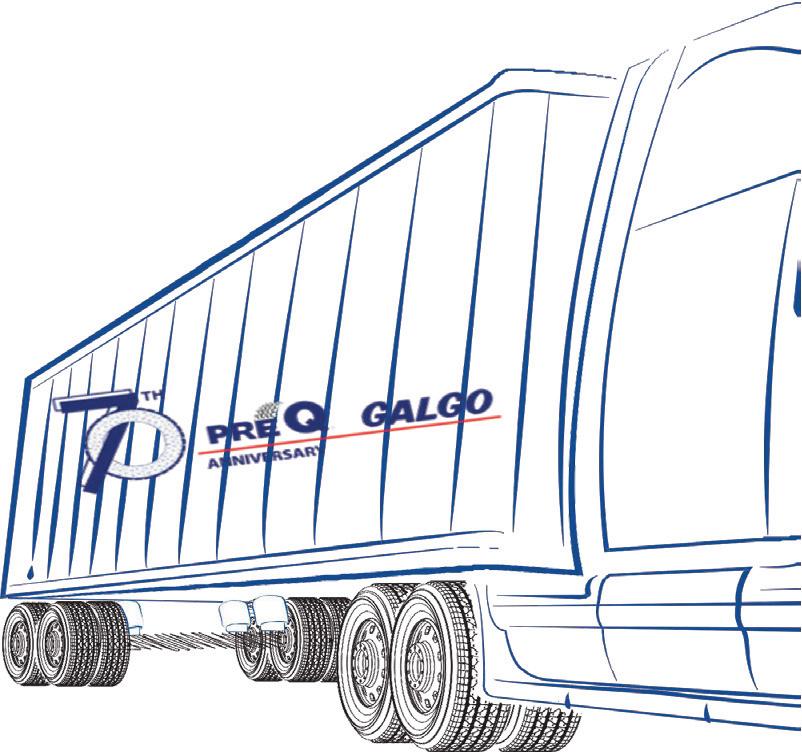




We provide world-class retread solutions to independent retreaders throughout the United States and Canada that includes over 70 different precured tread designs, commercial & OTR extruder strips, cushion, repair materials, and technical support.


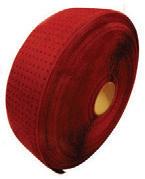
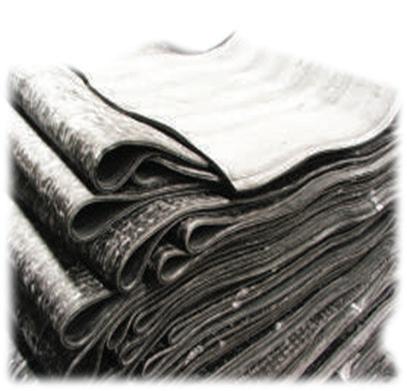
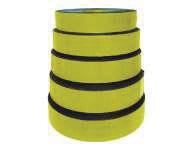


59 www.ModernTireDealer.com
Pre-Q Galgo Corporation 4329 Bronze Way Dallas, TX. 75237 Ph # 214 330 7300 - Fax # 214 331 2222 E- mail: info@pre-q.com www.pre-q.com
2401MTD_PreQGalgo.indd 1 12/15/23 10:33
By
 Dennis McCarron
Dennis McCarron
How to prevent theft at your dealership
PROVEN STRATEGIES TO PROTECT YOUR BUSINESS
Have you ever been the victim of theft at your dealership? How can you prevent this from happening?
Theft by employees can hurt your business’ profitability. Theft within a business is likely to occur when three things — risk, opportunity and need — exist. So what can you do to protect yourself?
First is applying some common sense oversight. Money is the easiest thing to steal. It’s small, it’s light and fits easily into pockets. Cash oversight is simple. Count your drawer every night and every morning. Additionally, a surprise drawer counting in the middle of the day tells employees that “I trust because I verify.”
Regular dead counts are also important. Do you know how tires are stolen from your store?
The usual process is bringing a set of tires out from inventory and placing those tires near the tire changing machine. Then an employee notices they are “the wrong tires” (Oh no!) So, the employee heads back to the inventory room to get the “right” set.
But what didn’t the employee do? He or she didn’t return the wrong set. No, those tires stayed by the tire changing machine, so when the correct tires are mounted, eight tires — not four — are brought to the scrap pile. Sometime overnight, the employee retrieves the new set and sells them to his or her friend.
Dead counts don’t take very long in most stores. You simply look in your point-of-sale system for total tire count, then go back and just count total tires. Not brand, not size, not article number — just a dead count. It’s not hard to do, it doesn’t take long and can nip a problem in the bud before that problem gets too costly.

Parts are easily stolen from shops, so some set rules are in order, including that no vehicle ever enters the shop without a ticket, and no vendor delivers parts without a purchase order, and parts are to be returned quickly.
Photo: MTD
If you do have a tire inventory problem, the solution is harder to fix, but you can do it. First, a lock gets put on the door. I know this can be a pain, but do you know what else is painful? Writing off $2,000 worth of tires. The lock — and the fact that only two people have keys, combined with ramped up dead counts — will scare off any would-be thieves.
You’ve now taken risk out of the equation. (You can also use motion-activated cameras, but the footage rarely seems to be able to clearly identify a person.)
‘Theft within a business is likely to occur when three things – risk, opportunity and need – exist.’
Parts are also easily stolen from shops. There are a variety of ways to accomplish this if your store doesn’t have a written policy on how to handle parts.
First, no vehicle should come into your shop without a ticket. There is never a good enough reason to bypass this rule. Second, no vendor should be allowed to deliver parts to your store without a purchase order. Third, parts are to be returned quickly. Everyone who is allowed to sign for parts must check for returns.
There’s another type of theft you might not think of. This is theft to the customer. I know it’s uncomfortable to think about, but this is common enough to where you have to account for it.
Sometimes not all the parts you sold the customer end up on the customer’s car. Sometimes it’s an accident, like forgetting to put a new air filter in. Sometimes it’s on purpose because the job “doesn’t’ pay well” or “is a pain in the neck." Regardless, the customer is getting cheated.
Then there are side hustles. Believe it or not, sometimes when a job isn’t sold, some clever technicians may leave a note in a customer’s car that reads, “If you didn’t buy the repair because it was too expensive, I work on cars on Sunday and can do it for less.”
While not super-common, this does happen.
Lastly, if your dealership has an existing theft problem, ask employees to consent to a visual inspection to document existing common parts such as tire make and model, battery, oil filter, etc.
This isn’t an accusation. It’s a documenting exercise to prevent future theft. If an employee declines to “pop the hood,” he or she is entitled to that. You can clamp down in other ways.
Additionally, I recommend that new hires are given a “free inspection” on their vehicle on the first day on the job so there won’t be any mix ups.
I really do hope you never experience theft from within your business. However, I’ve unfortunately seen this way too many times in my career. Asking the question, “Would you ever steal from me?” isn’t a reliable way to prevent theft. Taking the proper actions with procedures and a “trust because I verify” mentality are the steps that work to prevent theft from ever seeping into your store or stores. ■
Dennis McCarron is a partner at Cardinal Brokers Inc., one of the leading brokers in the tire and automotive industry (www.cardinalbrokers.com.) To contact McCarron, email him at dennis@ cardinalbrokers.com.
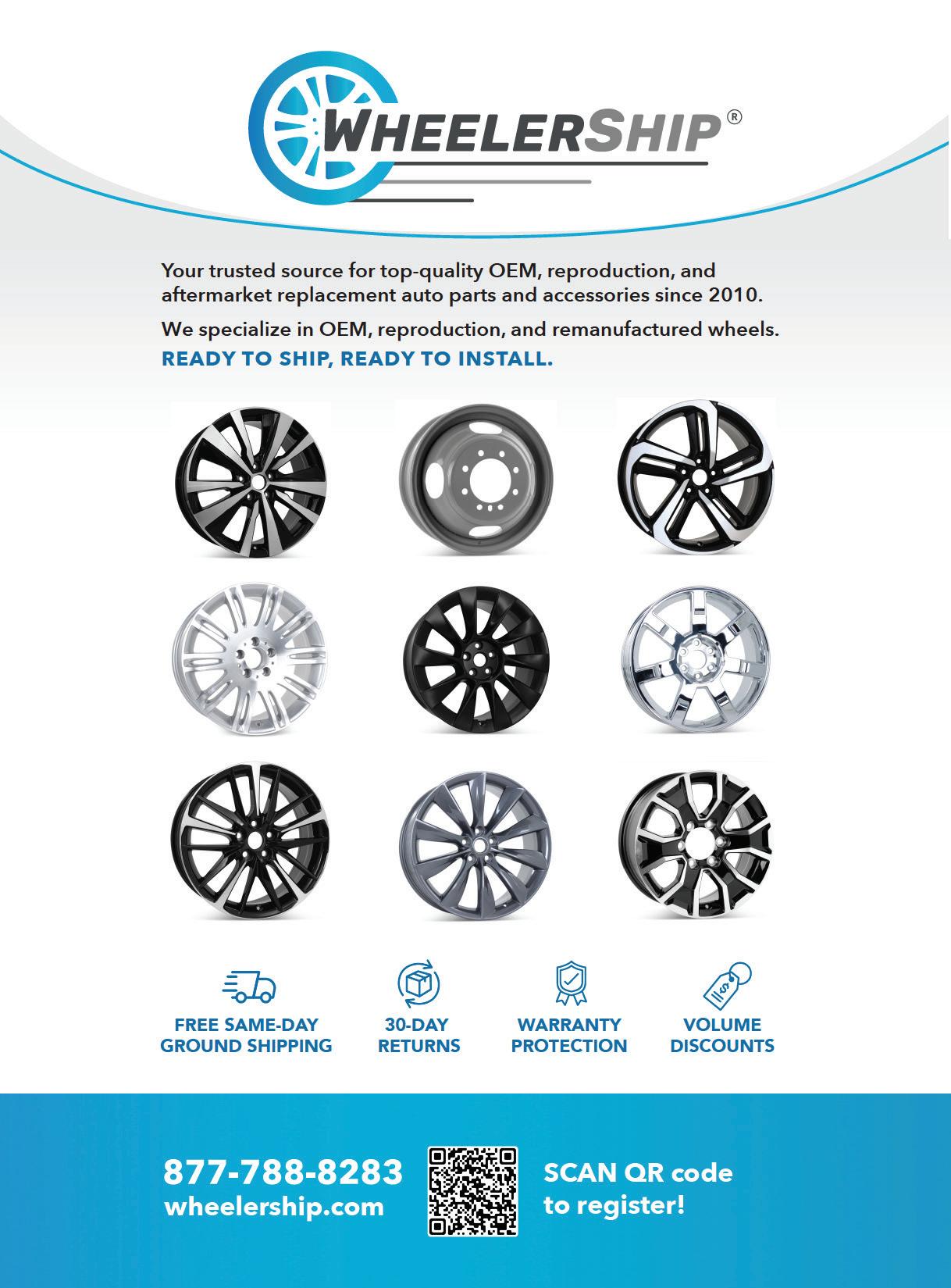
60 MTD February 2024
Business Insight

 By
By
 Randy O’Connor
Randy O’Connor
How to create customer loyalty
BALANCING CUSTOMERS’ EXPECTATIONS WITH YOUR BUSINESS NEEDS
Moving into the new year, it’s likely that you paused to evaluate the balance you have in your life. Balance is important — not only in our personal lives, but in our businesses, as well.
Unless companies can balance customer expectations and business needs, they are likely to either disappoint customers or create unnecessary business losses. With more demanding customers and more power in the customers' hands than ever before, delivering exceptional levels of customer service is absolutely essential.
How can you balance customers’ expectations and your business needs so you create the loyalty that drives repeat business, brand advocacy and ultimately, loyalty? It’s all about promises.
Promises make the investor, your customer, perceive they have a role and some control over what’s about to happen when they bring their vehicle to your shop. Think about this for a second. Vehicles are one of the most crucial resources we have in our lives. Handing a vehicle over to a crew that your customers largely don’t know at all is a big risk.
Moreover, it’s personal and emotional for your customers. As with most everything near and dear to us, we like to be able to have influence. The least you can do is make them feel like they have some control over what’s about to happen. Do that and deliver on those promises and you’re one step closer to loyalty.
Promises also lend an emotional urgency to accomplishing a goal. While your customer’s experience is emotional, both from a cash and time investment standpoint, the same isn’t always true for your team that turns cars out day in and day out. When you put your word on what you’re going to do, you break through your customer’s emotional stress.
This is especially true if you gave the customer the perception of control in advance. You’ve now essentially deflated the stress that we all know most of our customers carry with them when they walk through the door.
As a side note, it’s super helpful if your team members greet your customers, both on the phone and in person, with the goal of reducing their stress, whenever and wherever possible.
Promises are two-way contracts that seal the deal. If your customers can focus on other things, you’ve created a healthier environment. It’s not only healthier for your customers, but healthier for your team members, as well. No calls to check in and nobody is asking, “Well, what about this or that?” All you need are keys handed across the counter and a verbal handshake pronouncing your value and the customer’s validation of that value.
Think about those customers who are good communicators. They’re not only specific about what they want done, but also abiut when they need their vehicle back. They clarify the contract for their own benefit.
We love these customers because they’ve outlined the contract and removed gray areas. Why not turn every customer into a favorite customer by being an equally good communicator?
So how can you deliver promises? First you should look at how your brand promise is being communicated, if at all.
A good example would be your value package. A scenario could be, “While I look these tires up for you, let me tell you about the advantage we provide. All tire purchases include free rotations, free air checks, free alignment and brake checks, as well as our low-price guarantee.”
‘Customers become loyal when they trust the promise your business makes and see that promise materialize in your products and services.’
You’ve essentially just made a brand promise and have communicated it, as well.
Get the sale and you’re already a few steps ahead of the competition.
How about urgency? Well, every customer has a time frame in mind, along with a laundry list of other expectations when they arrive. What if you asked every customer, “What time do you need your car back?” If it works within your schedule and their schedule, you’ve just made a “promise time” with your customer. Those times then should be communicated loud and clear on the work order/digital vehicle inspection and verbally communicated with your service manager.
Finally, establish that two-way contract. Here’s an example: “Ms. Jones, while you’re in today, we’ll give your car a good look over to help you plan for upcoming repairs. We’ll check under the hood, under the car, behind the wheels, etc., and will let you know if there’s anything that needs your attention. Sound good?”
You can train your teams to insert these examples in almost any conversation they have with customers. They’re game-changers.
Customers become loyal when they trust the promise your business makes and see that promise materialize in your products and services. Over time, this trust must not only be constantly delivered, but also reinforced to keep customers loyal. ■


Dealer Development 62 MTD February 2024
Tire and auto industry veteran Randy O’Connor is the Owner/Principal of D2D Development Group (Dealer to Dealer Development Group.) He can be reached at randy@d2ddevelopmentgroup.com. For more information, please visit www.d2ddevelopmentgroup.com.

w i t h
By

Why aren’t more tire dealerships going public?
PRIVATE EQUITY — THAT’S WHY
Michael McGregor
When I first started out in business in the early 1980s, the goal of every ambitious entrepreneur was to build a business large enough to eventually go public. I still recall the metric that was drilled into me back then: hit $50 million in revenue and a few back-to-back years of profitability and you, too, can go public.
The benefits of going public are significant. First, there’s the ability to raise substantial capital by issuing shares to the public in an initial public offering (IPO), as well as secondary offerings. Second, publicly traded companies gain increased visibility, which can enhance their brand image and attract even more customers. Lastly, going public is a liquidity event for the founders and early investors, allowing them to cash in on their success.
Many tire manufacturers are public on an exchange in the United States or internationally. These include Bridgestone Corp., Michelin Group, Continental AG, Balkrishna Industries Ltd. (BKT), Yokohama Rubber Co. Ltd., Sumitomo Industries Ltd., Pirelli & Cie SpA, Hankook Tire & Technology, Goodyear Tire & Rubber Co., Toyo Tire Corp. and Nokian Tyres, among others.
But when it comes to tire and auto service retailers, I can only think of three — Monro Inc., Driven Brands and Icahn Automotive — that are public. I’ve been wondering why there aren’t more. It turns out that there are fewer public companies of all types across all industries.
At the peak in 1996, about 8,000 firms were listed on the U.S. stock market. Coincidentally, in that same year, the National Securities Markets Improvement Act of 1996 was passed, allowing private equity funds of all types to raise large pools of money from an unlimited number of institutional investors. The upshot is that private companies could now raise all the money they needed from private equity or venture capital funds, without even considering an IPO. So over the last 30 years, fewer and fewer companies have been going public. Today, the number of U.S. public companies stands at about 3,700, down by more than half.
But that alone does not tell the whole story. Over this same period, the largest private equity groups have also bought large public companies that they feel have been undervalued and have taken them private.
Don’t think that the U.S. — with an economy in 2023 generating over $26 trillion in GDP — now has half as many companies as when the economy was at $11 trillion GDP. It’s just that companies are staying in private hands. According to Wells Fargo, in 2023 there were five times as many private equity-backed firms in the U.S. as there were publicly held companies. Other than the smallest of businesses, they’re in every part of the spectrum — from companies with $10 million in revenue up to billions of dollars in revenue from former publicly traded companies.
Clearly many tire dealerships, along with many other companies, have opted to steer clear of the complexities and challenges associated with being a publicly traded entity. One downside is that public companies are subject to the scrutiny of shareholders, Wall Street analysts and regulatory bodies. I’ve observed Michael Broderick, the CEO of Monro, ably answer questions from surly analysts at the annual Gabelli Auto Aftermarket Conference held during SEMA week. It didn’t look like fun.
'Many tire dealerships have opted to steer clear of the complexities and challenges associated with being a publicly traded entity.'
But the costs of compliance with regulatory requirements, such as those imposed by the Securities and Exchange Commission (SEC) and the Sarbanes Oxley Act of 2002, are significant. Publicly traded companies must adhere to stringent and transparent reporting standards at substantial legal and administrative costs. Compliance needs to be well-managed so problems that divert management attention from core business operations are avoided.
For tire dealers, private equity offers several advantages over going public. One key benefit is the preservation of operational control. Private equity is not interested in running your business themselves. They want your management team to retain a substantial stake in the company and keep making key strategic decisions with a board of directors’ oversight, of course.
Private equity also provides flexibility in terms of timing and structure. Companies can choose when to engage with private equity investors and negotiate deals that align with their growth plans. This contrasts with the rigid processes associated with IPOs.
Furthermore, private equity often brings operational expertise to the table, particularly in smaller deals. Smart, operationally focused private equity firms collaborate closely with management teams to enhance operational efficiency, implement growth strategies and drive value creation.
Private equity has emerged as a pragmatic solution for tire dealers seeking a capital infusion without completely compromising their autonomy. ■
Michael McGregor is a partner at Focus Investment Banking LLC (focusbankers.com/automotive/tire-and-service). He advises and assists multi-location tire dealers on mergers and acquisitions. For more information, contact him at michael.mcgregor@focusbankers.com.

64 MTD February 2024
Mergers and Acquisitions




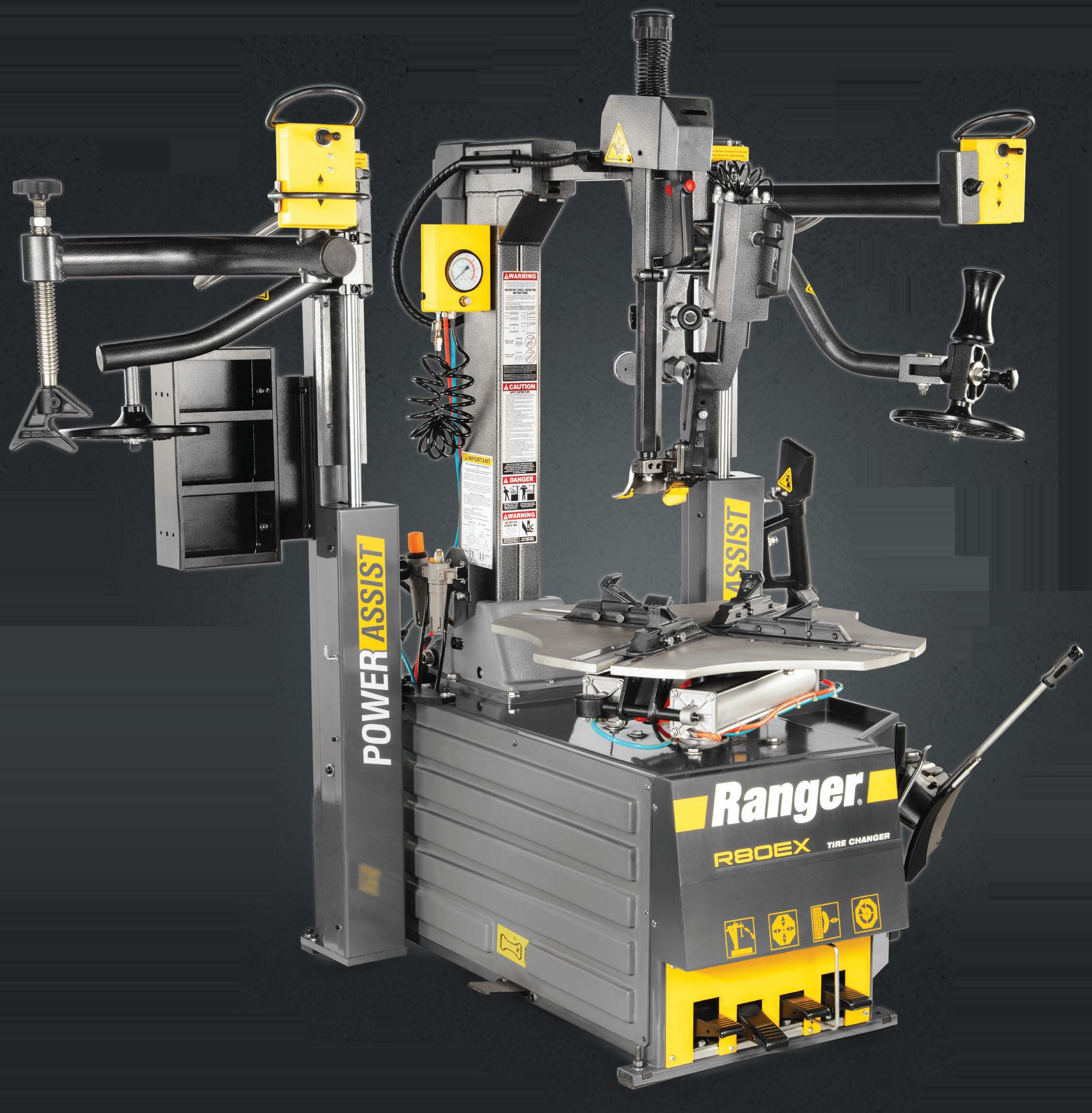




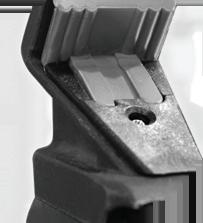
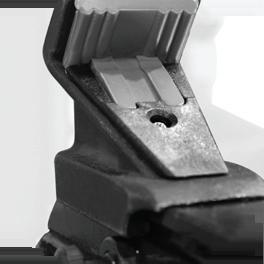







Say hello to more. www.rangerproducts.com *Free shipping to direct shipping points within the 48 contiguous United States only. © 2024 BendPak Inc. Ranger Products is a registered trademark of BendPak. Ranger tire changers are packed with more features, power, and torque, and they’re backed up with an industry-leading warranty; all without straining your budget. If you’re seeking a departure from the ordinary, consider the innovation, efficiency, and satisfaction that come with Ranger – brought to you by BendPak. Connect with us at 1-800-253-2363 or explore further at www.bendpak.com. Model: R80EX Dual Tower Assist SPEED RimGuardTM Wheel Clamps Turboblast™ Bead Seating Bead Handling Tools Bead Handling Tools Tilt-Back Tower Dual-Flange Bead Loosener Durable Forged Steel Foot Pedals Foot-Controlled Tire Inflator 24 Month Warranty OEM Approved Max Performance Free Shipping* Shop Now Shown With Optional Leverless Bead Lifter
By

Are you really listening to what EV customers need?
IF YOU TRULY LISTEN, SALES WILL FOLLOW
Craig Van Batenburg
Great service is not pushy or condescending. Great service is one positive human interaction with another person or group of people. One has a need or a want and the other determines if they can make that happen.
As citizens of this country, we are both service providers and service customers. What does it take to be great at the former? My answer: “When it doesn’t feel like a job.” That’s when you have reached the highest level of service.
How does that happen? When you care about your customers more than your paycheck. Can that be every interaction? No, but it can be many. It starts with listening. Many people in this industry need some listening training. When I am really busy, my listening skills are diminished.
My company, Automotive Career Development Center (ACDC), provides tech support for tire stores and repair shops that service hybrid (HEV), plug-in hybrid (PHEV) and pure electric vehicles (EVs). We need to listen carefully to help them.
When I opened my repair shop over 45 years ago, my listening skills were very bad. I was also very young. I have since learned there are two types of listening. I was pretty good at one of them and needed training on the other.
Recently, a retired couple, now both Prius owners, contacted me. Chris needed some experience, so we took that job in. My former job as a shop owner, service manager and technician kicked back in.
I needed to remember my other listening skill — the one I was taught by a great instructor when I was 40. This is what I call “simpatico” listening.
I studied music from age seven to 18. I took lessons on the guitar, cello, string bass and trombone. Other than the guitar, you needed a “good ear,” as there are no frets or valves on the other instruments. My listening had to be in sync with the other players in the orchestra.
When I tune my trombone, I use an old-fashioned tuning fork. Tap it on your knee and the frequency you hear is the one to tune to. Hold that tuning fork next to another one and it will vibrate at the same frequency. You need to tune into the same frequency the customer is in and you do that by caring enough to help them.
Now, let's put this thinking into a tire store.
For many customers, tires are merely a commodity — just a round, black thing.
What do they know about balancing, alignments, tire pressure monitoring systems, suspensions, steering, ADAS and the overall safety of their multi-ton vehicle? Do they know that EVs require special tires?
‘Many people in this industry need some listening training.’
The first type is “problem-solving” listening. This was my default type.
I have noticed that this is typical of technicians, as we spend our days solving problems. The best technicians I know ask a lot of questions of the service writer or if they have the chance, of the vehicle driver.
I recently hired a 14-year veteran from a local Ford dealership. Chris Bray is really good at diagnostics. ACDC has over 40 HEV, PHEV and EVs in our fleet and Chris had been getting some of the older ones running again and chasing codes.
Along the way, his experience has paid off. Chris and I spent time together, recently working on Toyota and Ford hybrids. The communication is good, as we are both well-trained technicians. We use problem-solving listening.
ACDC is no longer a retail repair shop, but it looks like one. ACDC is in the same building we moved to in 1984. Many of my old customers have moved from gasoline-fueled Hondas to HEV, PHEV and EVs and they will seek me out from time to time.
Most tire dealers, at some point, end up in a face-to-face conversation with the customer. Your regular customers are easy. You know each other and they come back and send their friends.
Do you know why? Remember, most of them were new customers at some point. They came to know you and trusted your expertise.
What do your customers who have moved from internal combustion engine vehicles to EVs really need or want? Just listen and they will tell you. The sales will come.
And finally, let’s also talk about employee compensation. How do you pay your front counter salespeople? Are they in “sales” or customer education?
At Van Batenburg’s Garage, we called our customer-facing employees “transportation consultants,” or TCs, for short. All employees then and now get an hourly wage. If I take care of the people who work at ACDC, they, in turn, will take care of our industry.
We think we do it well, but ACDC is always listening. ■
Craig Van Batenburg is the CEO of Van Batenburg’s Garage Inc., dba Automotive Career Development Center (ACDC), which is based in Worcester, Mass. A 50-year automotive service industry veteran, Van Batenburg provides training for facilities that service — or want to service — electric and hybrid vehicles. For more information, see www.fixhybrid.com or email him at craig@fixhybrid.com.
66
EV Intelligence MTD February 2024

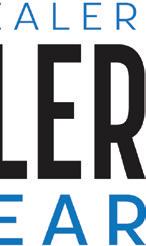

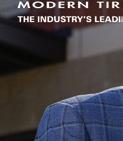























DON’T MISS YOUR CHANCE TO RECOGNIZE AN OUTSTANDING TIRE DEALER! WE WANT TO HEAR FROM YOU! Nominate a candidate for MTD’s 2024 Tire Dealer of the Year Award Established in 1993, Modern Tire Dealer’s Tire Dealer of the Year Award is the oldest, most prestigious honor of its kind. Each year, Tire Dealer of the Year Award candidates are evaluated in five categories: To nominate, go to: www.moderntiredealer.com/awards For more information, contact MTD Editor Mike Manges at mmanges@endeavorb2b.com Do you know an independent tire dealer who excels in these areas? Nominate him or her today! DEADLINE FOR ENTRIES IS MAY 24, 2024. 1. BUSINESS SUCCESS 2. MARKETING SKILLS 3. MANAGEMENT SKILLS 4. INDUSTRY KNOWLEDGE 5. COMMUNITY INVOLVEMENT b V 0 N 1 d WHY BIGGER ISN T ALWAYS BETTER SECRETS OF SERV CE ADVISOR SUCCESS JON LANGERAK –MTD S TIRE DEALER OF THE YEAR –IS BUILDING WONDERLAND TIRE FOR THE FUTURE ‘W- HAV LONG----S O ’ ‘W V LONG----VISION’
Hankook says mutual profitability is a top priority
‘WE ARE DEALER FOCUSED’
By
Rob Williams, president of Hankook Tire America Corp., wasted no time grabbing the attention of roughly 50 key customers at Hankook’s recent Partners Day event in Riviera Maya, Mexico.
“Let me be clear,” said Williams. “We need to make a profit and you need to make a profit. That’s what a true partnership is all about.”
He then moved forward with discussing the plans Hankook has in place to do that.
Williams first pointed to the $1.6 billion investment that Hankook is making in its Clarksville, Tenn., plant, doubling its capacity to 11 million units by 2027, including a new, million-unit-per-year TBR capacity. The U.S. plant will increase production with a start-up in late-2025 and early-2026.
“Today, our mix at Clarksville is roughly 60% for OE and 40% for replacement — maybe higher as OE demand increases,” he said.
Williams told dealers that the investment in the plant means Hankook has big growth expectations in the U.S. Currently, he said, North America accounts for 23.6% of total sales for Hankook worldwide.
Full capacity typically will take a couple of years, Williams told MTD. “When completed, Hankook will be the largest non-government employer with over 2,200 employees in Montgomery County in Tennessee.”
In addition to the Clarksville plant expansion, he said Hankook late last year announced an $800 million expansion of its Hungary plant that will allow better flexibility and sourcing of products. Williams emphasized that the quality of Hankook’s tires are consistent, no matter which plant or country has produced them.
The plant expansions are part of the company’s ST5 2030 goals, in which Hankook wants the following:
• To become the world’s fifth largest tire manufacturer with sales exceeding $13
billion by 2030, with a capacity of 150 million units per year. (MTD currently places Hankook at number seven globally, at $6.8 billion in annual sales);
• Be the number one tiremaker in electric vehicle (EV) tire technology and number three in overall technology;
• Move Hankook to tier-one in brand recognition, with its Laufenn and Aurora brands viewed as tier-two brands, and;
• Achieve EBITDA margin of more than 20%, with operating profit above 10%.
Product offerings were another area that Williams said would help the company achieve its goals.
Hankook introduced its Kinergy XP tire at the meeting and also cited its Dynapro HPX, introduced last November, as an example of new products.
“We will continue with new and innovative products. We need to be responsive to what our dealers are requesting,” Williams told MTD in a one-on-one, sit-down interview during the event.
Williams told dealers that “Hankook is the leader in the EV segment” with its iON line of tires. He said the company will continue to promote and move forward in the EV tire segment.
On the TBR side of the business, Hankook plans to launch new tire lines in 2024, the company’s first new products in two years, as well as key line expansions.
• Smartline AL52, a premium long-haul tire with enhanced wear over the AL21;
• SmartFlex DL15+, a long- and regional haul size expansion to include 11R22.5 and 11R24.5 in February;
• SmartFlex AH51, a low rolling resistance long and regional haul tire in the third quarter, and;
• SmartFlex DH52, a regional haul low rolling resistance for compliance with U.S. Environmental Protection Agency Phase 2 standards, which Hankook will bring to market in May.
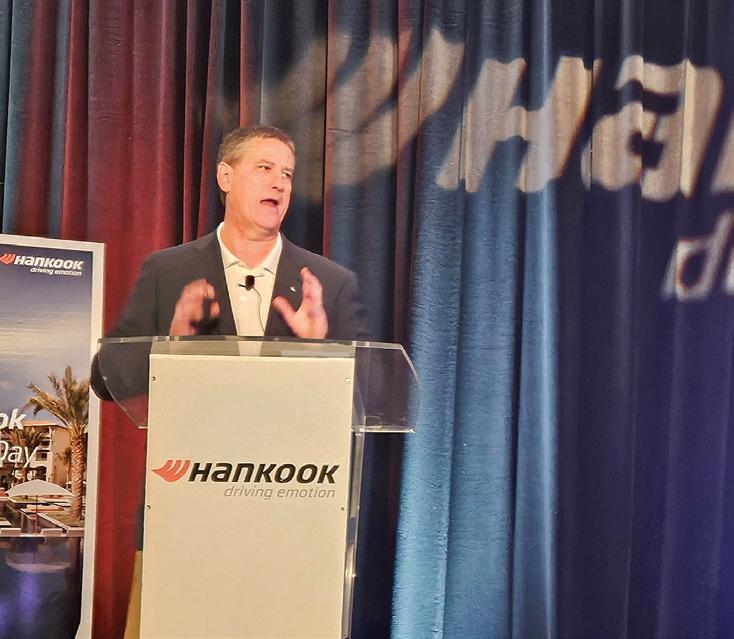
to make a
to make a
and you
In looking at the TBR market, Williams said 2021 and 2022 years were unprecedented growth years for commercial truck tires, but nobody thought it would continue, which it didn’t. He told dealers the total replacement market was down 24% in 2023, but Hankook only decreased by 17%.
While admitting that domestic supply on the TBR side is still a few years away, Williams explained his company’s reasoning for still working closely with OEMs. “We believe fleets buy from the same tiremakers whose tires came on the truck.”
Williams also said Hankook officials don’t have a great understanding of demand for 2024 yet, but are expecting it to be flat with 2023 numbers.
In looking at Hankook’s relationship with its dealers, Williams said, “we want to be easy to do business with. We must have the right inventory in the right place at the right time.”
Currently, Williams said “our inventory is close to capacity for the U.S. on the replacement side, with fill rates in the 85% to 90% range. Our SKUs are hiking, with the exception of some LT sizes that had been coming from the Daejong (South Korea) plant. Fill rate is no longer a problem.
“We must be on the ground with you — no virtual sales meetings,” he added. In return, Hankook is looking for growth in market share with its existing customers.
Williams told MTD his main message to dealers is that “truly, our growth ambitions with phase two and three plant expansions are unlike any other manufacturer. And the only way we can reach those
68 Focus on Industry MTD February 2024
MTD staff
“We need
profit
need
profit,” Rob Williams, president of Hankook Tire America Corp., told attendees at the company’s Partners Day event. “That’s what a true partnership is all about.”
Photo: MTD
growth aspirations is to grow with our dealer partners and to truly understand what their go-to-market strategies are and to join them to make sure our product is truly benefiting their growth.
“We must grow our share with our current dealers and look at growth with new dealers in strategic areas where we have lower market share than what we aspire to have. Our growth ambitions are very strong and we need our dealers to help us.
“Our team has to be there for our dealers. We need to train them, support them and be out in the field. This is where we stand out. We have a veteran salesforce. Today, what happened was a launch. The real magic is when I get my team with (Hankook customers’) teams and they sell the product. Our new training program is where we want them to go to get to sell Hankook products, whether it’s online or in person.”
An example of working with dealers is the company’s lowering of the sales brackets of its Hankook One associate dealer program. The program currently has roughly 4,000 members.
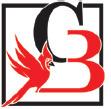

“We want our aftermarket programs to help our dealers sell out the Hankook brand. Additionally, our car dealer program is also very aggressive ... to have our dealers sell to the car dealer channel and (we) have been growing that. On the commercial side, we’ve increased our rebate program to sell out there, as well.”
K.C. Jensen, newly appointed vice president of PC/LT sales, told dealers that Hankook was going to run counter to other companies by increasing its number of regions from three to four, “which means we will have more boots on the ground.”
He acknowledged inventory issues during the past year, but said sell-in sales improved in the second half of 2023. However, sellout recovery speed is still slow.
“We are going to be as transparent as possible moving forward,” Jensen told attendees. “You are our representatives in the field and you know what is going on.”
He said that with more tires being produced in the U.S., “the pressure is on,” Jensen also told dealers the company has strong brands in Hankook and Laufenn, with full intent to grow both.



He said that the company is putting more resources in place to police its MAP program, acknowledging the pricing that both Amazon and Walmart have displayed.
“We are dealer-focused and we need to earn your trust,” Jensen said.
Brooklyn Emery, brand communications manager for Hankook Tire America Corp., outlined key initiatives the company is engaging in at the consumer level.
Globally, Hankook is sponsoring the Formula E racing series.
For the U.S. market, Hankook will continue its signage program at Major League Baseball (MLB) stadiums, although it is no longer going to be the official tire of MLB.
Emery also told dealers that Hankook led the industry in 2023 with its share of voice for EV tires. The company used its iON launch, two EV focused consumer events and the SEMA Show — coupled with an ongoing EV focused social media campaign — to achieve this goal.
For 2024, the company will continue consumer events and social media and will supply dealers with more point-of-sale promotional materials.
THE LEADING BUSINESS BROKERS IN THE TIRE & AUTOMOTIVE SERVICE INDUSTRY
With over 40 years of combined experience and having successfully represented sellers in over 50 transactions in recent years, makes Cardinal Brokers the advisor of choice when selling your business.
Focusing exclusively on the tire and automotive service industry, we understand the unique aspects of operating and selling your business. We assist with all phases of the process.
You only sell your business once, select an advisor with the experience and knowledge you and your family deserve.
RECENT CLIENTS









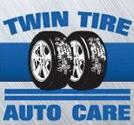

69 www.ModernTireDealer.com KNOW YOU WILL GET THE BEST VALUE FOR YOUR BUSINESS. Call 585-310-2466 or visit us today at cardinalbrokers.com to schedule a confidential discussion about selling your business. JOEL ZALESKI, CPA, PARTNER joel@cardinalbrokers.com DENNIS MCCARRON, PARTNER dennis@cardinalbrokers.com
2401MTD_CardinalBrokers.indd 1 11/30/23 3:13 PM
Point S achieves record expansion in 2023
‘WE BELIEVE WE’RE SET FOR THE FUTURE’
By
Joy Kopcha
Point S USA added a record number of new stores in 2023 — 69 — and expanded into three new states: Michigan, Maine and Maryland. The pace puts the group ahead of schedule in its goal of becoming a 500-store cooperative by 2028.
To put that growth into perspective, 69 new stores decimates the previous record that was set in 2022, when dealers added 28 Point S locations in the U.S.
“We mean it when we say were going to grow,” said Point S CEO Walter Lybeck. “We’re going to make this happen.”
Of the 69 new stores, 39 are branded Point S locations, while the other 30 joined via the cooperative’s new associated dealer program, which allows tire dealers to join the group without rebranding. (The goal is to ultimately convert those associated dealer stores into fully branded Point S members.)
Existing Point S dealers added 22 new stores in 2023. Eric Gill, the largest Point S dealer in the U.S., was the leader in that front, adding 15 new Gills Point S locations.
Craig Bruneel, current chairman of the board of Point S dealers, said, “We are positioning Point S to be valuable to single store owners and multi-store owners.”
ONE EXPANSION STORY
Among the new members to join Point S in 2023 is Bay Area Point S, a seven-store operation in Maryland owned by Brandon Tracey, John Fisher and Michael Gosnell.
Tracey and Fisher were long-time employees of the business and were offered the opportunity to become its owners in 2023. They added Gosnell as a minority partner. The business had previously been part of Goodyear Tire & Rubber Co.’s Tire and Service Network, but Tracey and Fisher were looking for a new option. Other groups recruited them, but they landed with Point S.
Tracey said they liked the idea of having an ownership stake and saw a path to improving profitability.

“We want to take care of our customers,” said Tracey. And doing that while “knowing that you’re a part of something” bigger was a real draw.
The decision to join Point S has ushered in big changes for their stores, from new branding and signs to new tire brands. Tracey said their inventory previously was 99% Goodyear products, but Fisher said going forward, “Nokian will be our primary brand.”
Their seven stores are also the first in Maryland to use the Point S brand. But they don’t see that as a hinderance.
Fisher said that “it’s not what’s on the building, it’s who is in the building.”
He believes his and Tracey’s longevity as store managers — and the long-time service of other employees — is what keeps customers coming back.
“We want to expand,” said Tracey. “People in our area aren’t familiar with Point S, but they will be.”
Fisher said, “When we get reviews, we don’t want to see ‘a great price.’ We want customer service reviews,” and that’s why they train their team to take extra steps to take care of customers. It might mean making sure an older customer’s finished
vehicle is pulled up close to the front door or it might be opening the door for a parent with a stroller and small children in tow.”
AN UPDATED LOOK
Point S leaders unveiled new initiatives during the group’s annual dealer meeting. Clint Young president and chief operations officer, revealed an updated store branding style guide.
He noted this year marks nine years since the group transitioned from the red, white and blue colors and branding of Tire Factory to the blue and green Point S style.
The latest store branding focuses on five key exterior elements that the group wants to streamline across all locations:
• Building sign and a pole sign;
• Gray exterior building paint, with dark gray used on bay doors and the traditional blue and green as accents;
• Entrance sign, listing hours of operation and services offered)
• Welcome sign above the door, and;
• Service bay signage.
To incentivize members to update their stores, Point S will hold a year-long contest
Focus on Dealers
Point S added a record 69 new locations in 2023 to reach 336 storefronts, including the seven Bay Area Point S stores in Maryland. The business’ primary owners are John Fisher, center, and Brandon Tracey, right. Michael Gosnell, left, is a minor partner. “We want to take care of our customers,” said Tracey.
Photo: MTD
70 MTD February 2024
to gather entries for the 2024 Ultimate Store Makeover. The top three stores will earn cash prizes, with $20,000 going to the grand prize store.
In addition to updating the look of buildings, during the annual Point S meeting, the IT department flipped the switch on new member websites.
Regina Fleming, services and solutions architect for Point S, said the updated sites are mobile-friendly and built with tools to improve search engine optimization, so customers can find a local Point S tire dealer.
Fleming said 80% of customers are likely to look at a dealer’s website from a mobile device.
And in that vein, she encouraged dealers to think of it as “more than a website. It’s a foundation.”
In 2023, Point S dealers increased their tire unit sales by 1%, but net sales dropped, which the group attributed to consumers deferring to lower-tiered options.
Lybeck talked about increasing the group’s online tire sales as a path to future growth. He said nationally, there
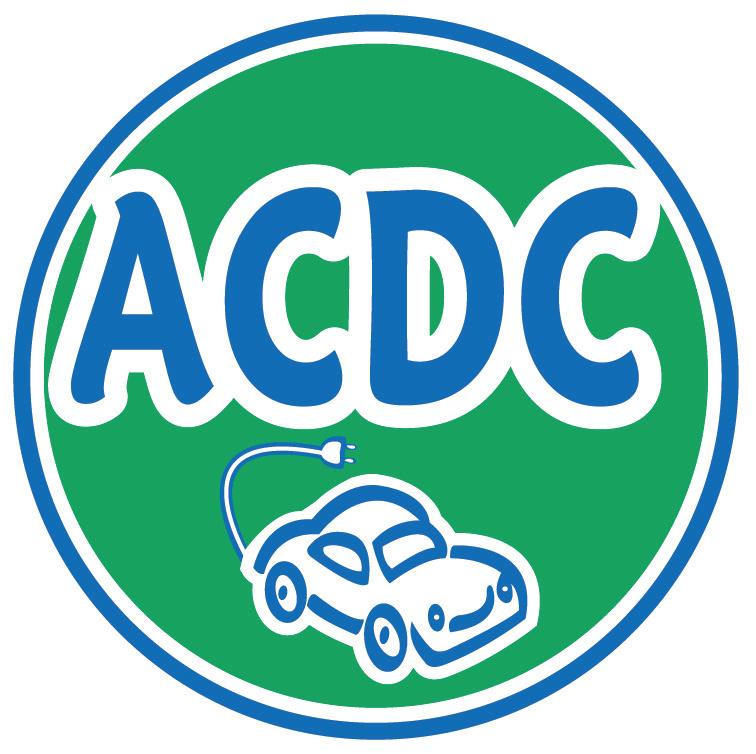
are estimates that 10% to 12% of tires are sold online. Point S isn’t hitting that mark.
Electric vehicles (EVs) are another growth avenue. And while tiremakers remain mixed on whether EVs need EVspecific tires, he said, “EVs are coming.”
Those growth opportunities come as some other uncertainties linger, Lybeck said. Inflation falls in the “nothing-we-cando-about” category — except to ensure that both the cooperative and dealers keep up on pricing and labor rates are keeping up with wage increases. “If you fall behind, you’re losing money.”
Supply chain also remains tricky. He called it “an absolute disaster over the last three years.” But the “herky-jerky” environment also served as a wakeup call.
“Our warehouses and our supply chain (were) not flexible enough. We needed more capacity. We needed more people. We needed to be able to respond faster.”
Over the past two years, Point S has rebuilt its strategy and of the eight warehouses it owned two years ago, Lybeck said the cooperative has either moved, closed or expanded seven of those locations.
The group closed three warehouses in Memphis and opened a new facility in 2023. Point S also closed a warehouse in Gresham, Ore., that was just 10 miles from its Portland headquarters.
The group opened a new warehouse in eastern Oregon in Umatilla, which in six months’ time grew to be almost as large as a warehouse the group operated in Denver for a dozen years.
Point S recently exited the Denver warehouse and partnered with K&M Tire Inc. to take it over.
Exiting Denber will allow for a 40,000 square-foot expansion in Portland to increase flexibility, Lybeck said.
“We had to take a ton of action as a result of supply chain,” though Lybeck noted Point S can’t problems with ships, ports and containers directly.
Point S also can’t prevent fresh problems from popping up. That includes a January notification that containers from India would soon be assessed a $5,000 surcharge due to “Red Sea pirates.”
The good news, Lybeck said, is that “we believe we’re set for the future.”
71 www.ModernTireDealer.com We Train Managers and Technicians In Hybrid and EV Sales + Service www.FIXHYBRID.com OFFICE: 508-826-4546
CRAIG@FIXHYBRID.COM HOURS: 9-5 EST MON - THURS TRAINING CENTER LOCATED IN WORCESTER, MASSACHUSETTS • HV Safety Certification • 450 Page Technical Book written in House • Service Advisor Training • Hybrid EV Tools and Equipment • EV Lift Safety Training • Live Online Training • Recorded Web Training • Hands-On-Classes • Consulting TESLA TRAINING 2401MTD_VanBatenburgsGarage.indd 1 12/18/23 11:14 AM
EMAIL:
TPMS Ford F-150 — 2023
OPERATION AND COMPONENT
DESCRIPTION
When directed to train any TPMS sensors, use only the sensor training procedure outlined in this article. Do not use the TPMS reset procedure outlined in the owner’s literature as this procedure does not program new sensors to the module.
The TPMS uses four valve stem mounted sensors to monitor tire pressure. These sensors wirelessly transmit tire pressure data to the RTM. The RTM is a radio signal receiver which collects the tire pressure data and sends the information to the BCM along a LIN.
All TPMS functions are controlled by the BCM. The BCM compares the tire pressure data sent by the RTM with a programmed tire pressure. This programmed pressure is specified on the VC label and cannot be changed. If the actual tire pressure is less than the programmed tire pressure, the BCM sends a low tire pressure message to the IPC along the HS-CAN3. The IPC responds by illuminating the TPMS warning indicator and displaying a low tire pressure message in the message center.
The TPMS sensors are trained (calibrated) to the BCM which records the unique identifier for each TPMS sensor and records the location of each sensor based on the training (calibration) order. It is necessary to train (calibrate) the TPMS sensors after a tire rotation on vehicles with different front and rear tire pressures. The BCM does not automatically recognize the sensor identifiers have been moved to different positions and retains the original position information for each sensor.
COMPONENTS
BCM: The BCM is a multifunction module which monitors all sensor inputs and all CAN messages relating to the TPMS. The BCM records and retains the unique sensor
identifier of each TPMS sensor. For the BCM to learn a new sensor location, the sensors must be trained (calibrated) to the BCM. Additionally, the sensors must be trained when a new BCM is installed.
When installing a new BCM, there are several procedures that must be carried out in order for the module to function correctly. These procedures include, but are not limited to: PMI, anti-theft parameter reset, programming keyless entry remote and setting customer preferences.
TPMS pressure data is cleared from the BCM when the module is flashed or reconfigured. When the data is cleared, the tire pressure DID’s reset to the factory default of 1033 kPa (149.96 psi) and the IPC displays dashes for the tire pressures. The sensors must be activated to transmit the latest tire pressure information.
RTM: The RTM is a radio signal receiver which collects the tire pressure data from the TPMS sensors.
TPMS sensor: Each of the four TPMS sensors contains a battery, a tire pressure sensor and a radio transmitter. The TPMS sensor radio transmissions are sent approximately once every 60 seconds when the vehicle speed exceeds 20 mph.
TPMS PROGRAMMING
Programming With Scan Tool
The TPMS can be placed into learn mode using a diagnostic scan tool or manually where a diagnostic scan tool is not available. The horn will sound once and the TPMS indicator will flash if the training mode has been entered successfully. If equipped, the message center will display TRAIN Left Front (LF) TIRE.
Enter Training Mode With IDS Scan Tool
1. Select Chassis.
2. Select TPMS.
3. Select Training Mode.
Use the General Equipment: Ford Diagnostic Equipment
Enter Training Mode With FDRS Scan Tool
1. Select Toolbox.
2. Select BCM
3. Select BCM — TPMS Initialization.
Use the General Equipment: Ford Diagnostic Equipment.
Programming Without Scan Tool
The horn will sound once and the TPMS indicator will flash if the training mode has been entered successfully. If equipped, the message center will display TRAIN
Left Front (LF) TIRE.
1. With the ignition OFF, press and release the brake pedal.
2. Using the start/stop switch, position the ignition from OFF to RUN three times, ending in the RUN position.
3. Press and release the brake pedal.
4. Position the ignition to OFF position.
5. Using the start/stop switch, position the ignition from OFF to RUN three times, ending in the RUN position
TIRE PRESSURE SENSOR REMOVAL AND INSTALLATION Disassembly
The TPMS sensor battery may release hazardous chemicals if exposed to extreme mechanical damage. If these chemicals contact the skin or eyes, flush immediately with water for a minimum of 15 minutes and get prompt medical attention. If any part of the battery is swallowed, contact a physician immediately. When disposing of TPMS sensors, follow the correct procedures for hazardous material disposal. Failure to follow these instructions may result in serious personal injury.
The TPMS sensor cannot be removed without disassembly of the wheel and tire.
Ford recommends the following for vehicles with carbon fiber and alloy wheels:
Tire Changer: Ford requires center clamp style tire changers. Anything else, especially tabletop style machines, are highly likely to damage the wheel. Do not use tabletop design machines that grab onto the inside of the wheel and that ride on the front wheel flange to remove the tire. Wheel damage will occur.
Tire Balancer: Ford requires the use of wheel balancers that do not contact the wheel face. Wheel damage will occur.
Failure to follow the instructions below may result in damage to the TPMS. The TPMS sensor is mounted to the valve stem. Removal of the valve stem requires demounting the tire from the wheel and removal of the TPMS sensor. Use only the Digital Tire Pressure Gauge any time
TPMS MTD February 2024
72
TORQUE SPECIFICATIONS Component Torque Wheel Nut 150 lb. ft (204 Nm) TPMS Sensor 13 lb. in (1.5 Nm)
tire pressures are measured to be sure that accurate values are obtained.
1. Remove the wheel and tire. The valve stem is connected to the TPMS sensor. Do not pull the valve stem from the wheel, or damage to the sensor will occur. If a new TPMS sensor is being installed, remove and discard the valve stem-to-sensor screw and the sensor.
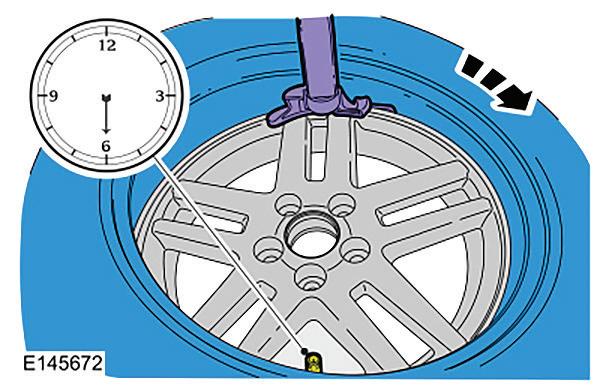
stem must be installed whenever a new tire or wheel is installed.
7. Using a suitable valve stem remover/ installer, remove and discard the valve stem. Use the General Equipment: Wooden Block. Use care not to damage the wheel surface when removing the valve stem.
When installing a new wheel, always
3. Position the wheel to align the valve stem with the machine arm, at the 6 o’clock position, and mount the bottom bead of the tire.
4. Reposition the wheel to align the valve stem with the machine arm at the 6 o’clock position and mount the top bead of the tire.

Place the wheel and tire assembly on the tire machine turntable with the valve stem at the 11:30 position and the machine arm at the 12 o’clock position to demount the outer bead. Mitchell 1

2. Remove the valve stem core and fully deflate the tire. Do not allow the tire beads to move beyond the wheel midplane (middle of the wheel) when separating the beads from the wheels, as damage to the TPMS sensor may occur. Tire and valve stem position is critical to prevent damage to the TPMS sensor when using a paddle-type bead separator. Some machines may have a nylon roller bead separator at the 12 o’clock position instead of the paddletype bead separator at the 3 o’clock position. A paddle type is shown, but a roller type is similar.
3. For a paddle-type tire machine, position the valve stem at the 12 o’clock or 6 o’clock position and the paddle at the 3 o’clock position. For a roller-type tire machine, align the valve stem with the roller at any position.
4. Place the wheel and tire assembly on the turntable of the tire machine with the valve stem at the 11:30 position and the machine arm at the 12 o’clock position and demount the outer bead from the wheel. Index-mark the valve stem and wheel weight positions on the tire.
5. Reset the wheel and tire assembly on the turntable of the tire machine with the valve stem at the 11:30 position and the machine arm at the 12 o’clock position and dismount the inner bead from the wheel.
6. Remove and discard the TPMS sensorto-valve stem screw. Separate the TPMS sensor from the valve stem. A new valve
install a new valve stem and sensor screw. Reuse the TPMS sensor from the previous wheel if possible.
8. Position the new valve stem onto the TPMS sensor and install the new screw. To prevent TPMS sensor and valve stem damage, the valve stem must be installed onto the TPMS sensor and then installed into the wheel as an assembly.
Assembly
Damage to the TPMS sensor may result if the tire mounting is not carried out as instructed.
1. Using a suitable valve stem installer, install the new valve stem and TPMS sensor assembly. Use the General Equipment: Wooden Block.
It is important to pull the valve stem and TPMS sensor assembly through the wheel hole in a direction parallel to the valve stem hole axis. If the assembly is pulled through at an angle, damage to the valve stem and sensor assembly may occur. Use care not to damage the wheel surface when installing the valve stem and TPMS sensor assembly. Lubricate the valve stem with soapy water and install the valve stem and TPMS sensor assembly into the wheel using a block of wood and a suitable valve stem installer.
2. Position the wheel on the turntable of the tire machine, then lubricate and position the bottom bead of the tire on the wheel. Lubricate the tire beads using a suitable fast-drying, corrosion-inhibiting tire bead lubricant. Do not mount the tire at this time.
5. Inflate the tire to the pressure specified on the VC label located on the driver door or door pillar. Use only the Digital Tire Pressure Gauge any time tire pressures are measured to be sure that accurate values are obtained.
6. Proceed to the next steps if the tire beads do not seat at the specified inflation pressure.
• Relubricate the tire bead and wheel bead seat area.
• Install a remote valve and pressure gauge.
• Wear eye and ear protection and stand at a minimum of 12 feet away from the wheel and tire assembly.
• Inflate the tire using the remote valve and tire gauge until the beads have seated or until the pressure gauge is 20 psi more than maximum inflation pressure on tire sidewall. If beads have not seated, deflate the tire and proceed to the next step.
• Place the wheel and tire assembly in an OSHA-approved tire safety cage.
• Inflate the tire using the remote valve and pressure gauge until the beads have seated or until the pressure gauge is 276 kPa (40 psi) more than maximum inflation pressure on the tire sidewall. Do not exceed 276 kPa (40 psi) above the maximum pressure on tire sidewall. Install a new tire if the beads do not seat at this pressure.
WARNING: If there is a need to exceed the maximum pressure indicated on the sidewall of the tire in order to seat the beads, follow all steps listed above. Failure to follow these steps may result in serious personal injury. These steps should only be carried out if the tire beads cannot be seated by inflating the tire up to the maximum inflation pressure listed on the tire sidewall.
7. Install the wheel and tire. ■
Information for this column comes from the tire pressure monitoring systems data in ProDemand, Mitchell 1’s auto repair information software for domestic and import vehicles. Headquartered in San Diego, Mitchell 1 has provided quality repair information solutions to the automotive industry since 1918. For more information, visit www.mitchell1.com.
www.ModernTireDealer.com 73
TPMS
During assembly, align the valve stem with the machine arm at the 6 o’clock position to mount the top bead of the tire. Mitchell 1

MTD February 2024 74 WHEN YOU CONTACT ONE OF OUR ADVERTISERS PLEASE BE SURE TO MENTION YOU SAW THEIR AD IN MODERN TIRE DEALER ADVERTISER PAGE WEBSITE ACDC 71 www.fixhybrid.com Alligator Front Cover Tip www.alligator-tpms.com/MTD American Omni Trading 15 www.vercellitire.com American Omni Trading 63 www.american-omni.com/cropmax Ascenso Tires North America 55 www.ascensotiresna.com Atturo Tires 5 www.atturo.com Autel 41 www.autel.com BKT USA Inc. 11 www.bkt-tires.com Bridgestone Off-The-Road 49 www.commercial.bridgestone.com/en-us/off-the-road Bridgestone Tire 23 www.bridgestonetire.com Cardinal Brokers 69 www.cardinalbrokers.com Continental Tire, OTR Products 56 www.continental-specialty.com Cosmo Tires 29 www.cosmotires.com General Tire 25 www.generaltire.com Groundspeed Tires 17 www.groundspeedtires.com Hunter Engineering Company 53 www.hunter.com/hawkeye-xl Induction Innovations 43 www.theinductor.com John Bean 13 www.johnbean.com K&M Tire 47 www.kmtire.com/mrtire Ken-Tool 58 www.kentool.com Kenda Tires USA IBC www.kendatractionrewards.com Kerridge Commercial Systems 37 www.kerridgecsna.com Linglong Americas Inc. 7 www.linglongtire.com MaddenCo 39 www.maddenco.com Maxxis Tires 31 www.maxxisaccelerate.com Milton industries 57 www.miltonindustries.com Nitto Tire U.S.A. Inc. BC www.nittoenthusiastcircuit.com/apply Pre-Q Galgo Corporation 59 www.pre-q.com Radar Tires 9 www.radartires.com/premium Ranger Products 19 www.rangerproducts.com Ranger Products 65 www.rangerproducts.com Sentury Tire USA 45 www.delintetbr.com Tireco Inc. 27 www.milestartires.com Transamerica Tire Company Ltd. IFC www.predatortires.com WheelerShip LLC 61 www.wheelership.com ZC Rubber America Inc. 51 www.arisuntires.com
Ad Index

BUY MORE, EARN MORE. Earn Quarterly Cash-Back Rewards Dealer Locator on KendaTire.com Enhanced Dealer Performance Dashboard ‘Double Dollar’ Promotions Flexible Payment Options Improved Mobile Access US-Based Sales Support & Warranty Team Trade Area Management for Dealer Success Realistic MAP Policy Access to Kenda E-University Join the New and Improved 2024 Kenda Traction Associate Dealer Program and Earn More Rewards with Each Tire Purchase. Learn more about becoming a Kenda Traction associate dealer at KendaTractionRewards.com. Premium Performance at a Value Price for Consumers Strong Margin Opportunities for Dealers Full Product Screen: Ohio-Designed for North American Market Kenda Traction Payout Chart Tier 1 Tier 2 Tier 3 Quarterly Unit Purchases 60 250 400 Annual Unit Purchases 240 1000 1600 Traction Dollars per Tire $1.00 $2.00 $3.00 Purchases are tracked and reported by your distributor so all you have to focus on is how you’re going to spend your rewards.

























 JMike Manges
JMike Manges





























 By John Healy
By John Healy


































































































































































































































































































 Dennis McCarron
Dennis McCarron


 By
By
 Randy O’Connor
Randy O’Connor






















































